-

 Das Dekameron, by Giovanni Baccaccio, illustrated by F. v. Bayros. With a foreword by Hanns Heinz Ewers (Wilhelm Borngräber Verlag, Berlin., 1913) 5.25"x7.5", 612pp + 4 pages of ads, hardcover, half buckram with gilt title and decorations, very good condition. German language of Boccaccio's Decameron with 6 illustrations by Franz von Bayros. The Decameron, (subtitled Prencipe Galeotto or Prince Galehaut), is a collection of novellas by the 14th-century Italian author Giovanni Boccaccio (1313–1375). The book is structured as a frame story containing 100 tales told by a group of seven young women and three young men sheltering in a secluded villa just outside Florence to escape the Black Death, which was afflicting the city. To make their exile more pleasant each of the ten tells the others one story every day. The Decameron records the narratives of ten days -- 100 stories. Boccaccio probably conceived of The Decameron after the epidemic of 1348, and completed it by 1353. These tales run the entire range of human emotion: grief, love, humor, anger, revenge. Many are based on oral folklore. Boccaccio's ten narrators thus retell already familiar stories about errant priests, rascally husbands, and mischievous wives. Variants of these stories are known in many cultures, but no one formulates them more cleverly or relates them more eloquently than does Boccaccio. In addition to its literary value and widespread influence, it provides a document of life at the time. Written in the vernacular of the Florentine language, it is considered a masterpiece of classical early Italian prose.
Das Dekameron, by Giovanni Baccaccio, illustrated by F. v. Bayros. With a foreword by Hanns Heinz Ewers (Wilhelm Borngräber Verlag, Berlin., 1913) 5.25"x7.5", 612pp + 4 pages of ads, hardcover, half buckram with gilt title and decorations, very good condition. German language of Boccaccio's Decameron with 6 illustrations by Franz von Bayros. The Decameron, (subtitled Prencipe Galeotto or Prince Galehaut), is a collection of novellas by the 14th-century Italian author Giovanni Boccaccio (1313–1375). The book is structured as a frame story containing 100 tales told by a group of seven young women and three young men sheltering in a secluded villa just outside Florence to escape the Black Death, which was afflicting the city. To make their exile more pleasant each of the ten tells the others one story every day. The Decameron records the narratives of ten days -- 100 stories. Boccaccio probably conceived of The Decameron after the epidemic of 1348, and completed it by 1353. These tales run the entire range of human emotion: grief, love, humor, anger, revenge. Many are based on oral folklore. Boccaccio's ten narrators thus retell already familiar stories about errant priests, rascally husbands, and mischievous wives. Variants of these stories are known in many cultures, but no one formulates them more cleverly or relates them more eloquently than does Boccaccio. In addition to its literary value and widespread influence, it provides a document of life at the time. Written in the vernacular of the Florentine language, it is considered a masterpiece of classical early Italian prose. -
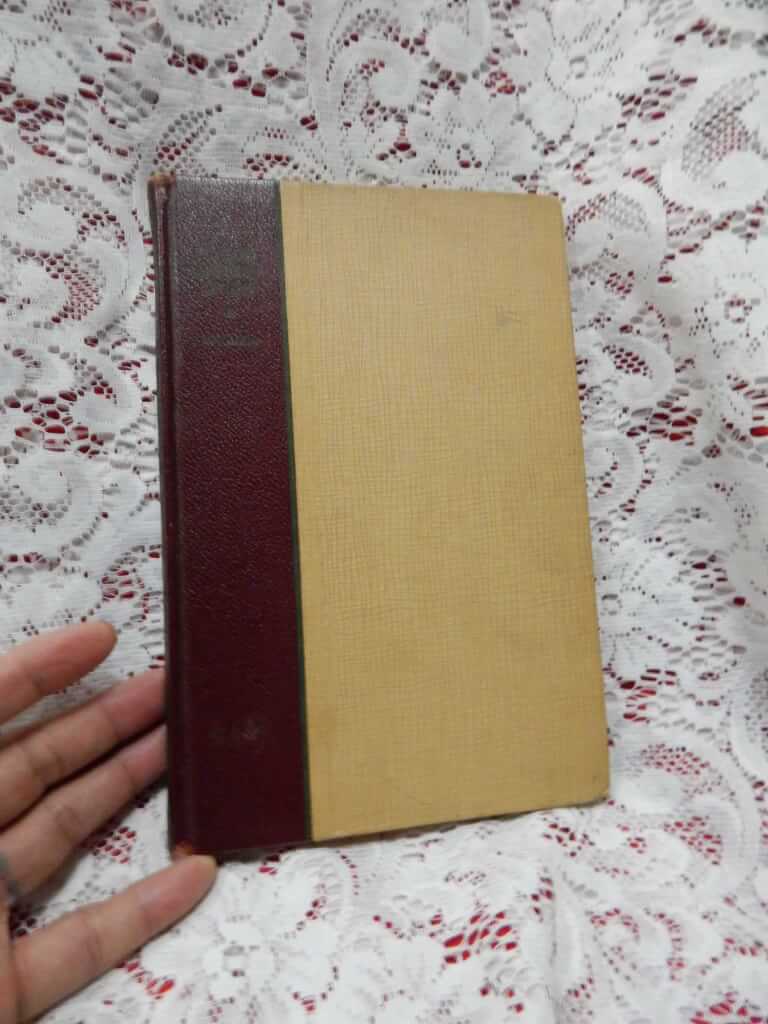
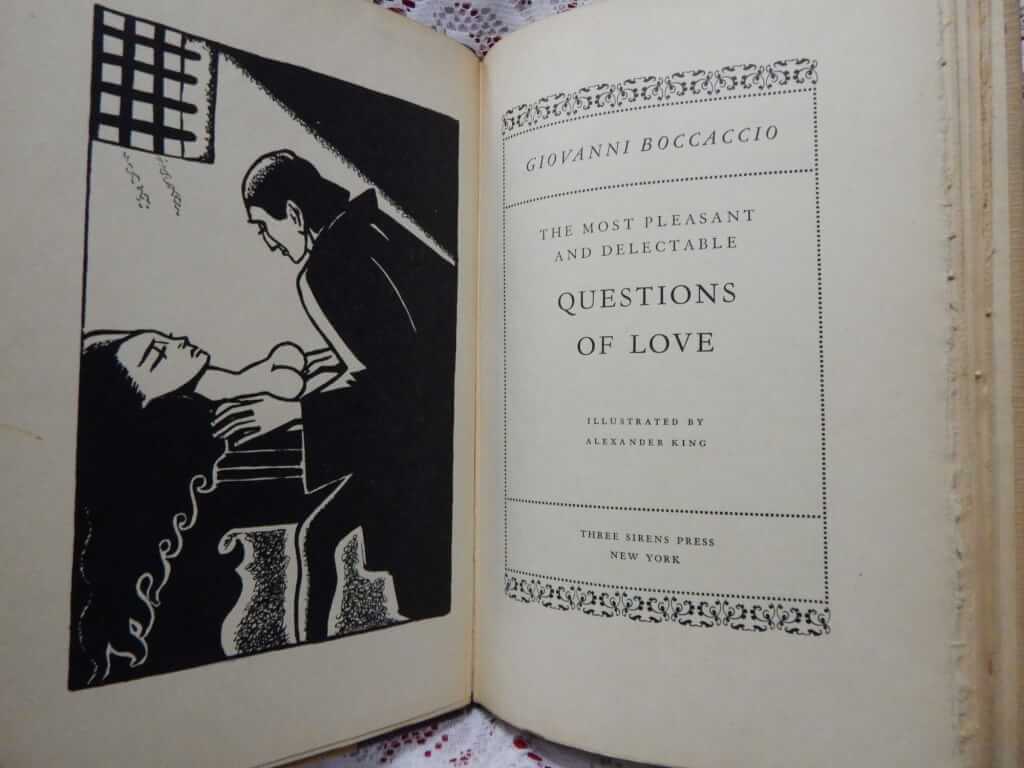 The Most Pleasant and Delectable Questions of Love, by Giovanni Boccaccio, illus. by Alexander King (Three Sirens Press, [copyright, Illustrated Editions Company, New York] 1931) 6.5"x9.5", 133pp, gilt top-edge other edges deckled, tan and maroon boards, binding good, some soiling and edges bumped. "The translation of 1566 [the fourth part of Filocolo] by H. G. Put into modern English with an introduction by Thomas Bell." This book is 13 chapters of one of Boccaccio's longer works, "Il libro di Difinizioni", first translated into English by "H.G." (probably Henry Grantham) in London, 1566. In these chapters, a group of young people have gone to the country for the day. One of the young women is chosen "The Queen of Love." Each young person tells a love story and poses a question about love. The group answers; there is no right or wrong. But the final arbiter, "The Queen of Love," holds the answers. Giovanni Boccaccio (1313-1375) was an Italian author and poet, a friend, student, and correspondent of Petrarch, an important Renaissance humanist and the author of a number of notable works including the Decameron, On Famous Women, and his poetry in the Italian vernacular. Boccaccio is particularly notable for his dialogue, of which it has been said that it surpasses in verisimilitude that of virtually all of his contemporaries, since they were medieval writers and often followed formulaic models for character and plot. Alexander King (1899–1965), born Alexander Koenig in Vienna, was a bestselling humorist, memoirist and media personality of the early television era, based in the United States. In his late fifties, after becoming a frequent guest on the a Tonight Show hosted by Jack Paar, King emerged as an incongruous presence in the realm of national celebrity: an aging, irascible raconteur, with elegant mannerisms and trademark bow-tie, who spoke frankly and disarmingly about his bohemian lifestyle, multiple marriages, and years-long struggle with drug addiction. His checkered past led TIME magazine to describe him as "an ex-illustrator, ex-cartoonist, ex-adman, ex-editor, ex-playwright, ex-dope addict. For a quarter-century he was an ex-painter, and by his own bizarre account qualifies as an ex-midwife. He is also an ex-husband to three wives and an ex-Viennese of sufficient age (60) to remember muttonchopped Emperor Franz Joseph. When doctors told him a few years ago that he might soon be an ex-patient (two strokes, serious kidney disease, peptic ulcer, high blood pressure), he sat down to tell gay stories of the life of all these earlier Kings."
The Most Pleasant and Delectable Questions of Love, by Giovanni Boccaccio, illus. by Alexander King (Three Sirens Press, [copyright, Illustrated Editions Company, New York] 1931) 6.5"x9.5", 133pp, gilt top-edge other edges deckled, tan and maroon boards, binding good, some soiling and edges bumped. "The translation of 1566 [the fourth part of Filocolo] by H. G. Put into modern English with an introduction by Thomas Bell." This book is 13 chapters of one of Boccaccio's longer works, "Il libro di Difinizioni", first translated into English by "H.G." (probably Henry Grantham) in London, 1566. In these chapters, a group of young people have gone to the country for the day. One of the young women is chosen "The Queen of Love." Each young person tells a love story and poses a question about love. The group answers; there is no right or wrong. But the final arbiter, "The Queen of Love," holds the answers. Giovanni Boccaccio (1313-1375) was an Italian author and poet, a friend, student, and correspondent of Petrarch, an important Renaissance humanist and the author of a number of notable works including the Decameron, On Famous Women, and his poetry in the Italian vernacular. Boccaccio is particularly notable for his dialogue, of which it has been said that it surpasses in verisimilitude that of virtually all of his contemporaries, since they were medieval writers and often followed formulaic models for character and plot. Alexander King (1899–1965), born Alexander Koenig in Vienna, was a bestselling humorist, memoirist and media personality of the early television era, based in the United States. In his late fifties, after becoming a frequent guest on the a Tonight Show hosted by Jack Paar, King emerged as an incongruous presence in the realm of national celebrity: an aging, irascible raconteur, with elegant mannerisms and trademark bow-tie, who spoke frankly and disarmingly about his bohemian lifestyle, multiple marriages, and years-long struggle with drug addiction. His checkered past led TIME magazine to describe him as "an ex-illustrator, ex-cartoonist, ex-adman, ex-editor, ex-playwright, ex-dope addict. For a quarter-century he was an ex-painter, and by his own bizarre account qualifies as an ex-midwife. He is also an ex-husband to three wives and an ex-Viennese of sufficient age (60) to remember muttonchopped Emperor Franz Joseph. When doctors told him a few years ago that he might soon be an ex-patient (two strokes, serious kidney disease, peptic ulcer, high blood pressure), he sat down to tell gay stories of the life of all these earlier Kings." -
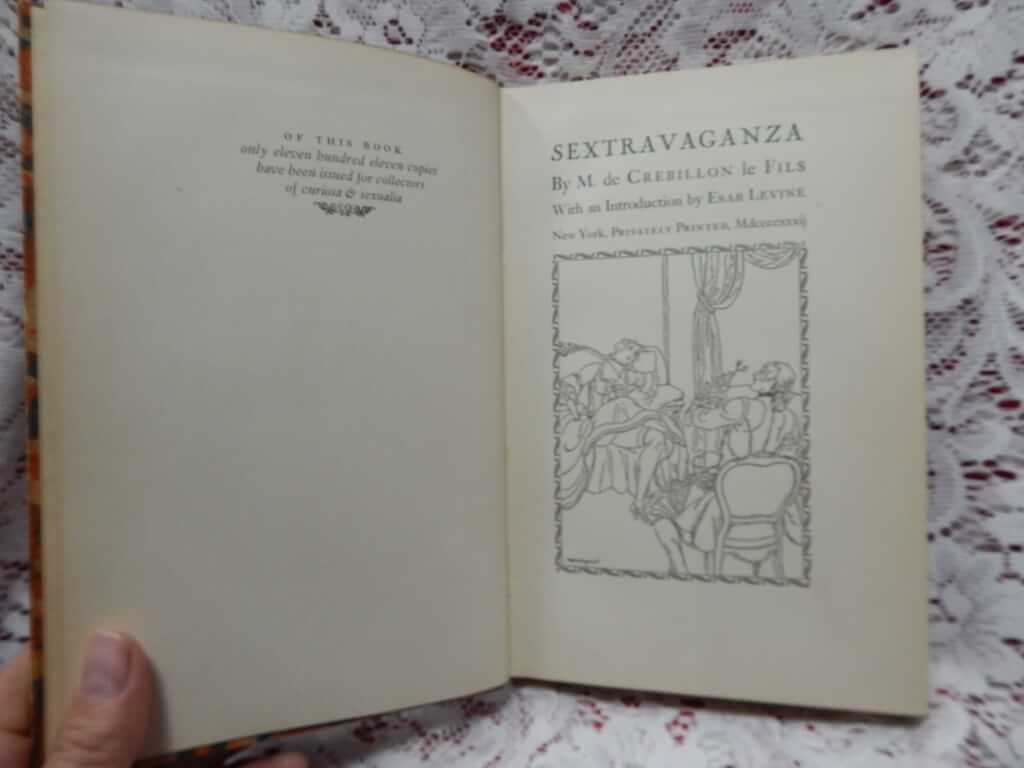
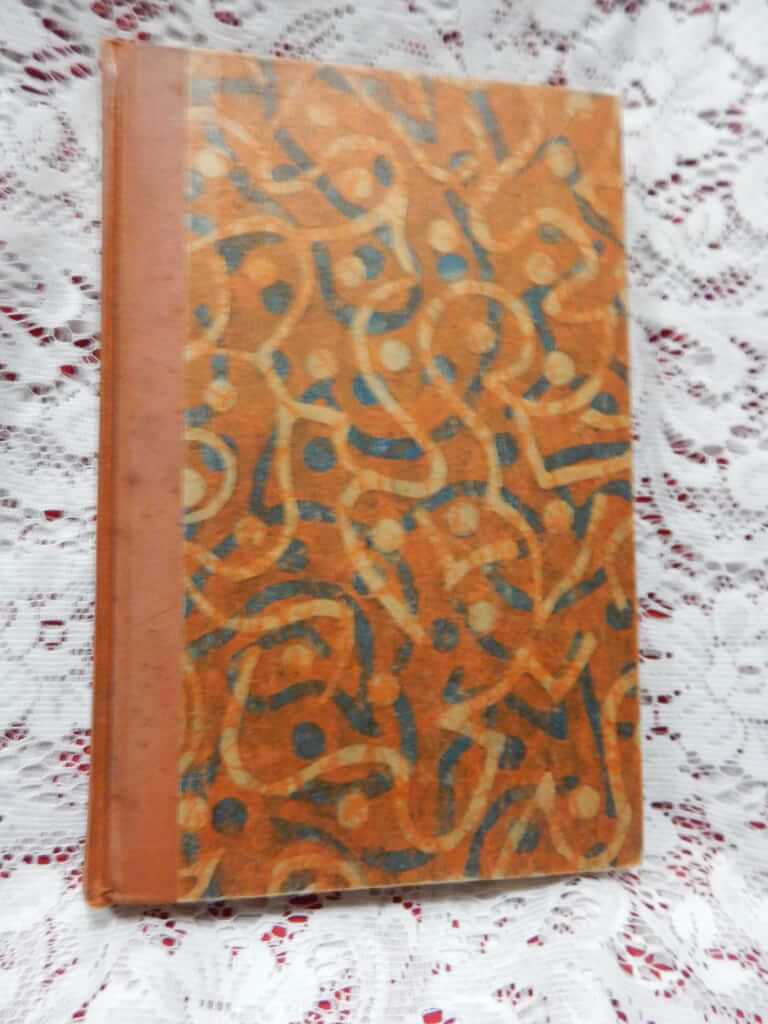 Sextravaganza, by M. de Crebillon le Fils, With and Introduction by Escar Levine, Illustrator unknown (Privately Printed [The Robin Hood House], New York 1932, one of 1111) 6.25"x9.5", 192pp, decorated boards, vellum spine with silver lettering, some spots and bumps but generally a good copy of this edition. Originally titled La Nuit et le moment ou les matines de Cythère [The night and the moment, or the mornings of Cythere], this is Robin Hood House's famous US "private" publication from the 30's and for a long time the only english translation available in the states. Written as a dialog, in the course of one night a man and a woman, each of whom is in love with somebody else, gradually warm up to each other until they forget past pleasures in present passions . Satire, irony, word-play and scandal abound. This edition states "only eleven hundred eleven copies have been issued for collectors of curiosa & sexualia". Claude Prosper Jolyot de Crébillon (1707-1777) was a French novelist. He was called "Crébillon fils" to distinguish him from his father, a famous tragedian, Prosper Jolyot de Crébillon. The publication of Tanzaï et Neadarne, histoire japonaise (1734), which contained thinly veiled attacks on the Papal bull Unigenitus, the cardinal de Rohan and others, landed him briefly in the prison at Vincennes. Publication of Le Sopha, conte moral, an erotic political satire, in 1742 forced him into exile from Paris for several months.
Sextravaganza, by M. de Crebillon le Fils, With and Introduction by Escar Levine, Illustrator unknown (Privately Printed [The Robin Hood House], New York 1932, one of 1111) 6.25"x9.5", 192pp, decorated boards, vellum spine with silver lettering, some spots and bumps but generally a good copy of this edition. Originally titled La Nuit et le moment ou les matines de Cythère [The night and the moment, or the mornings of Cythere], this is Robin Hood House's famous US "private" publication from the 30's and for a long time the only english translation available in the states. Written as a dialog, in the course of one night a man and a woman, each of whom is in love with somebody else, gradually warm up to each other until they forget past pleasures in present passions . Satire, irony, word-play and scandal abound. This edition states "only eleven hundred eleven copies have been issued for collectors of curiosa & sexualia". Claude Prosper Jolyot de Crébillon (1707-1777) was a French novelist. He was called "Crébillon fils" to distinguish him from his father, a famous tragedian, Prosper Jolyot de Crébillon. The publication of Tanzaï et Neadarne, histoire japonaise (1734), which contained thinly veiled attacks on the Papal bull Unigenitus, the cardinal de Rohan and others, landed him briefly in the prison at Vincennes. Publication of Le Sopha, conte moral, an erotic political satire, in 1742 forced him into exile from Paris for several months. -
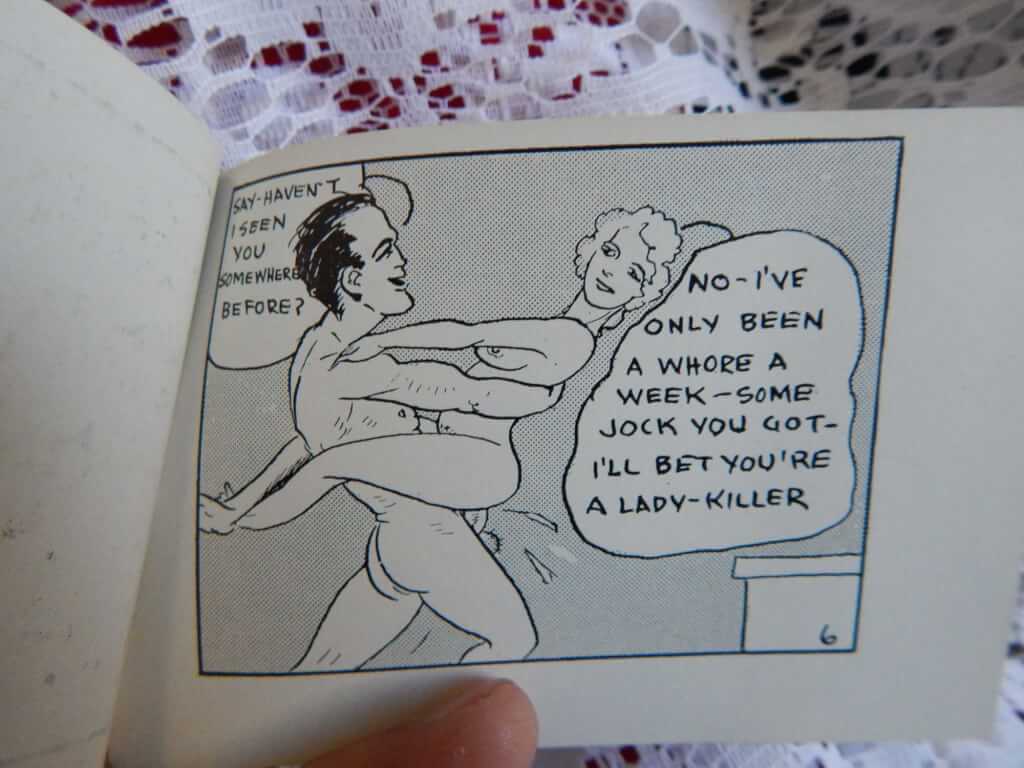
 Way out West with the fucking Tiger, A Bungstopper production, (n.p. n.d.) 4.5" x 3", 8pp. pamphlet, stapled Tijuana bibles (also known as eight-pagers, bluesies, gray-backs, Jiggs-and-Maggie books, jo-jo books, Tillie-and-Mac books, and two-by-fours) were little pornographic comic books produced in the United States from the 1920s to the early 1960s.
Way out West with the fucking Tiger, A Bungstopper production, (n.p. n.d.) 4.5" x 3", 8pp. pamphlet, stapled Tijuana bibles (also known as eight-pagers, bluesies, gray-backs, Jiggs-and-Maggie books, jo-jo books, Tillie-and-Mac books, and two-by-fours) were little pornographic comic books produced in the United States from the 1920s to the early 1960s. -
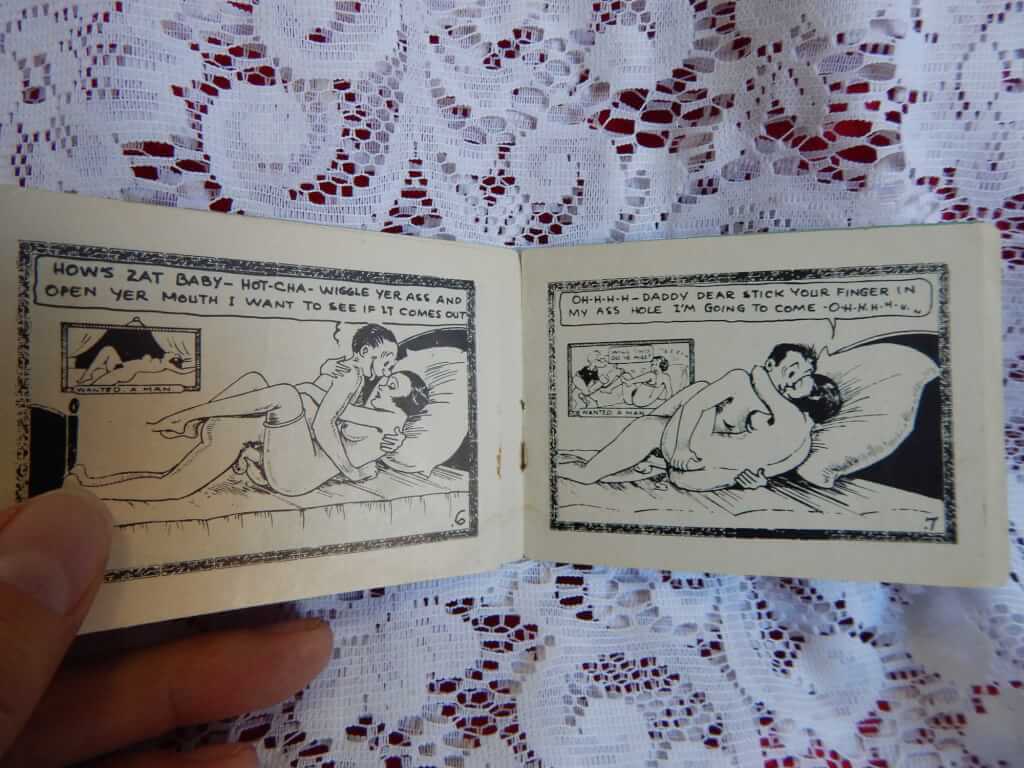
 The Frigidaire Salesman, (n.p. n.d.) 4.5" x 3", 8pp. pamphlet, stapled Tijuana bibles (also known as eight-pagers, bluesies, gray-backs, Jiggs-and-Maggie books, jo-jo books, Tillie-and-Mac books, and two-by-fours) were little pornographic comic books produced in the United States from the 1920s to the early 1960s.
The Frigidaire Salesman, (n.p. n.d.) 4.5" x 3", 8pp. pamphlet, stapled Tijuana bibles (also known as eight-pagers, bluesies, gray-backs, Jiggs-and-Maggie books, jo-jo books, Tillie-and-Mac books, and two-by-fours) were little pornographic comic books produced in the United States from the 1920s to the early 1960s. -
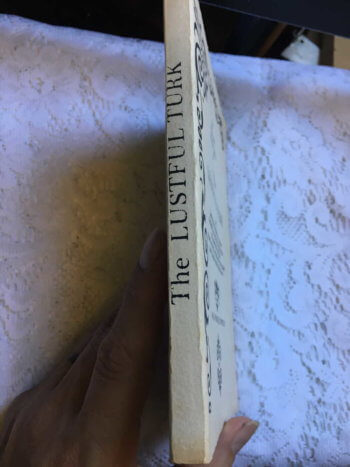
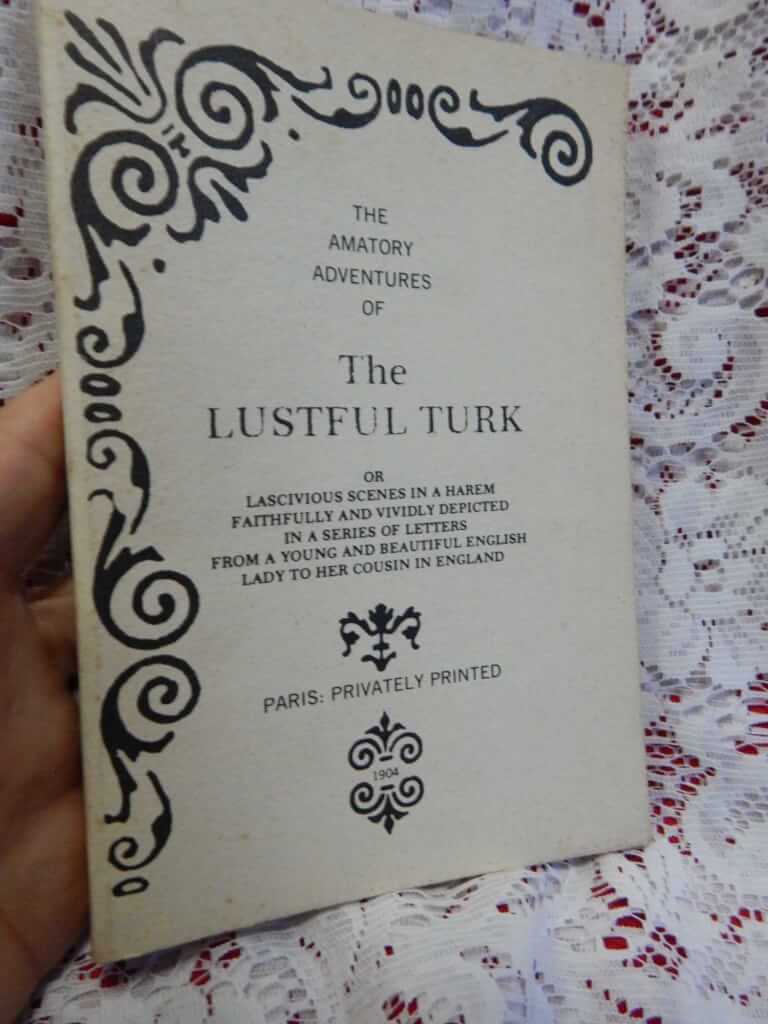 The Amatory Adventures of The Lustful Turk | or | Lascivious Scenes from a Harem | faithfully and vividly depicted in a series of letters from a young and beautiful English lady to her cousin in England, Anonymous ("Paris: Privately Printed, 1904" [this is a later facsimile printing, np nd]) The Lustful Turk, or Lascivious Scenes from a Harem is a pre-Victorian British erotic epistolary novel first published anonymously in 1828. (although this edition says it is "signed 10th of April, 1868) However, it was not widely known or circulated until the 1893 edition. The novel consists largely of a series of letters written by its heroine, Emily Barlow, to her friend, Sylvia Carey. When Emily sails from England for India in June 1814 her ship is attacked by Moorish pirates and she is taken to the harem of Ali, Dey of Algiers. The Dey rapes her and subjects her to his will, awakening her sexual passions. Emily's debasement continues when the Dey insists on anal sex, arousing the horror of her correspondent Sylvia, who expresses her indignation at the Dey's behaviour, in a letter that the latter intercepts. Annoyed at her attitude, the Dey arranges for Sylvia to be abducted and brought to the slave market of Algiers. After an elaborate charade in which the Dey pretends to be a sympathetic Frenchman, bidding to save her from sexual slavery, and engaging her in a fake marriage, he deflowers her and awakens her sexuality, as he had done with Emily. Revealing his true identity the Dey enjoys both girls together. This sexual idyll is eventually terminated when a new addition to harem objects to anal rape and cuts off the Dey's penis with a knife, and then commits suicide. Seemingly unfazed by this, the Dey has "his lost members preserved in spirits of wine in glass vases" which he presents to Emily and Sylvia, sending them back to England with these tokens of his affection. The novel also incorporates interpolated stories concerning the erotic misadventures of three other girls abducted into the harem and enlarges on the fate of Emily's maid Eliza who, presented by the Dey to Muzra, Bey of Tunis, is bound, flogged and raped in turn.
The Amatory Adventures of The Lustful Turk | or | Lascivious Scenes from a Harem | faithfully and vividly depicted in a series of letters from a young and beautiful English lady to her cousin in England, Anonymous ("Paris: Privately Printed, 1904" [this is a later facsimile printing, np nd]) The Lustful Turk, or Lascivious Scenes from a Harem is a pre-Victorian British erotic epistolary novel first published anonymously in 1828. (although this edition says it is "signed 10th of April, 1868) However, it was not widely known or circulated until the 1893 edition. The novel consists largely of a series of letters written by its heroine, Emily Barlow, to her friend, Sylvia Carey. When Emily sails from England for India in June 1814 her ship is attacked by Moorish pirates and she is taken to the harem of Ali, Dey of Algiers. The Dey rapes her and subjects her to his will, awakening her sexual passions. Emily's debasement continues when the Dey insists on anal sex, arousing the horror of her correspondent Sylvia, who expresses her indignation at the Dey's behaviour, in a letter that the latter intercepts. Annoyed at her attitude, the Dey arranges for Sylvia to be abducted and brought to the slave market of Algiers. After an elaborate charade in which the Dey pretends to be a sympathetic Frenchman, bidding to save her from sexual slavery, and engaging her in a fake marriage, he deflowers her and awakens her sexuality, as he had done with Emily. Revealing his true identity the Dey enjoys both girls together. This sexual idyll is eventually terminated when a new addition to harem objects to anal rape and cuts off the Dey's penis with a knife, and then commits suicide. Seemingly unfazed by this, the Dey has "his lost members preserved in spirits of wine in glass vases" which he presents to Emily and Sylvia, sending them back to England with these tokens of his affection. The novel also incorporates interpolated stories concerning the erotic misadventures of three other girls abducted into the harem and enlarges on the fate of Emily's maid Eliza who, presented by the Dey to Muzra, Bey of Tunis, is bound, flogged and raped in turn. -

 Les infortunes de la vertu, Marquis de Sade, introduction by Jean Paulhan (les editions du point du jour, 1946, "incidences" collection, #908/2000) 5.75" x 7.75", xlii+242pp, softcover "french wraps", good unread condition, many pages remain uncut. This edition appears to represent the original version of Justine that Sade wrote while imprisoned at the Bastille in 1787 (see below). The story is about Justine from age 12 to 26 and recounts all of her attempts to be virtuous no matter what life throws at her. She is constantly presented with sexual lessons hidden under a virtuous mask. She seeks refuge in a monastery but is forced to become a sex slave of the monks. After she helps a gentleman who is robbed in a field, he takes her back to his chateau on the pretext to have her help care for his wife. He confines her in a cave where she is subjected to more punishment. When she goes to a judge to beg for mercy in her case as an arsonist, she then finds herself openly humiliated in court, unable to defend herself. The moral(especially when juxtaposed with the "companion story", Juliette) seems to be that one should not resist a bit of vice if it is for the common good. The more Justine tries to resist temptation and be virtuous the further she was plunged into a life of vice and torture, while Juliette (her sister) submitted to a brief period of debauchery and vice and eventually lived a comfortable, happy existence. The Marquis de Sade wrote the first version of Justine (Les infortunes de la vertu, "The Misfortunes of Virtue") while imprisoned at the Bastille in 1787. In 1791 an expanded and more explicit version became Sade's first published work. In 1797, an even more detailed version was published along with a story of Juliette (Justine's sister) that comprised of 10 volumes and nearly 4000 pages. This final version, "La Nouvelle Justine", departed from the first-person narrative of the previous two versions, and included around 100 engravings. Most editions are taken from that 1797 Holland edition. Napoleon Bonaparte ordered the arrest of the anonymous author of Justine and Juliette, and as a result Sade was incarcerated for the last 13 years of his life. Napoleon called the work "the most abominable book ever engendered by the most depraved imagination". English titles: Justine, or the Misfortune(s) of Virtue; The Misfortunes of Virtue; Justine, or Good Conduct Well Chastised; Justine or Good Conduct Will Be Chastised
Les infortunes de la vertu, Marquis de Sade, introduction by Jean Paulhan (les editions du point du jour, 1946, "incidences" collection, #908/2000) 5.75" x 7.75", xlii+242pp, softcover "french wraps", good unread condition, many pages remain uncut. This edition appears to represent the original version of Justine that Sade wrote while imprisoned at the Bastille in 1787 (see below). The story is about Justine from age 12 to 26 and recounts all of her attempts to be virtuous no matter what life throws at her. She is constantly presented with sexual lessons hidden under a virtuous mask. She seeks refuge in a monastery but is forced to become a sex slave of the monks. After she helps a gentleman who is robbed in a field, he takes her back to his chateau on the pretext to have her help care for his wife. He confines her in a cave where she is subjected to more punishment. When she goes to a judge to beg for mercy in her case as an arsonist, she then finds herself openly humiliated in court, unable to defend herself. The moral(especially when juxtaposed with the "companion story", Juliette) seems to be that one should not resist a bit of vice if it is for the common good. The more Justine tries to resist temptation and be virtuous the further she was plunged into a life of vice and torture, while Juliette (her sister) submitted to a brief period of debauchery and vice and eventually lived a comfortable, happy existence. The Marquis de Sade wrote the first version of Justine (Les infortunes de la vertu, "The Misfortunes of Virtue") while imprisoned at the Bastille in 1787. In 1791 an expanded and more explicit version became Sade's first published work. In 1797, an even more detailed version was published along with a story of Juliette (Justine's sister) that comprised of 10 volumes and nearly 4000 pages. This final version, "La Nouvelle Justine", departed from the first-person narrative of the previous two versions, and included around 100 engravings. Most editions are taken from that 1797 Holland edition. Napoleon Bonaparte ordered the arrest of the anonymous author of Justine and Juliette, and as a result Sade was incarcerated for the last 13 years of his life. Napoleon called the work "the most abominable book ever engendered by the most depraved imagination". English titles: Justine, or the Misfortune(s) of Virtue; The Misfortunes of Virtue; Justine, or Good Conduct Well Chastised; Justine or Good Conduct Will Be Chastised -
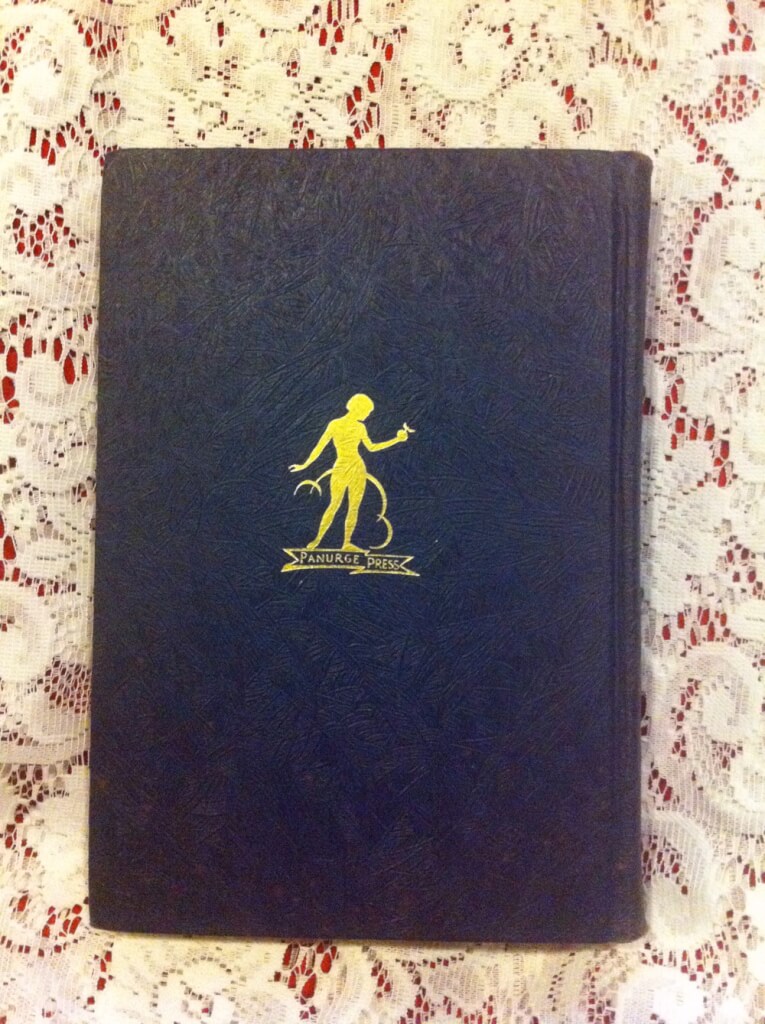
 The Heptameron, of Margaret, Queen of Navarre, Margaret of Navarre, Léopold Flameng illus. (Printed by Private Subscription and for private circulation only, np. nd. London, #61/500) 6.25″ X 7.5″, xxix-384pp, three-quarter bound over marbled boards, gilt title & decorations including boarder of leather, 8 etchings by Flameng The Heptameron is a collection of 72 short stories written in French by Marguerite of Navarre (1492-1549), published posthumously in 1558. It has the form of a frame narrative and was inspired by The Decameron of Giovanni Boccaccio. It was originally intended to contain one hundred stories covering ten days just as The Decameron does, but at Marguerite’s death it was only completed as far as the second story of the eighth day. Many of the stories deal with love, lust, infidelity, and other romantic and sexual matters. I do not know publisher or date to this edition, although it is very similar to the 1881 G. Barrie edition (page numbers and the Flemeng plates, and the Edition De Luxe label). Either it is a later pirate of that edition or an alternate printing from that batch.
The Heptameron, of Margaret, Queen of Navarre, Margaret of Navarre, Léopold Flameng illus. (Printed by Private Subscription and for private circulation only, np. nd. London, #61/500) 6.25″ X 7.5″, xxix-384pp, three-quarter bound over marbled boards, gilt title & decorations including boarder of leather, 8 etchings by Flameng The Heptameron is a collection of 72 short stories written in French by Marguerite of Navarre (1492-1549), published posthumously in 1558. It has the form of a frame narrative and was inspired by The Decameron of Giovanni Boccaccio. It was originally intended to contain one hundred stories covering ten days just as The Decameron does, but at Marguerite’s death it was only completed as far as the second story of the eighth day. Many of the stories deal with love, lust, infidelity, and other romantic and sexual matters. I do not know publisher or date to this edition, although it is very similar to the 1881 G. Barrie edition (page numbers and the Flemeng plates, and the Edition De Luxe label). Either it is a later pirate of that edition or an alternate printing from that batch. -

 A Complete Encyclopaedia of the Sexual Sciences, Dr. Iwan Bloch, trans Dr. M. Eden Paul (Falstaff Press, New York, 1937) 8.75" X 5.75", xxx+790pp, hardbound, no DJ, decorative red cloth with gilt lettering and decorations. The 30 pages of the preface printed in black with red decorations (mostly praise of the book and the author by various people including Dr. Bloch). Good condition, corners bumped, some fading/spotting on cover and spine, binding very good. "The author's aim in writing this book was to write a complete Encyclopaedia on the sexual sciences, and it will probably be acknowledged by all who study its pages that the author has accomplished his intention in a very scholarly manner, and in such form as to be of great value to the professions for whom this translation is intended. The subject is no doubt one which appeals to and affects the interests of all adult persons, but the publishers have, after very serious and careful consideration, come to the conclusion that the sale of the English translation of the book shall be limited to members of the legal and medical professions." -from Publisher's Note
A Complete Encyclopaedia of the Sexual Sciences, Dr. Iwan Bloch, trans Dr. M. Eden Paul (Falstaff Press, New York, 1937) 8.75" X 5.75", xxx+790pp, hardbound, no DJ, decorative red cloth with gilt lettering and decorations. The 30 pages of the preface printed in black with red decorations (mostly praise of the book and the author by various people including Dr. Bloch). Good condition, corners bumped, some fading/spotting on cover and spine, binding very good. "The author's aim in writing this book was to write a complete Encyclopaedia on the sexual sciences, and it will probably be acknowledged by all who study its pages that the author has accomplished his intention in a very scholarly manner, and in such form as to be of great value to the professions for whom this translation is intended. The subject is no doubt one which appeals to and affects the interests of all adult persons, but the publishers have, after very serious and careful consideration, come to the conclusion that the sale of the English translation of the book shall be limited to members of the legal and medical professions." -from Publisher's Note -
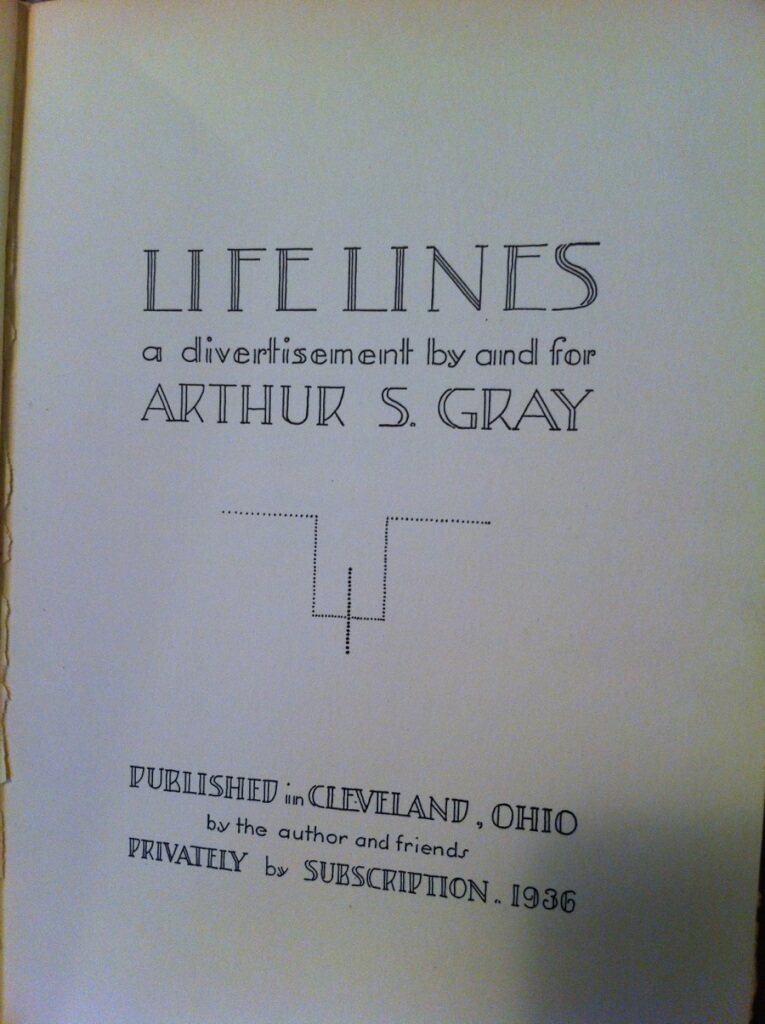
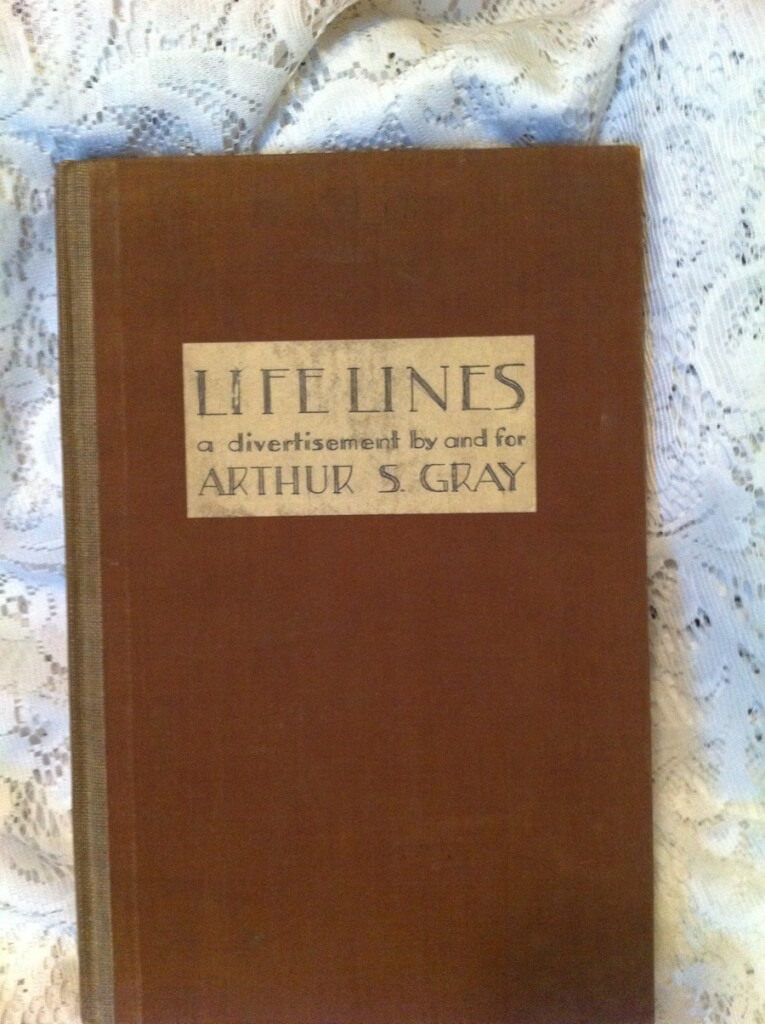 Life Lines, Arthur S. Gray ("Published in Cleveland, Ohio by the author and friends, Privately by Subscription, 1936") 10 1/8 X 6 3/4, 93pp, hardbound no DJ, deckle edges, good condition, slight soiling to boards The title page reads "Life Lines, a divertisement by and for Arthur S. Gray". Published in Cleveland, Ohio by the author and friends, Privately by Subscription, 1936". The author writes in his preface, "Because this book is a Michelangelo collection of poems and drawings done now and then for my diversion and satisfaction, it is necessary to announce that the pictures are not illustrations. Each drawing is a simple record of some particular and more or less unique quality which caught my attention and incited me to draw. After the prime reason, the urge to make something. I draw the way I do for two reasons: first to preserve the integrity of my powers of observation and reaction; second, to render that respect which is the natural right of an individual entity."
Life Lines, Arthur S. Gray ("Published in Cleveland, Ohio by the author and friends, Privately by Subscription, 1936") 10 1/8 X 6 3/4, 93pp, hardbound no DJ, deckle edges, good condition, slight soiling to boards The title page reads "Life Lines, a divertisement by and for Arthur S. Gray". Published in Cleveland, Ohio by the author and friends, Privately by Subscription, 1936". The author writes in his preface, "Because this book is a Michelangelo collection of poems and drawings done now and then for my diversion and satisfaction, it is necessary to announce that the pictures are not illustrations. Each drawing is a simple record of some particular and more or less unique quality which caught my attention and incited me to draw. After the prime reason, the urge to make something. I draw the way I do for two reasons: first to preserve the integrity of my powers of observation and reaction; second, to render that respect which is the natural right of an individual entity." -
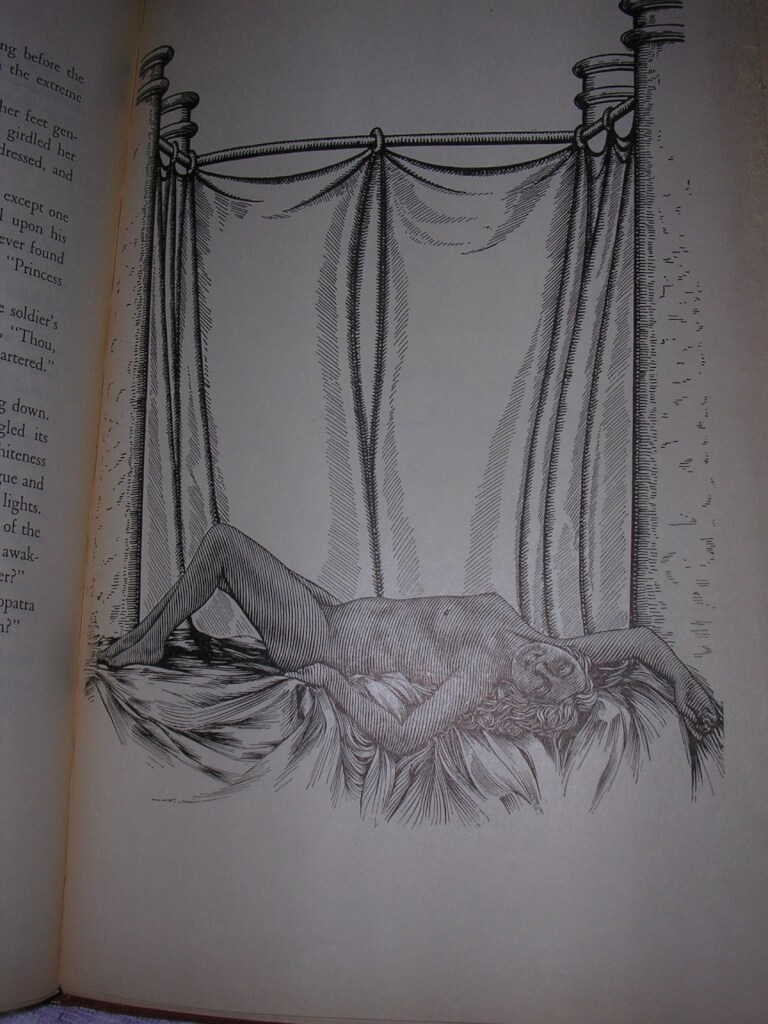
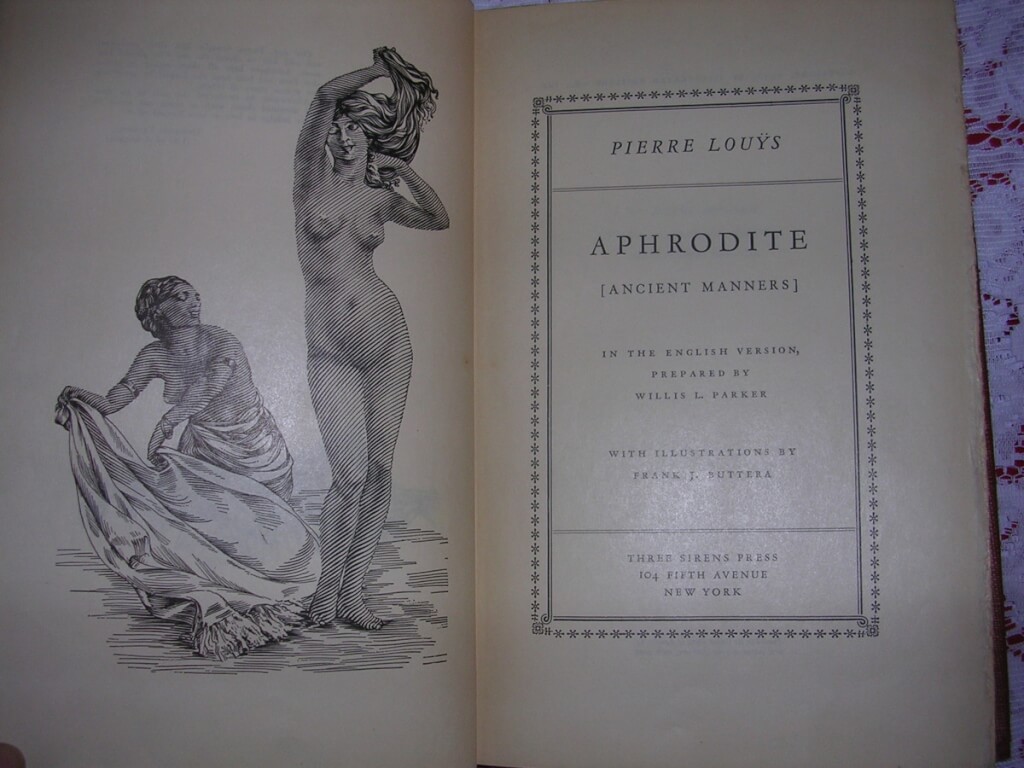 Aphrodite (Ancient Manners), Pierre Louys, trans. Willis L. Parker, illustrator Frank J. Buttera (Three Sirens Press, New York, 1932) 9 1/2" X 6 1/4", 251pp, hardbound no DJ, red cloth over boards with gilt decorations, deckle fore and bottom edge, inked top edge, very good condition, minor bumping to corners Pierre Louys (1870 - 1925) was a French poet and writer, most renowned for lesbian and classical themes in some of his writings. He is known as a writer who "expressed pagan sensuality with stylistic perfection." "Aphrodite: mæurs antiques" (Ancient Manners) is a "libertine" story set in ancient Alexandria. Highlights include the loves of Chrysis, an orgy banquet ending in the crucifixion of a slave, the love of two young musician girls and the festivals of Aphrodite. This edition is illustrated by Frank J. Buttera
Aphrodite (Ancient Manners), Pierre Louys, trans. Willis L. Parker, illustrator Frank J. Buttera (Three Sirens Press, New York, 1932) 9 1/2" X 6 1/4", 251pp, hardbound no DJ, red cloth over boards with gilt decorations, deckle fore and bottom edge, inked top edge, very good condition, minor bumping to corners Pierre Louys (1870 - 1925) was a French poet and writer, most renowned for lesbian and classical themes in some of his writings. He is known as a writer who "expressed pagan sensuality with stylistic perfection." "Aphrodite: mæurs antiques" (Ancient Manners) is a "libertine" story set in ancient Alexandria. Highlights include the loves of Chrysis, an orgy banquet ending in the crucifixion of a slave, the love of two young musician girls and the festivals of Aphrodite. This edition is illustrated by Frank J. Buttera -
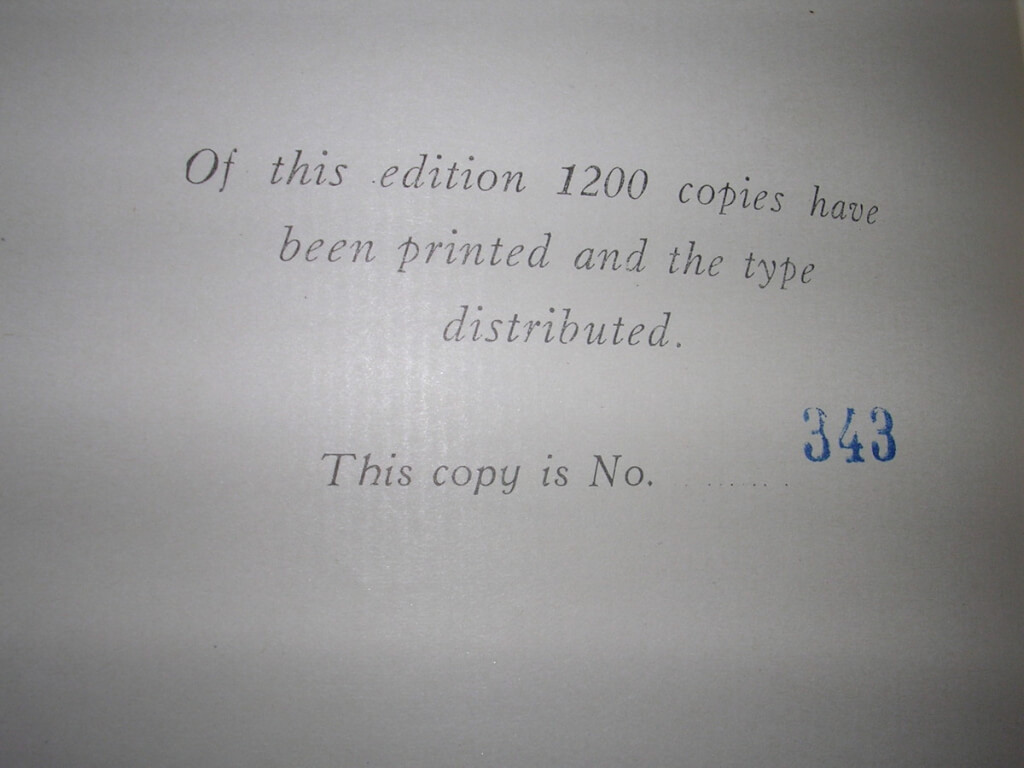
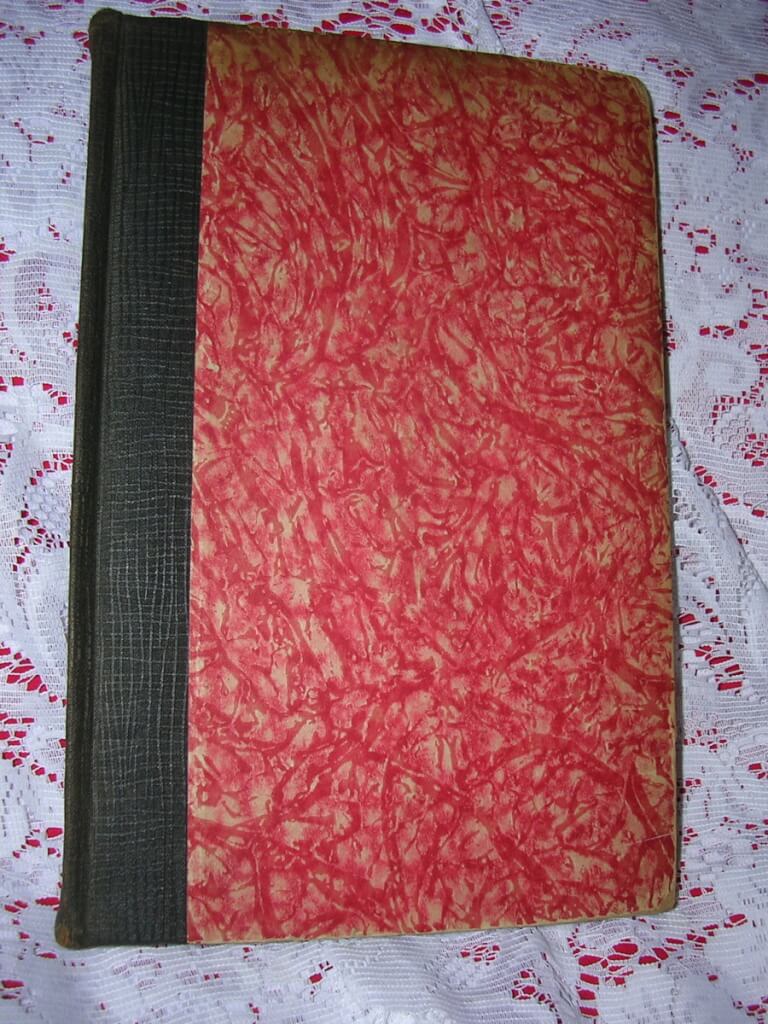 The Satyricon of Petronius Arbiter, Gaius Petronius, trans. ascribed to Oscar Wilde (Privately Printed, 1928, Limited Edition 343/1200 stamped in ink) 9" X 6 1/4", 236pp, black spine with gilt titles (mostly worn off), decorated red boards. Fair copy, boards worn, binding good. Front board loose but holding. Satyricon (or Satyrica) is a Latin work of fiction in a mixture of prose and poetry (prosimetrum). It is believed to have been written by Gaius Petronius, though the manuscript tradition identifies the author as a certain Titus Petronius. Classical scholars often describe it as a "Roman novel", without necessarily implying continuity with the modern literary form. The surviving portions of the text detail the misadventures of the narrator, Encolpius, and his lover, a handsome sixteen-year-old boy named Giton. Throughout the novel, Encolpius has a hard time keeping his lover faithful to him as he is constantly being enticed away by others. Encolpius's friend Ascyltus (who seems to have previously been in a relationship with Encolpius) is another major character. It is a rare example of a Roman novel, the only other surviving example (quite different in style and plot) being Metamorphoses of Apuleius. It is also extremely important evidence for the reconstruction of what everyday life must have been like for the lower classes during the early Roman Empire.
The Satyricon of Petronius Arbiter, Gaius Petronius, trans. ascribed to Oscar Wilde (Privately Printed, 1928, Limited Edition 343/1200 stamped in ink) 9" X 6 1/4", 236pp, black spine with gilt titles (mostly worn off), decorated red boards. Fair copy, boards worn, binding good. Front board loose but holding. Satyricon (or Satyrica) is a Latin work of fiction in a mixture of prose and poetry (prosimetrum). It is believed to have been written by Gaius Petronius, though the manuscript tradition identifies the author as a certain Titus Petronius. Classical scholars often describe it as a "Roman novel", without necessarily implying continuity with the modern literary form. The surviving portions of the text detail the misadventures of the narrator, Encolpius, and his lover, a handsome sixteen-year-old boy named Giton. Throughout the novel, Encolpius has a hard time keeping his lover faithful to him as he is constantly being enticed away by others. Encolpius's friend Ascyltus (who seems to have previously been in a relationship with Encolpius) is another major character. It is a rare example of a Roman novel, the only other surviving example (quite different in style and plot) being Metamorphoses of Apuleius. It is also extremely important evidence for the reconstruction of what everyday life must have been like for the lower classes during the early Roman Empire. -
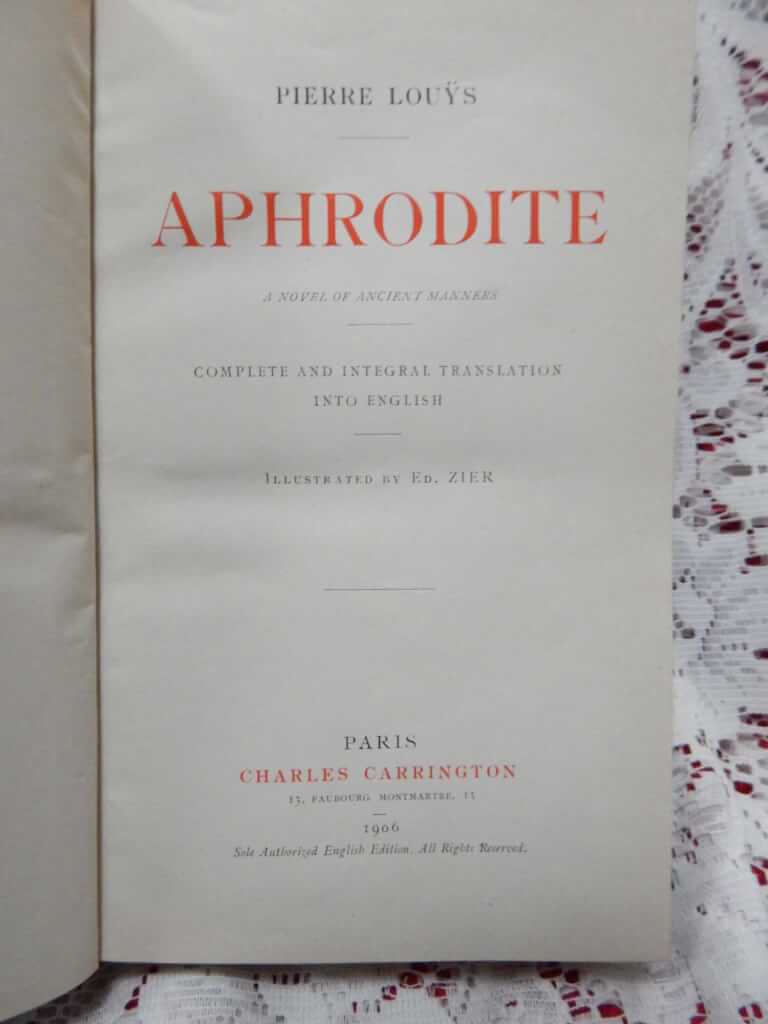
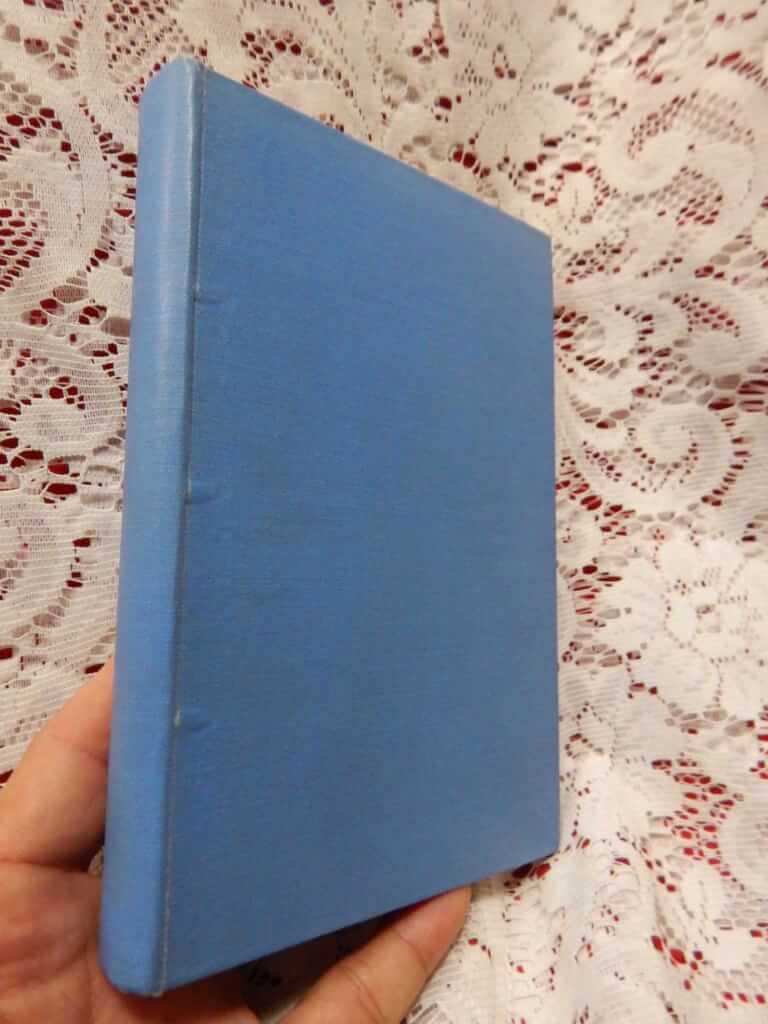 Aphrodite, a novel of ancient manners, by Pierre Louÿs, illus. Ed. Zier (Charles Carrington, 1906, first edition thus, first English translation) 5.25 x 7.75", xiv+412pp, rebound with plain blue boards, fine condition Pierre Louys (1870 - 1925) was a French poet and writer, most renowned for lesbian and classical themes in some of his writings. He is known as a writer who "expressed pagan sensuality with stylistic perfection." "Aphrodite: mæurs antiques" (Ancient Manners) is a "libertine" story set in ancient Alexandria. Highlights include the loves of Chrysis, an orgy banquet ending in the crucifixion of a slave, the love of two young musician girls and the festivals of Aphrodite. "This Translation of Aphrodite was executed on the Printing Presses of Charles Herissey, at Evreux (France), for Mr. Charles Carrington, Paris, Bookseller et Publisher, and is the only complete English version extant." Édouard François Zier (1856-1924) was a French illustrator and painter.
Aphrodite, a novel of ancient manners, by Pierre Louÿs, illus. Ed. Zier (Charles Carrington, 1906, first edition thus, first English translation) 5.25 x 7.75", xiv+412pp, rebound with plain blue boards, fine condition Pierre Louys (1870 - 1925) was a French poet and writer, most renowned for lesbian and classical themes in some of his writings. He is known as a writer who "expressed pagan sensuality with stylistic perfection." "Aphrodite: mæurs antiques" (Ancient Manners) is a "libertine" story set in ancient Alexandria. Highlights include the loves of Chrysis, an orgy banquet ending in the crucifixion of a slave, the love of two young musician girls and the festivals of Aphrodite. "This Translation of Aphrodite was executed on the Printing Presses of Charles Herissey, at Evreux (France), for Mr. Charles Carrington, Paris, Bookseller et Publisher, and is the only complete English version extant." Édouard François Zier (1856-1924) was a French illustrator and painter. -
Out of stock
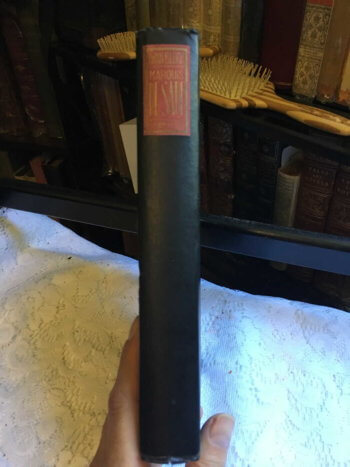
 Marquis de Sade | The Man and His Age | studies in the history of the culture and morals of the eighteenth century, Dr. Iwan Bloch, translated by James Bruce (Julian Press, 1931, [first american edition]) 6 .5"x9.5", 296pp, hardbound, black boards, red and gilt title on spine, some bumps and wear, good condition for age. Iwan Bloch (1872-1922), the “father of sexology”, was a Berlin dermatologist. His many socio-cultural studies in sexology earned him an international reputation as a medical historian. He also discovered de Sade’s manuscript of the “120 days of Sodom” in 1904, which had been believed to be lost. Together with Magnus Hirschfeld and Albert Eulenburg, Bloch proposed the new concept of a science of sexuality: Sexualwissenschaft or sexology. In 1906 he wrote Das Sexualleben unserer Zeit in seinen Beziehungen zur modernen Kultur [The Sexual Life of our Time in its Relations to Modern Civilization], a complete encyclopedia of the sexual sciences in their relation to modern civilization. According to Sigmund Freud, Bloch's studies were instrumental in the development of the anthropological approach to the theory of sexuality. For example, before Bloch, homosexuality was analyzed using a pathological approach.
Marquis de Sade | The Man and His Age | studies in the history of the culture and morals of the eighteenth century, Dr. Iwan Bloch, translated by James Bruce (Julian Press, 1931, [first american edition]) 6 .5"x9.5", 296pp, hardbound, black boards, red and gilt title on spine, some bumps and wear, good condition for age. Iwan Bloch (1872-1922), the “father of sexology”, was a Berlin dermatologist. His many socio-cultural studies in sexology earned him an international reputation as a medical historian. He also discovered de Sade’s manuscript of the “120 days of Sodom” in 1904, which had been believed to be lost. Together with Magnus Hirschfeld and Albert Eulenburg, Bloch proposed the new concept of a science of sexuality: Sexualwissenschaft or sexology. In 1906 he wrote Das Sexualleben unserer Zeit in seinen Beziehungen zur modernen Kultur [The Sexual Life of our Time in its Relations to Modern Civilization], a complete encyclopedia of the sexual sciences in their relation to modern civilization. According to Sigmund Freud, Bloch's studies were instrumental in the development of the anthropological approach to the theory of sexuality. For example, before Bloch, homosexuality was analyzed using a pathological approach. -
 Manual of Classical Erotology (De figuris veneris), Fred. Chas. Forberg (stated Julian Smithson M. A., and friends, 1884 [later pirated edition]) 9.25"x6", hardcover 1/4 maroon over marbled boards, xiii-248pp, good condition This is a pirated edition (most likely 1920-30) of the first known English translation of this work. The original Julian Smithson edition was limited to 100 copies. De figuris Veneris (On the figures of Venus) was an anthology of ancient Greek and ancient Roman writings on erotic topics, discussed objectively and classified and grouped by subject matter. It was first published by the German classicist Friedrich Karl Forberg in 1824 in Latin and Greek as a commentary to Antonio Beccadelli's (1394-1471) Hermaphroditus (commonly referred to as Antonii Panormitae Hermaphroditus), an erotic poem sequence of 1425 in renaissance Latin, though it was later also published as a separate work. In 1899 Forberg's work was translated into English and published by Charles Carrington as De figuris Veneris, Manual of classical erotology, and again in 1907 by Charles Hirsch, and into French, German and Spanish. The French edition by Alcide Bonneau was titled Manuel d’érotologie classique. One French edition of 1906 was illustrated by Édouard-Henri Avril, which concludes with a list of 95 sexual positions. Most of the editions were restricted to high society or censored; one of the copies edited in France was immediately deposited on the secret shelves of the Bibliothèque nationale de France.
Manual of Classical Erotology (De figuris veneris), Fred. Chas. Forberg (stated Julian Smithson M. A., and friends, 1884 [later pirated edition]) 9.25"x6", hardcover 1/4 maroon over marbled boards, xiii-248pp, good condition This is a pirated edition (most likely 1920-30) of the first known English translation of this work. The original Julian Smithson edition was limited to 100 copies. De figuris Veneris (On the figures of Venus) was an anthology of ancient Greek and ancient Roman writings on erotic topics, discussed objectively and classified and grouped by subject matter. It was first published by the German classicist Friedrich Karl Forberg in 1824 in Latin and Greek as a commentary to Antonio Beccadelli's (1394-1471) Hermaphroditus (commonly referred to as Antonii Panormitae Hermaphroditus), an erotic poem sequence of 1425 in renaissance Latin, though it was later also published as a separate work. In 1899 Forberg's work was translated into English and published by Charles Carrington as De figuris Veneris, Manual of classical erotology, and again in 1907 by Charles Hirsch, and into French, German and Spanish. The French edition by Alcide Bonneau was titled Manuel d’érotologie classique. One French edition of 1906 was illustrated by Édouard-Henri Avril, which concludes with a list of 95 sexual positions. Most of the editions were restricted to high society or censored; one of the copies edited in France was immediately deposited on the secret shelves of the Bibliothèque nationale de France. -
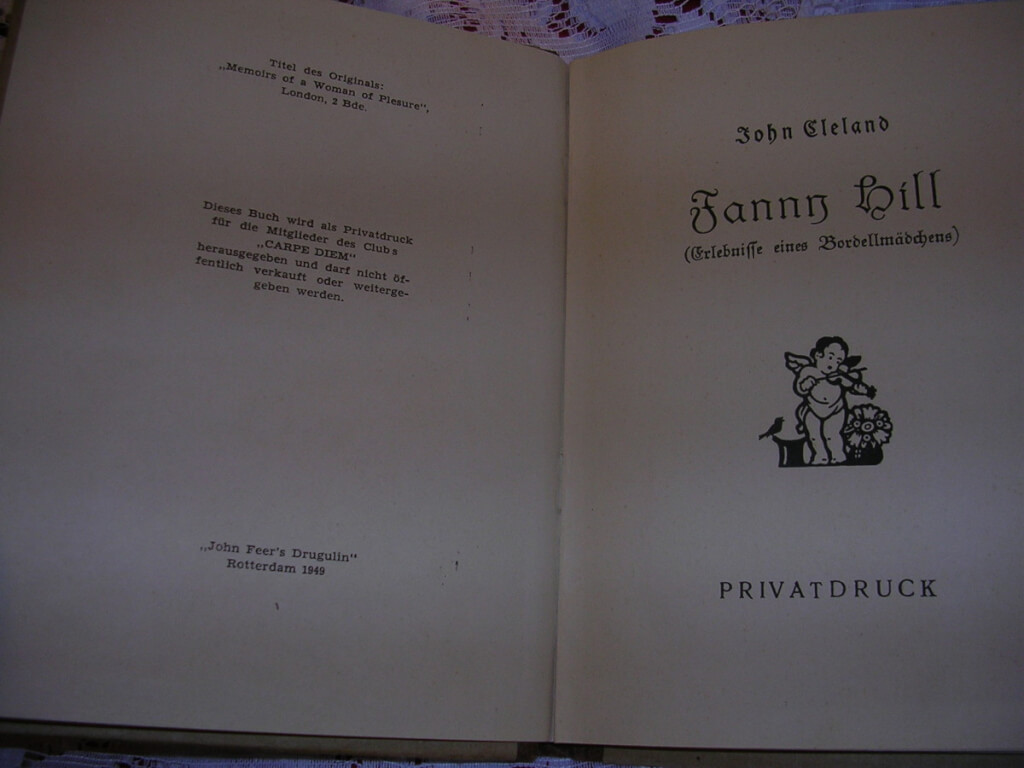
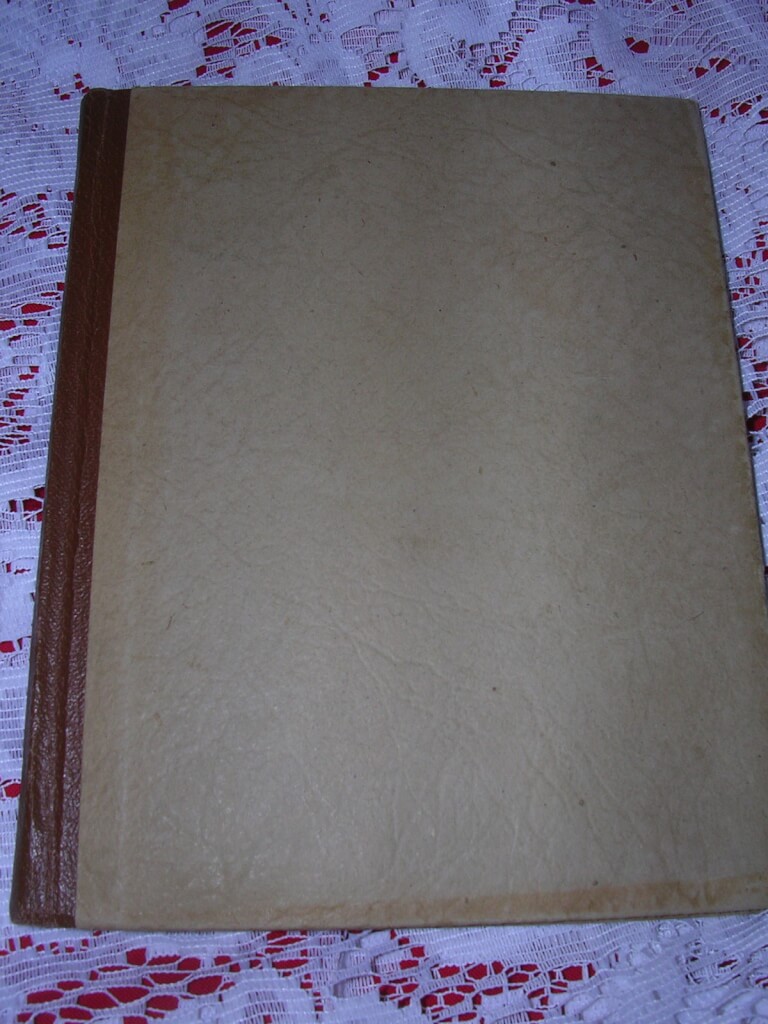 Fanny Hill (Erlebnisse eines Bordellmädchens.), John Cleland (Dieses Buch wird als Privatdruck für die Mitglieder des Clubs 'Carpe Diem' herausgegeben und darf nicht öffentlich verkauft oder weitergegeben werden. John Freer's Druglin, Rotterdam, 1949) 6.5" x 5.25", 78pp, hardbound tan paper over boards, faux leather spine. Good condition, slight foxing around edges of front cover. "This book is privately printed, published for the members of the 'Carpe Diem' club and must not be passed on or sold to the public." This was German "Bückware" or an item that was kept under the counter only for customers who asked for it. The book is labeled "Erstes Buch" (First Book). It is unknown whether this is a complete book. With only 79 pages, it might be a loosely translated edition or just the first volume. I have not found any similar books labeled anything but "Erste Buch"
Fanny Hill (Erlebnisse eines Bordellmädchens.), John Cleland (Dieses Buch wird als Privatdruck für die Mitglieder des Clubs 'Carpe Diem' herausgegeben und darf nicht öffentlich verkauft oder weitergegeben werden. John Freer's Druglin, Rotterdam, 1949) 6.5" x 5.25", 78pp, hardbound tan paper over boards, faux leather spine. Good condition, slight foxing around edges of front cover. "This book is privately printed, published for the members of the 'Carpe Diem' club and must not be passed on or sold to the public." This was German "Bückware" or an item that was kept under the counter only for customers who asked for it. The book is labeled "Erstes Buch" (First Book). It is unknown whether this is a complete book. With only 79 pages, it might be a loosely translated edition or just the first volume. I have not found any similar books labeled anything but "Erste Buch" -
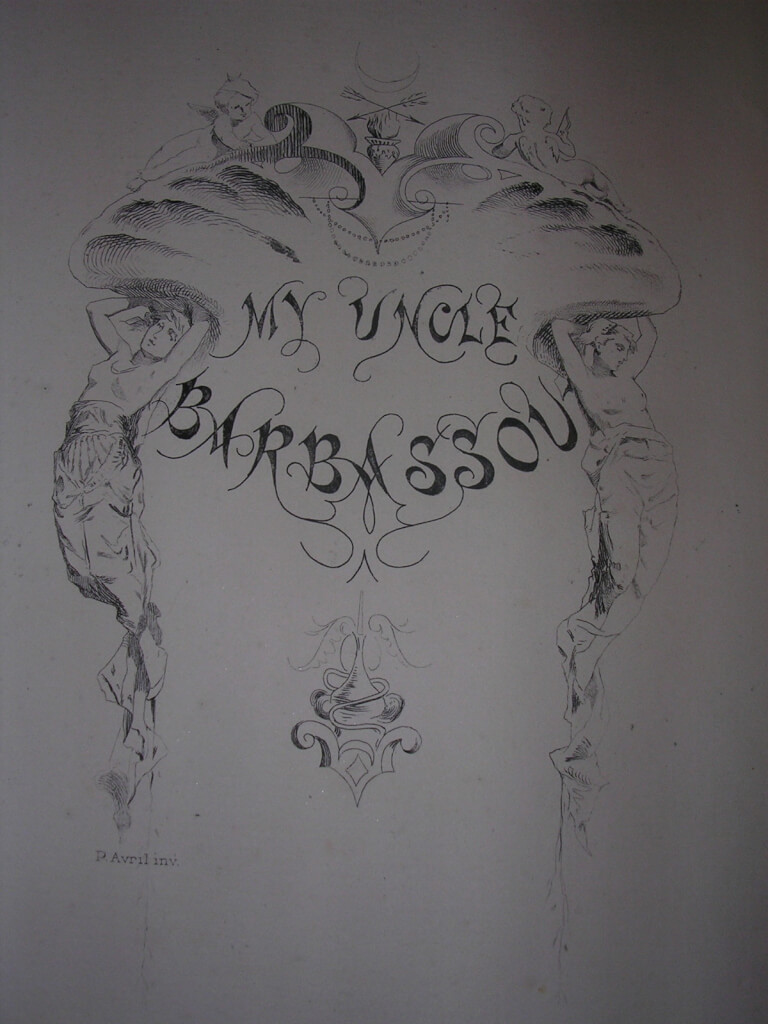
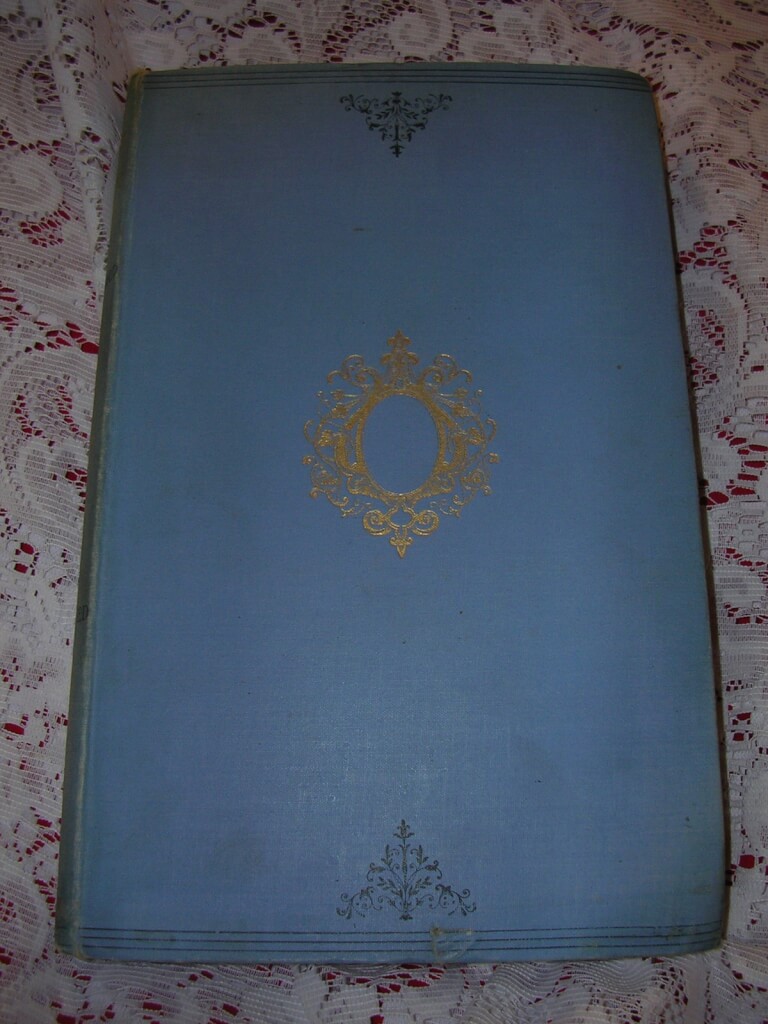 My Uncle Barbassou, Mario Uchard, Paul Avril (illust.) (Vizetelly & Co., London, 1888) 10.25" X 6.5", 339pp., hardbound, blue cloth boards with gilt and black titles and decorations on spine and front cover. Deckled edges. Good condition for age, boards and binding sound, illustrations throughout. Originally published in 4 parts in 1876, "Mon Oncle Barbassou" is a story of a man who inherits his uncle's estate which includes a newly purchased harem of 3 young girls. This novel is a prime example of the French "Orientalists" of the late 1800's. Scandalous for the age, but mild by today's standards, this book is the first English translation. The first English translation from the "Mon Oncle Barbassou" published in 1877. 40 beautiful engravings by Paul Avril. Édouard-Henri Avril (1849-1928) used the pseudonym "Paul Avril" for his erotic work. He was a French painter and commercial artist. His career saw collaboration with influential people like Octave Uzanne, Henry Spencer Ashbee and Friedrich Karl Forberg. He is one of the most celebrated erotic artists of his age. Avril was a soldier before starting his career in art. He was awarded with the Legion of Honour for his actions in the Franco-Prussian War.
My Uncle Barbassou, Mario Uchard, Paul Avril (illust.) (Vizetelly & Co., London, 1888) 10.25" X 6.5", 339pp., hardbound, blue cloth boards with gilt and black titles and decorations on spine and front cover. Deckled edges. Good condition for age, boards and binding sound, illustrations throughout. Originally published in 4 parts in 1876, "Mon Oncle Barbassou" is a story of a man who inherits his uncle's estate which includes a newly purchased harem of 3 young girls. This novel is a prime example of the French "Orientalists" of the late 1800's. Scandalous for the age, but mild by today's standards, this book is the first English translation. The first English translation from the "Mon Oncle Barbassou" published in 1877. 40 beautiful engravings by Paul Avril. Édouard-Henri Avril (1849-1928) used the pseudonym "Paul Avril" for his erotic work. He was a French painter and commercial artist. His career saw collaboration with influential people like Octave Uzanne, Henry Spencer Ashbee and Friedrich Karl Forberg. He is one of the most celebrated erotic artists of his age. Avril was a soldier before starting his career in art. He was awarded with the Legion of Honour for his actions in the Franco-Prussian War. -
Out of stock
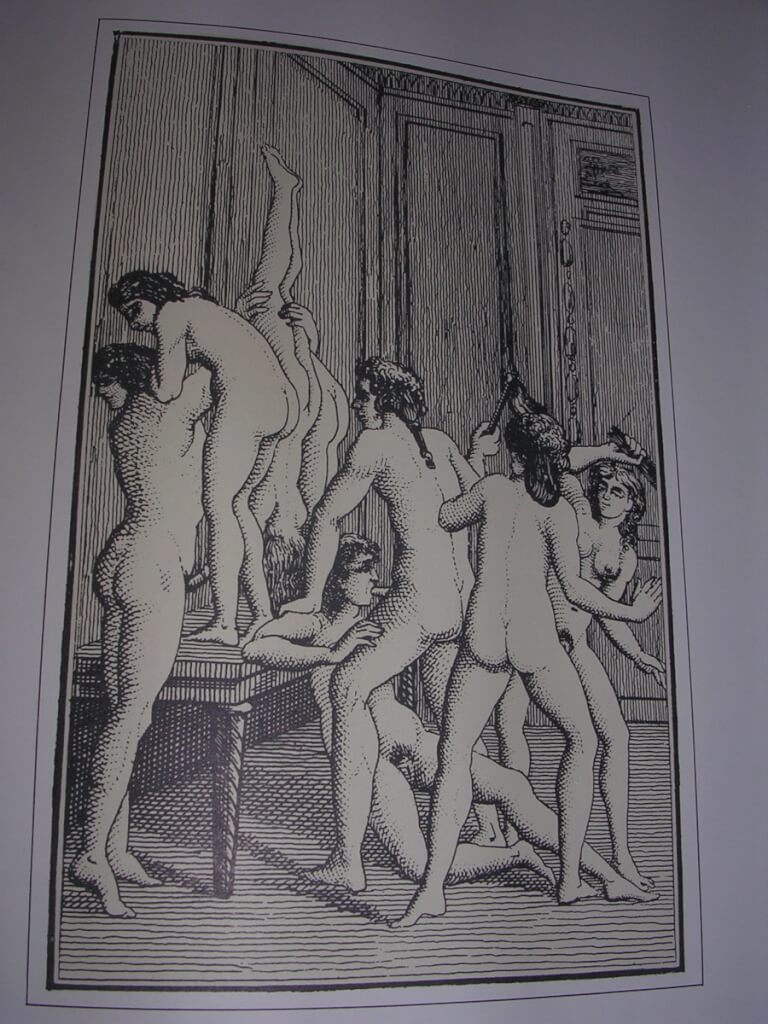
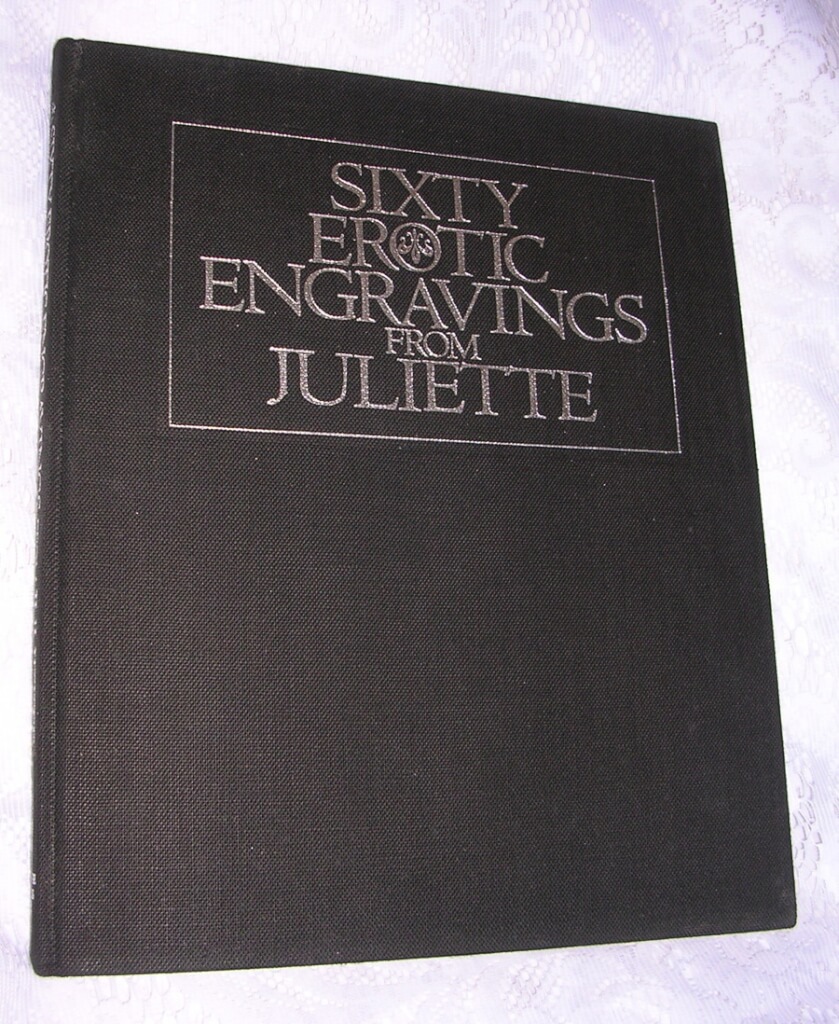 SIXTY EROTIC ENGRAVINGS FROM JULIETTE, Marquise De Sade (Grove Press, Inc., New York, 1969 [first printing]) 11 3/8" X 9 1/2", 60pp, hardback no DJ, good condition 1797 The Marquis de Sade published "Justine, or the Misfortunes of Virtue" and "Juliette or the Prosperity of Vice" (or "vice amply rewarded") together forming 10 volumes of nearly 4000 pages in total; publication was completed in 1801 and included around 100 very explicit engravings. Napoleon Bonaparte ordered the arrest of the anonymous author of Justine and Juliette, and as a result Sade was incarcerated for the last 13 years of his life. Napoleon called the work "the most abominable book ever engendered by the most depraved imagination". Justine and Juliette were published sporadically from the 19th century into the mid 20th century but mostly without any of the engravings from the original. The engravings which appear in this book were reproduced from a copy of that famous 1797 Holland edition. This publication marks the first legal printing of these engravings in the US.
SIXTY EROTIC ENGRAVINGS FROM JULIETTE, Marquise De Sade (Grove Press, Inc., New York, 1969 [first printing]) 11 3/8" X 9 1/2", 60pp, hardback no DJ, good condition 1797 The Marquis de Sade published "Justine, or the Misfortunes of Virtue" and "Juliette or the Prosperity of Vice" (or "vice amply rewarded") together forming 10 volumes of nearly 4000 pages in total; publication was completed in 1801 and included around 100 very explicit engravings. Napoleon Bonaparte ordered the arrest of the anonymous author of Justine and Juliette, and as a result Sade was incarcerated for the last 13 years of his life. Napoleon called the work "the most abominable book ever engendered by the most depraved imagination". Justine and Juliette were published sporadically from the 19th century into the mid 20th century but mostly without any of the engravings from the original. The engravings which appear in this book were reproduced from a copy of that famous 1797 Holland edition. This publication marks the first legal printing of these engravings in the US. -
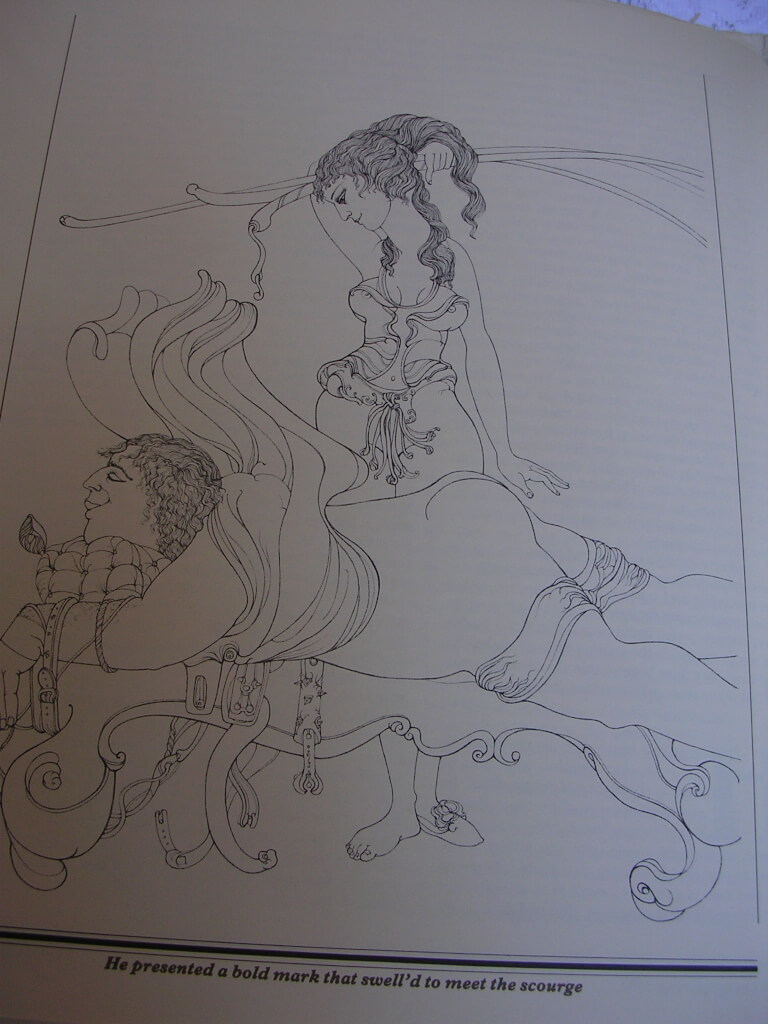
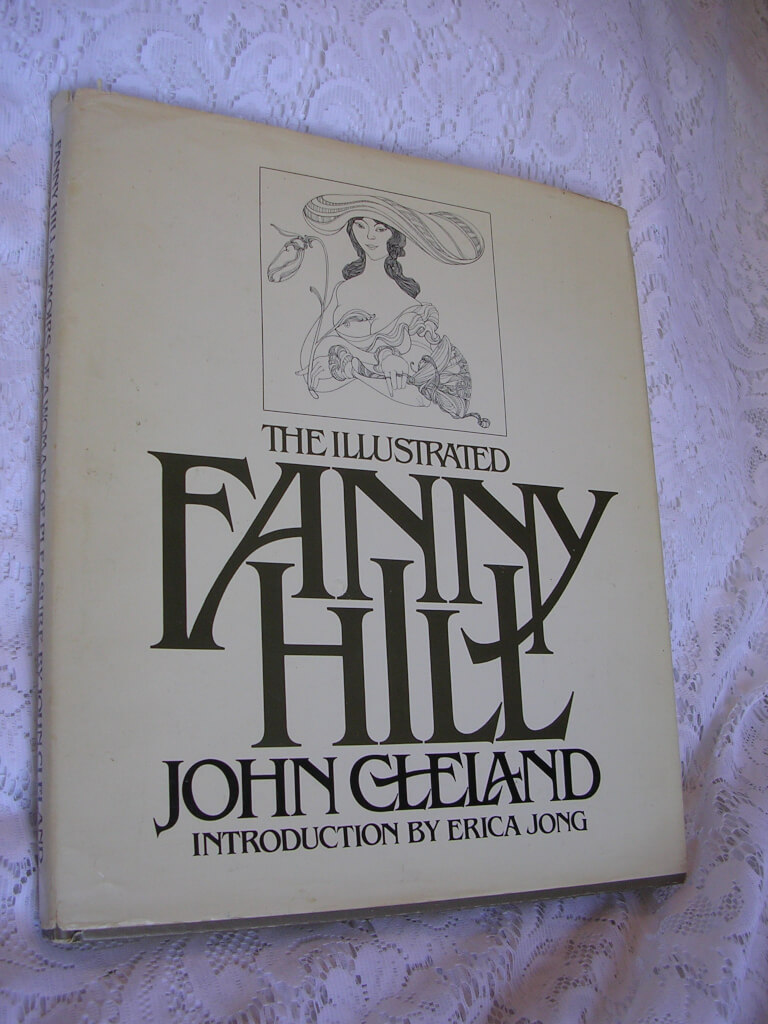 The Illustrated Fanny Hill, John Cleland, illustrated by Zevi Blum, introduction written by Erica Jong, designed by Herb Lubalin (The Erotic Artbook Society [Ralph Ginzburg], 1978, first edition thus, stated "NE PLUS EDITION") 12.5" X 10.5", 127pp, hardbound with DJ, very good condition, minor tears to dust jacket Written while the author was in debtor's prison in London and first published in 1748, Fanny Hill is considered the first original English prose pornography, and the first pornography to use the form of the novel. One of the most prosecuted and banned books in history, it has become a synonym for obscenity. Dust Jacket shows some wear but in good condition. This copy is an excellent and beautiful "legal" (meaning post-1966 Supreme Court Case) edition of Fanny Hill. It was published by Ralph Ginzburg (Eros Magazine, Fact Magazine, served 8 months of a 5 year prison term for obscenity). The illustrations are beautifully done and have a psychedelic feel to them.
The Illustrated Fanny Hill, John Cleland, illustrated by Zevi Blum, introduction written by Erica Jong, designed by Herb Lubalin (The Erotic Artbook Society [Ralph Ginzburg], 1978, first edition thus, stated "NE PLUS EDITION") 12.5" X 10.5", 127pp, hardbound with DJ, very good condition, minor tears to dust jacket Written while the author was in debtor's prison in London and first published in 1748, Fanny Hill is considered the first original English prose pornography, and the first pornography to use the form of the novel. One of the most prosecuted and banned books in history, it has become a synonym for obscenity. Dust Jacket shows some wear but in good condition. This copy is an excellent and beautiful "legal" (meaning post-1966 Supreme Court Case) edition of Fanny Hill. It was published by Ralph Ginzburg (Eros Magazine, Fact Magazine, served 8 months of a 5 year prison term for obscenity). The illustrations are beautifully done and have a psychedelic feel to them. -

 Mémoires de Fanny Hill, Femme de Plaisir, John Cleland (Bibliothèque Des Curieux, Paris, 1914) 9" X 5 5/8", 281pp, soft bound, deckle edges, many pages uncut/unread, "decorated with six compositions from the series of engravings by William Hogarth: La Destin_e d'une Courtisane", fair condition, good considering it's age, pages yellow and small rips near spine Written while the author was in debtor's prison in London and first published in 1749, Fanny Hill is considered the first original English prose pornography, and the first pornography to use the form of the novel. One of the most prosecuted and banned books in history, it has become a synonym for obscenity. This book appeared as a part of a series "Les Maitres de l'amour" (The Masters of Love). "With documents about life in London in the eighteenth century, including Life after the gallant Serails of London, Introduction and bibliography by Guillaume Apollinaire"
Mémoires de Fanny Hill, Femme de Plaisir, John Cleland (Bibliothèque Des Curieux, Paris, 1914) 9" X 5 5/8", 281pp, soft bound, deckle edges, many pages uncut/unread, "decorated with six compositions from the series of engravings by William Hogarth: La Destin_e d'une Courtisane", fair condition, good considering it's age, pages yellow and small rips near spine Written while the author was in debtor's prison in London and first published in 1749, Fanny Hill is considered the first original English prose pornography, and the first pornography to use the form of the novel. One of the most prosecuted and banned books in history, it has become a synonym for obscenity. This book appeared as a part of a series "Les Maitres de l'amour" (The Masters of Love). "With documents about life in London in the eighteenth century, including Life after the gallant Serails of London, Introduction and bibliography by Guillaume Apollinaire" -
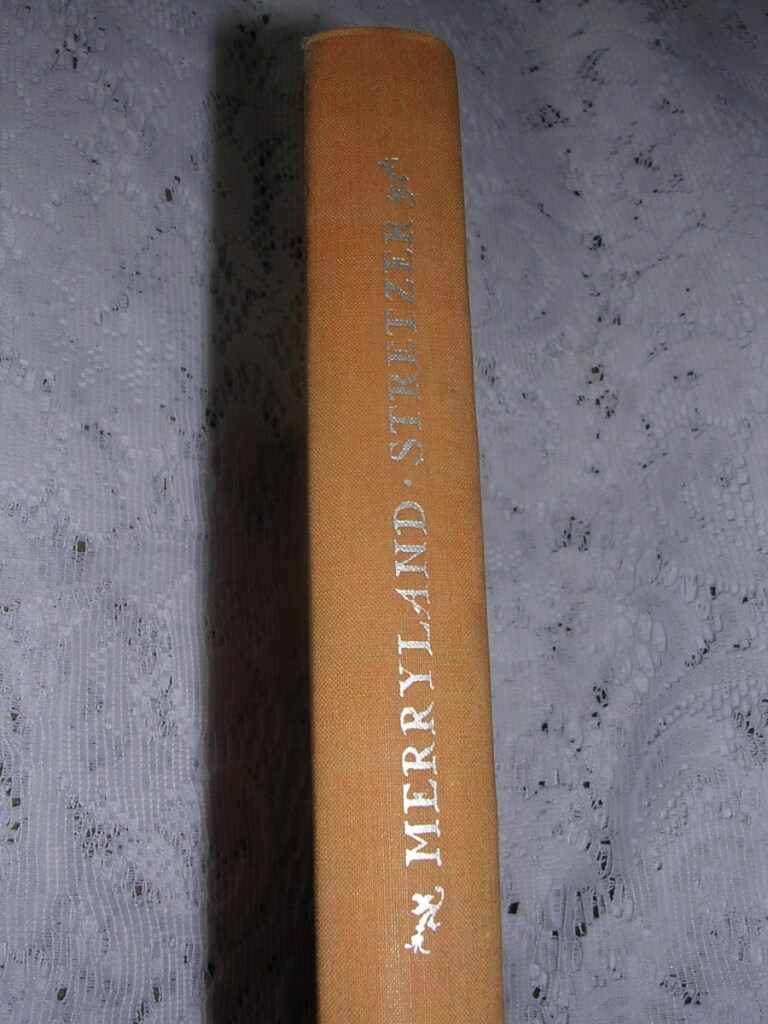
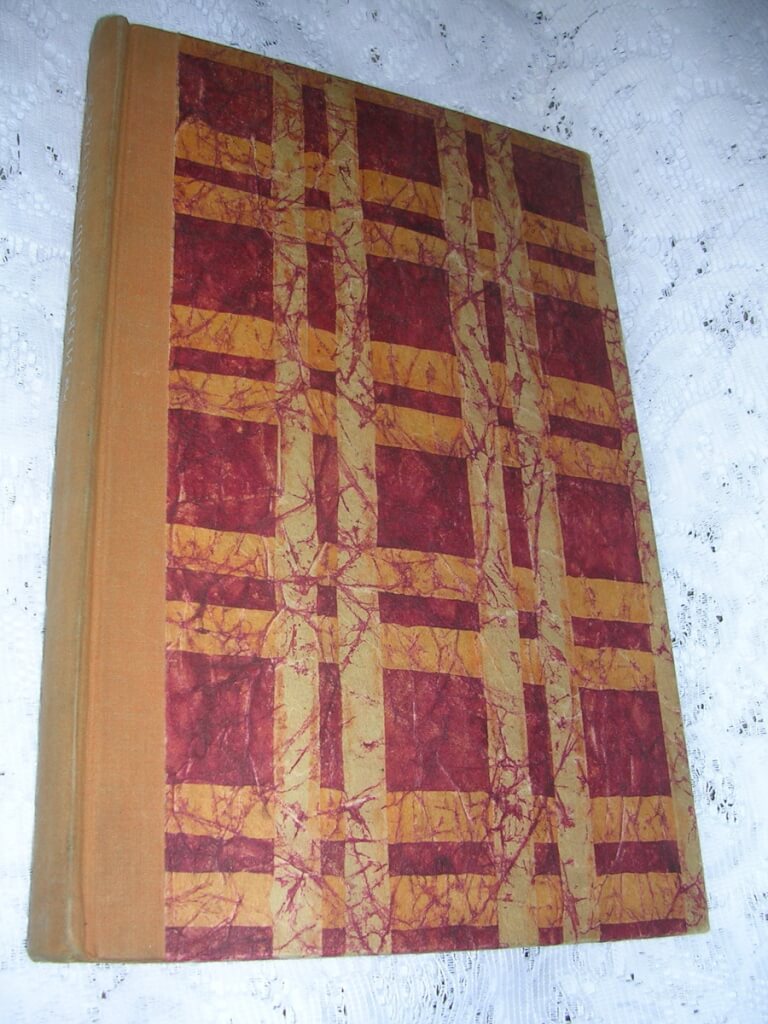 Merryland, Thomas Stretzer (Privately Issued, New York, Robin Hood House, 1932) 9 3/8" X 6 1/8", 136pp, hardbound no DJ, decorative paper boards, silver gilt lettering on spine, very good condition The Merryland books were a somewhat peculiar genre of English seventeenth and eighteenth century erotic fiction in which the female body was described in terms of a topographical metaphor derived from a pun on Maryland. Stretzer's book is typical of the genre in depicting the female body as a landscape that men explore, till, and plow. For example, he writes: "Her valleys are like Eden, her hills like Lebanon, she is a paradise of pleasure and a garden of delight."
Merryland, Thomas Stretzer (Privately Issued, New York, Robin Hood House, 1932) 9 3/8" X 6 1/8", 136pp, hardbound no DJ, decorative paper boards, silver gilt lettering on spine, very good condition The Merryland books were a somewhat peculiar genre of English seventeenth and eighteenth century erotic fiction in which the female body was described in terms of a topographical metaphor derived from a pun on Maryland. Stretzer's book is typical of the genre in depicting the female body as a landscape that men explore, till, and plow. For example, he writes: "Her valleys are like Eden, her hills like Lebanon, she is a paradise of pleasure and a garden of delight." -
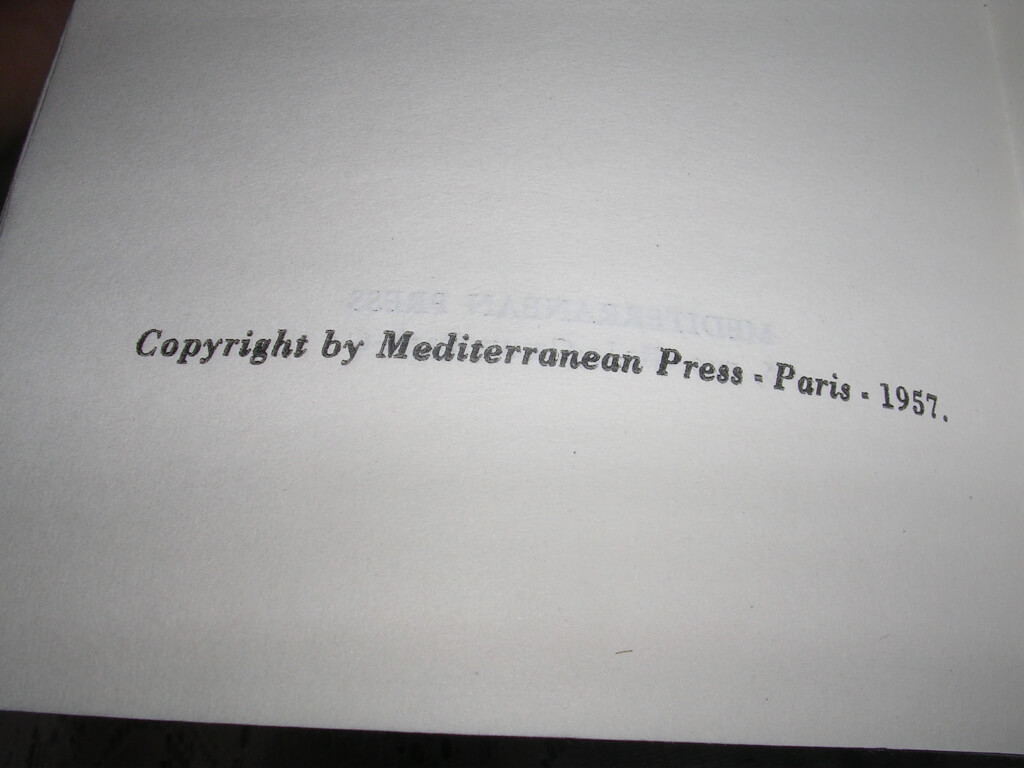
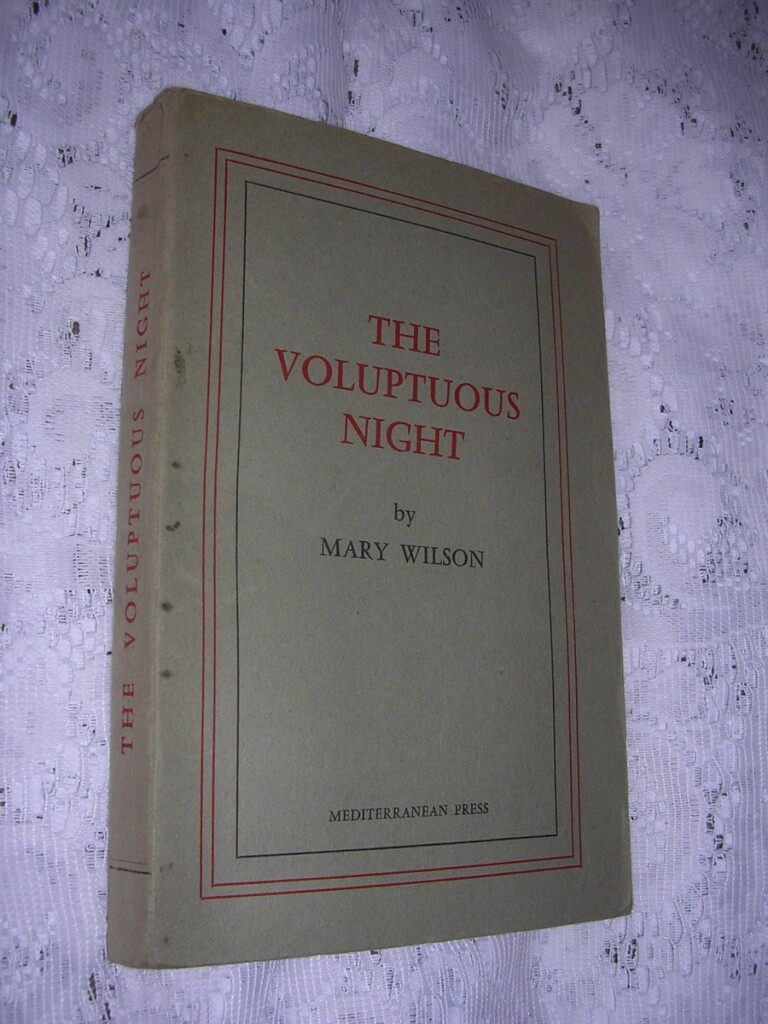 The Voluptuous Night, Mary Wilson (Mediterranean Press, Paris, 1957) 6 3/4" X 4 5/8", 167pp, soft bound, good condition, some soiling on covers According to James Campbell Reddie, this book is a translation of "La Nuit Merveilleuse" (a pornographic version of Vivant Demon's story "Point de Lendemain", 1777). It was published by various people including George Cannon c. 1830. This edition is a paperback from Paris in 1957. The back cover reads "Not to be imported into the United Kingdom or the U.S.A"
The Voluptuous Night, Mary Wilson (Mediterranean Press, Paris, 1957) 6 3/4" X 4 5/8", 167pp, soft bound, good condition, some soiling on covers According to James Campbell Reddie, this book is a translation of "La Nuit Merveilleuse" (a pornographic version of Vivant Demon's story "Point de Lendemain", 1777). It was published by various people including George Cannon c. 1830. This edition is a paperback from Paris in 1957. The back cover reads "Not to be imported into the United Kingdom or the U.S.A" -

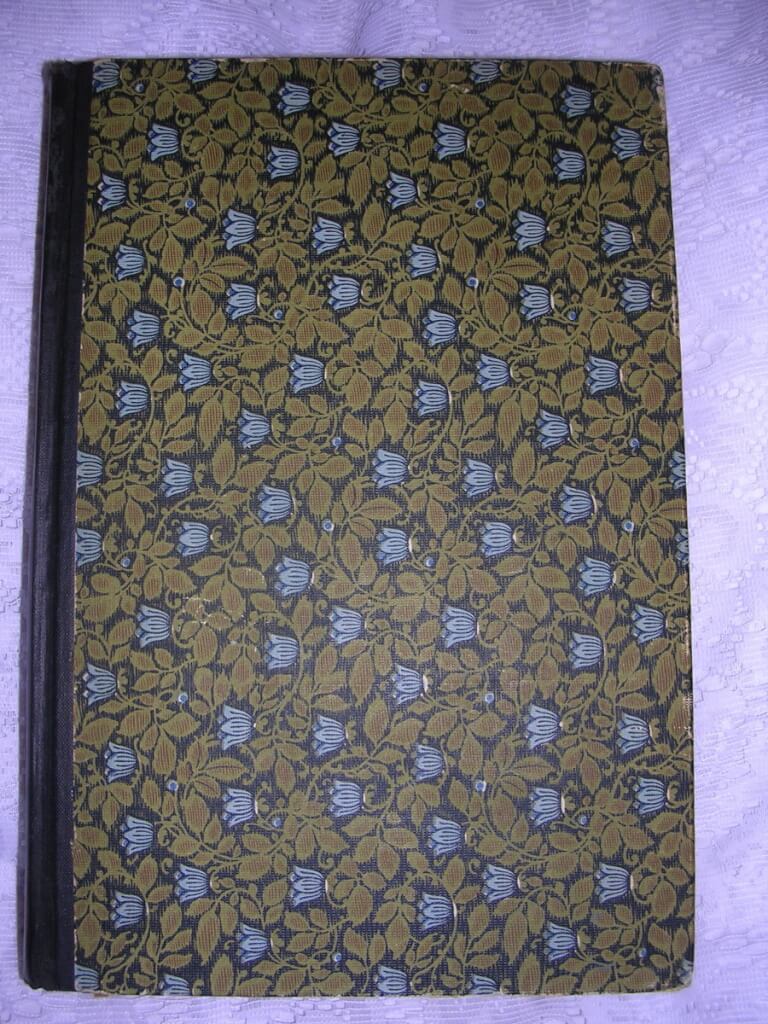 The Adventures of King Pausole, Pierre Louys, ilustrated by Lotan Welshans ("Privately Printed in a Strictly Limited Edition for Members of The Society of Sophisticates", no date, [c. 1927, the date of the illustrations], [first edition thus]) 9 5/8" X 6 5/8", 305pp, hardbound, no dust jacket, boards green floral pattern, gilt lettering and designs on spine, top edge gilted, other edges deckle, good condition. Pierre Louys (1870 - 1925) was a French poet and writer, most renowned for lesbian and classical themes in some of his writings. He is known as a writer who "expressed pagan sensuality with stylistic perfection." This book is a humorous and risqué "libertine" story about a king with many wives (one for each day of the year). As part of the story, King Pausole had two laws "1. harm no man. 2. Then do as you please." Spider-webb-patterned tissue coverings on the nine exotic and sensuous plates (gilt on black paper tipped in), by Lotan Weshans.
The Adventures of King Pausole, Pierre Louys, ilustrated by Lotan Welshans ("Privately Printed in a Strictly Limited Edition for Members of The Society of Sophisticates", no date, [c. 1927, the date of the illustrations], [first edition thus]) 9 5/8" X 6 5/8", 305pp, hardbound, no dust jacket, boards green floral pattern, gilt lettering and designs on spine, top edge gilted, other edges deckle, good condition. Pierre Louys (1870 - 1925) was a French poet and writer, most renowned for lesbian and classical themes in some of his writings. He is known as a writer who "expressed pagan sensuality with stylistic perfection." This book is a humorous and risqué "libertine" story about a king with many wives (one for each day of the year). As part of the story, King Pausole had two laws "1. harm no man. 2. Then do as you please." Spider-webb-patterned tissue coverings on the nine exotic and sensuous plates (gilt on black paper tipped in), by Lotan Weshans. -
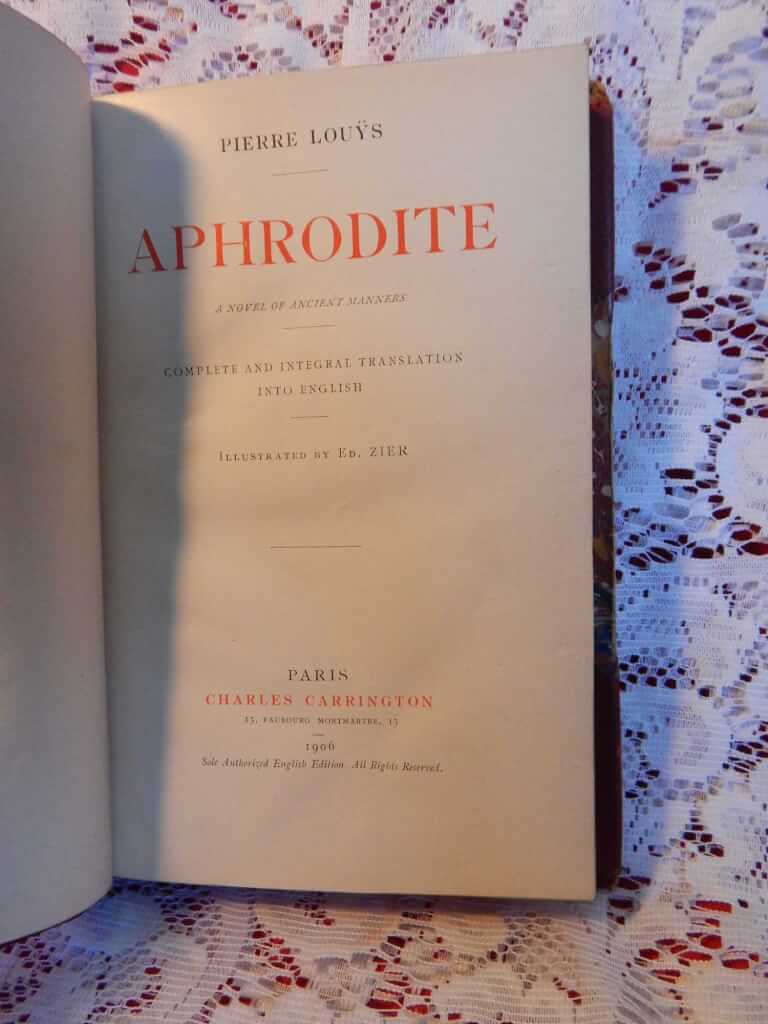
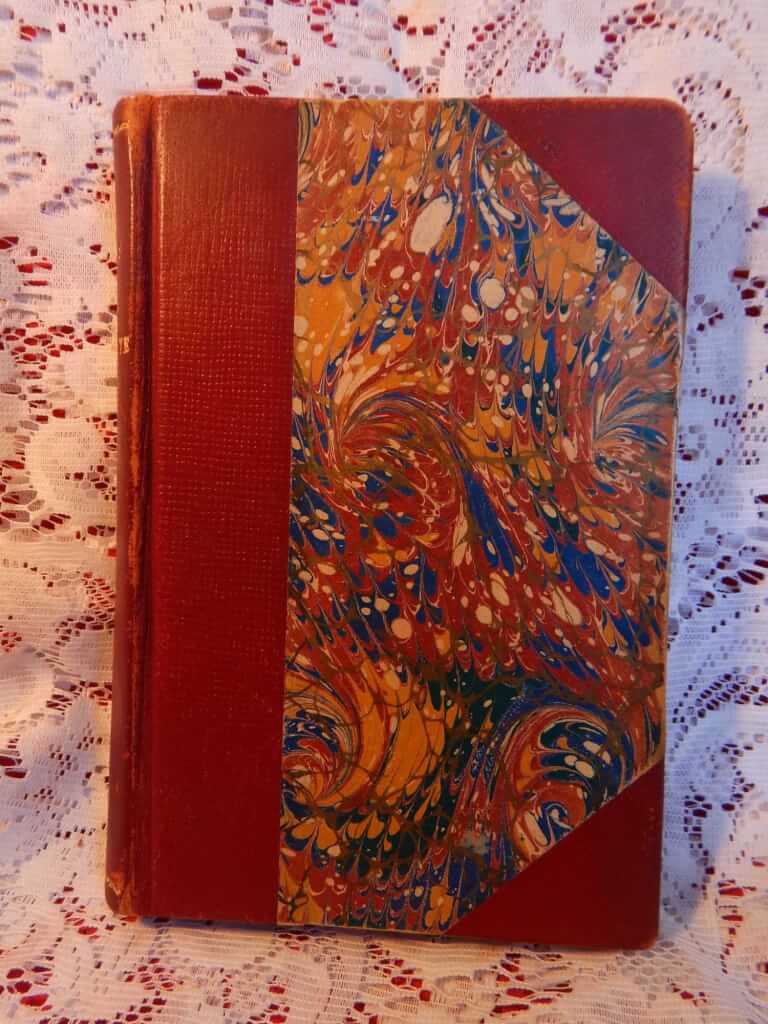 Aphrodite, a novel of ancient manners, by Pierre Louÿs, illus. Ed. Zier (Charles Carrington, 1906, first edition thus, first English translation) 5.25 x 8", 412pp, marbled boards with three quarter red cloth, gilt lettering and decoration on spine, very good condition for age, some slight bumping/scuffing Pierre Louys (1870 - 1925) was a French poet and writer, most renowned for lesbian and classical themes in some of his writings. He is known as a writer who "expressed pagan sensuality with stylistic perfection." "Aphrodite: mæurs antiques" (Ancient Manners) is a "libertine" story set in ancient Alexandria. Highlights include the loves of Chrysis, an orgy banquet ending in the crucifixion of a slave, the love of two young musician girls and the festivals of Aphrodite. "This Translation of Aphrodite was executed on the Printing Presses of Charles Herissey, at Evreux (France), for Mr. Charles Carrington, Paris, Bookseller et Publisher, and is the only complete English version extant." Édouard François Zier, (1856-1924) was a French illustrator and painter.
Aphrodite, a novel of ancient manners, by Pierre Louÿs, illus. Ed. Zier (Charles Carrington, 1906, first edition thus, first English translation) 5.25 x 8", 412pp, marbled boards with three quarter red cloth, gilt lettering and decoration on spine, very good condition for age, some slight bumping/scuffing Pierre Louys (1870 - 1925) was a French poet and writer, most renowned for lesbian and classical themes in some of his writings. He is known as a writer who "expressed pagan sensuality with stylistic perfection." "Aphrodite: mæurs antiques" (Ancient Manners) is a "libertine" story set in ancient Alexandria. Highlights include the loves of Chrysis, an orgy banquet ending in the crucifixion of a slave, the love of two young musician girls and the festivals of Aphrodite. "This Translation of Aphrodite was executed on the Printing Presses of Charles Herissey, at Evreux (France), for Mr. Charles Carrington, Paris, Bookseller et Publisher, and is the only complete English version extant." Édouard François Zier, (1856-1924) was a French illustrator and painter. -

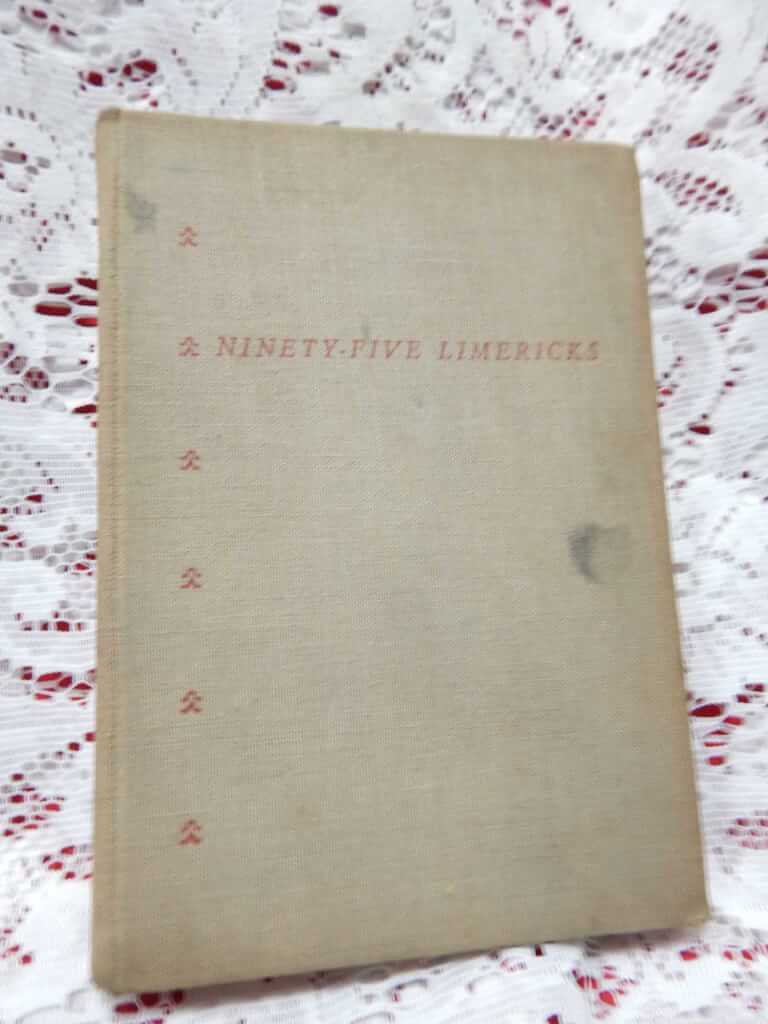 Ninety-Five Limericks | A Contribution to the Folk Lore of our Time | Collected and Edited by John Falmouth (The Limerick Press, Suffern, NY, 1932) 5"x7.25", unpaginated, tan cloth boards with red lettering and decorations, some soiling on boards, interior good, previous owner added a limerick about a young man from Calcutta in the end pages. Mr. Falmouth has a 6 page forward where he discusses the phallic nature of the limerick (with diagrams). A fun little book even though the profanity is exed out.
Ninety-Five Limericks | A Contribution to the Folk Lore of our Time | Collected and Edited by John Falmouth (The Limerick Press, Suffern, NY, 1932) 5"x7.25", unpaginated, tan cloth boards with red lettering and decorations, some soiling on boards, interior good, previous owner added a limerick about a young man from Calcutta in the end pages. Mr. Falmouth has a 6 page forward where he discusses the phallic nature of the limerick (with diagrams). A fun little book even though the profanity is exed out. -
Out of stock

 2.25" x 2.75" Shackle Antique hand-forged iron shackles from a farm in Bulgaria. They have been cleaned up and seasoned much like you'd season your cast iron skillet (repeatedly coated with oil and baked). No key is needed as they lock using a puzzle design.
2.25" x 2.75" Shackle Antique hand-forged iron shackles from a farm in Bulgaria. They have been cleaned up and seasoned much like you'd season your cast iron skillet (repeatedly coated with oil and baked). No key is needed as they lock using a puzzle design. -
Out of stock
 Nell in Bridewell (Lenchen im Zuchthause): Description of the System of Corporal Punishment (Flagellation) in the Female Prisons of South Germany up to the year 1848; a contribution to the history of manners., W. Reinhard, trans. W.C. Costello Ph. D. and A. R. Allinson M. A. (Psych Press [New York], 1932) 9 5/8" X 6 1/2", 326pp, hardbound, black cloth spine over orange cloth boards, gilt lettering and bands on spine, fore and bottom edge deckle, just good condition, soiling and rubbing on front cover, interior clean, some pages unopened, ex libris Joe H. and Bertha M. Shryock Although the title suggests that this is a "study", it goes beyond the facts and delves into the minds of those who are doing the punishing and those who are being humiliated and punished. Publishers of these "flagellation novels" would often lesson their liability by representing their books as academic studies. Often they would go unnoticed by the larger community unaware of the erotic nature of such a book to a certain segment of the public. In this book, Nell describes in graphic terms the merciless floggings she witnessed of girls and young women, as well as of boys and men and confesses to disturbingly confusing emotions that such sights occasioned in her. She recalls the lustful expressions on the faces of the onlookers, records the fervent words of gratitude to the skillful flogger from the lips of grand ladies who "were only too delighted to see such girls whipped", and tells of the evidently sensual appetites such cruelties incited in the torturers. This edition is a facsimile reprint of Carrington's 1900 translation. Added to it are very nice illustrations [woodcuts?] by an unknown artist.
Nell in Bridewell (Lenchen im Zuchthause): Description of the System of Corporal Punishment (Flagellation) in the Female Prisons of South Germany up to the year 1848; a contribution to the history of manners., W. Reinhard, trans. W.C. Costello Ph. D. and A. R. Allinson M. A. (Psych Press [New York], 1932) 9 5/8" X 6 1/2", 326pp, hardbound, black cloth spine over orange cloth boards, gilt lettering and bands on spine, fore and bottom edge deckle, just good condition, soiling and rubbing on front cover, interior clean, some pages unopened, ex libris Joe H. and Bertha M. Shryock Although the title suggests that this is a "study", it goes beyond the facts and delves into the minds of those who are doing the punishing and those who are being humiliated and punished. Publishers of these "flagellation novels" would often lesson their liability by representing their books as academic studies. Often they would go unnoticed by the larger community unaware of the erotic nature of such a book to a certain segment of the public. In this book, Nell describes in graphic terms the merciless floggings she witnessed of girls and young women, as well as of boys and men and confesses to disturbingly confusing emotions that such sights occasioned in her. She recalls the lustful expressions on the faces of the onlookers, records the fervent words of gratitude to the skillful flogger from the lips of grand ladies who "were only too delighted to see such girls whipped", and tells of the evidently sensual appetites such cruelties incited in the torturers. This edition is a facsimile reprint of Carrington's 1900 translation. Added to it are very nice illustrations [woodcuts?] by an unknown artist. -
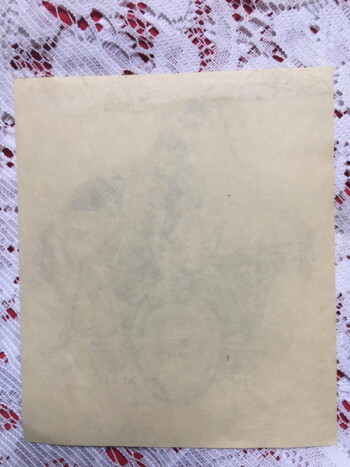
 Ex Libris H.E. McD, by Franz von Bayros 4 x 4.5" brown/black ink, previously pasted as evident by top part of back naked girl, animals, and child, presumably Ex libris for Horace E. McDonald Franz von Bayros (1866 – 1924) was an Austrian commercial artist, illustrator, and painter, now he is best known for his erotic work. He belonged to the Decadent movement in art, often utilizing erotic themes and phantasmagoric imagery. At the age 17, Bayros passed the entrance exam for the Vienna Academy with Eduard von Engerth. Bayros mixed in elegant society and soon belonged to the circle of friends of Johann Straub, whose step daughter Alice he married on 1896. The next year, Bayros moved to Munich. In 1904, Bayros gave his first exhibition in Munich, which was a great success. From 1904 until 1908, Bayros traveled to Paris and Italy for his studies. Typically, for an artist dealing with such imagery, von Bayros produced work under several pseudonyms, most notably Choisy Le Conin, and was hounded by authorities for much of his life for his “indecent” art often very imaginative, and including such taboo subjects as sadomasochism and bestiality. He became equally well-known for his masterly drawn figures of elegant modestly nude and non-nude women.
Ex Libris H.E. McD, by Franz von Bayros 4 x 4.5" brown/black ink, previously pasted as evident by top part of back naked girl, animals, and child, presumably Ex libris for Horace E. McDonald Franz von Bayros (1866 – 1924) was an Austrian commercial artist, illustrator, and painter, now he is best known for his erotic work. He belonged to the Decadent movement in art, often utilizing erotic themes and phantasmagoric imagery. At the age 17, Bayros passed the entrance exam for the Vienna Academy with Eduard von Engerth. Bayros mixed in elegant society and soon belonged to the circle of friends of Johann Straub, whose step daughter Alice he married on 1896. The next year, Bayros moved to Munich. In 1904, Bayros gave his first exhibition in Munich, which was a great success. From 1904 until 1908, Bayros traveled to Paris and Italy for his studies. Typically, for an artist dealing with such imagery, von Bayros produced work under several pseudonyms, most notably Choisy Le Conin, and was hounded by authorities for much of his life for his “indecent” art often very imaginative, and including such taboo subjects as sadomasochism and bestiality. He became equally well-known for his masterly drawn figures of elegant modestly nude and non-nude women. -
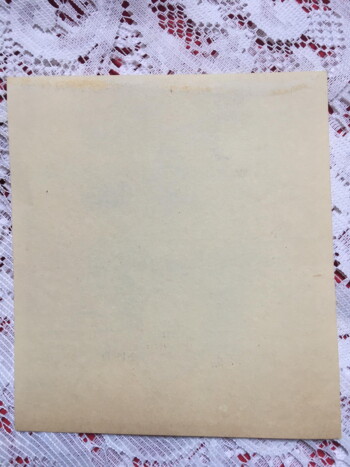
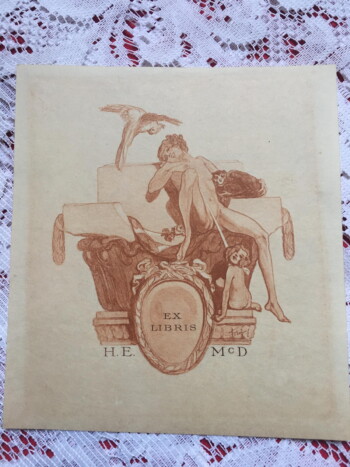 Ex Libris H.E. McD, by Franz von Bayros 4 x 4.5" red ink, previously pasted as evident by top part of back naked girl, animals, and child, presumably Ex libris for Horace E. McDonald Franz von Bayros (1866 – 1924) was an Austrian commercial artist, illustrator, and painter, now he is best known for his erotic work. He belonged to the Decadent movement in art, often utilizing erotic themes and phantasmagoric imagery. At the age 17, Bayros passed the entrance exam for the Vienna Academy with Eduard von Engerth. Bayros mixed in elegant society and soon belonged to the circle of friends of Johann Straub, whose step daughter Alice he married on 1896. The next year, Bayros moved to Munich. In 1904, Bayros gave his first exhibition in Munich, which was a great success. From 1904 until 1908, Bayros traveled to Paris and Italy for his studies. Typically, for an artist dealing with such imagery, von Bayros produced work under several pseudonyms, most notably Choisy Le Conin, and was hounded by authorities for much of his life for his “indecent” art often very imaginative, and including such taboo subjects as sadomasochism and bestiality. He became equally well-known for his masterly drawn figures of elegant modestly nude and non-nude women.
Ex Libris H.E. McD, by Franz von Bayros 4 x 4.5" red ink, previously pasted as evident by top part of back naked girl, animals, and child, presumably Ex libris for Horace E. McDonald Franz von Bayros (1866 – 1924) was an Austrian commercial artist, illustrator, and painter, now he is best known for his erotic work. He belonged to the Decadent movement in art, often utilizing erotic themes and phantasmagoric imagery. At the age 17, Bayros passed the entrance exam for the Vienna Academy with Eduard von Engerth. Bayros mixed in elegant society and soon belonged to the circle of friends of Johann Straub, whose step daughter Alice he married on 1896. The next year, Bayros moved to Munich. In 1904, Bayros gave his first exhibition in Munich, which was a great success. From 1904 until 1908, Bayros traveled to Paris and Italy for his studies. Typically, for an artist dealing with such imagery, von Bayros produced work under several pseudonyms, most notably Choisy Le Conin, and was hounded by authorities for much of his life for his “indecent” art often very imaginative, and including such taboo subjects as sadomasochism and bestiality. He became equally well-known for his masterly drawn figures of elegant modestly nude and non-nude women. -
 Female Masturbation, New Illustrated Edition, G. Lombard Kelly, M.D. (Banner Books, Inglewood, Calif., 1966) 8.75" X 5.25", 192pp, softcover, good+ condition "A complete reprinting of Dr. Kelly's monograph on the subject of female auto-eroticism, as well as articles on the same subject by other well-known doctors including Edwin Hirsch, Bernhard Bauer, A. von Schrench-Notzing, J. Richardson Parke and Albert Moll."
Female Masturbation, New Illustrated Edition, G. Lombard Kelly, M.D. (Banner Books, Inglewood, Calif., 1966) 8.75" X 5.25", 192pp, softcover, good+ condition "A complete reprinting of Dr. Kelly's monograph on the subject of female auto-eroticism, as well as articles on the same subject by other well-known doctors including Edwin Hirsch, Bernhard Bauer, A. von Schrench-Notzing, J. Richardson Parke and Albert Moll." -
 The Golden Ass of Apuleius, Lucius Apuleius Madaurensis (124-170 AD), trans. & intro Francis D. Byrne (The Imperial Press[Charles Carrington?], London, n.d. [1904?]) 8.25" X 6.25", xlix+588pp., hardbound, blue cloth boards with paper label on spine, top edge gilt, other edges deckled, just good condition, tearing to top of spine, no illustrations present. The Metamorphoses of Apuleius, which St. Augustine referred to as “The Golden Ass”, is the only Ancient Roman novel in Latin to survive in its entirety. The plot Lucius and his curiosity and insatiable desire to see and practice magic. While trying to perform a spell to transform into a bird, he is accidentally transformed into an ass. This leads to a long journey, literal and metaphorical, filled with in-set tales. He finally finds salvation through the intervention of the goddess Isis, whose cult he joins. The date of the original work is uncertain. Scholars are not sure if he wrote it in his youth or at the end of his life. He adapted the story from a Greek story written by Lucius of Patrae, however his original Greek text has long been lost.
The Golden Ass of Apuleius, Lucius Apuleius Madaurensis (124-170 AD), trans. & intro Francis D. Byrne (The Imperial Press[Charles Carrington?], London, n.d. [1904?]) 8.25" X 6.25", xlix+588pp., hardbound, blue cloth boards with paper label on spine, top edge gilt, other edges deckled, just good condition, tearing to top of spine, no illustrations present. The Metamorphoses of Apuleius, which St. Augustine referred to as “The Golden Ass”, is the only Ancient Roman novel in Latin to survive in its entirety. The plot Lucius and his curiosity and insatiable desire to see and practice magic. While trying to perform a spell to transform into a bird, he is accidentally transformed into an ass. This leads to a long journey, literal and metaphorical, filled with in-set tales. He finally finds salvation through the intervention of the goddess Isis, whose cult he joins. The date of the original work is uncertain. Scholars are not sure if he wrote it in his youth or at the end of his life. He adapted the story from a Greek story written by Lucius of Patrae, however his original Greek text has long been lost. -
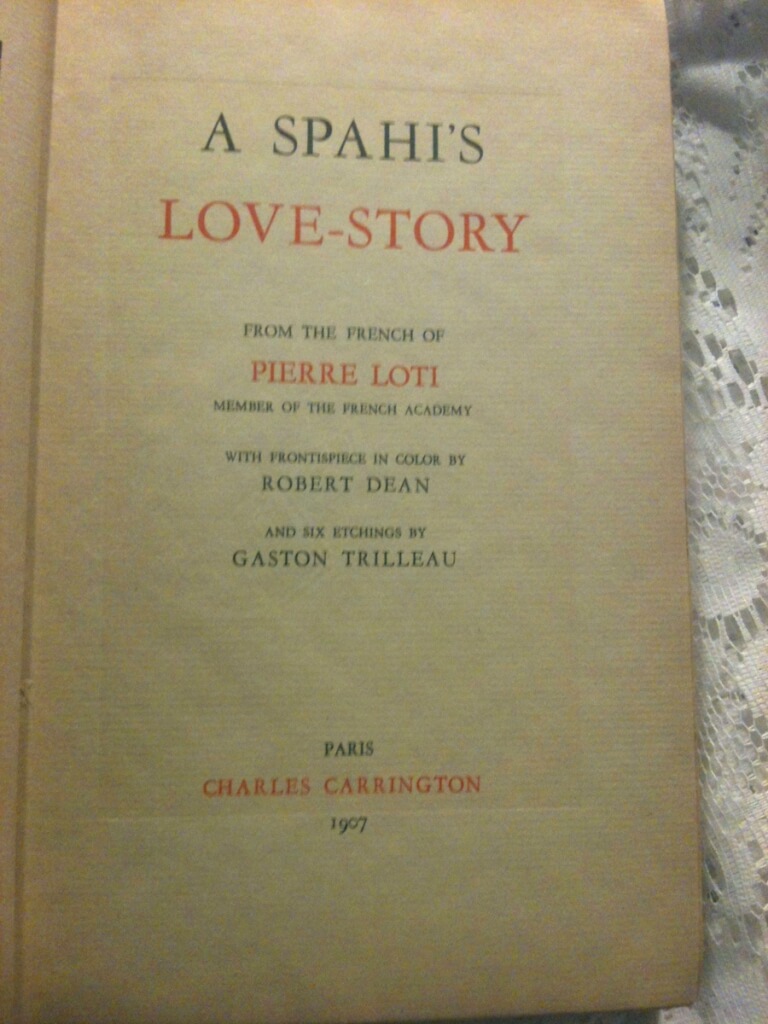
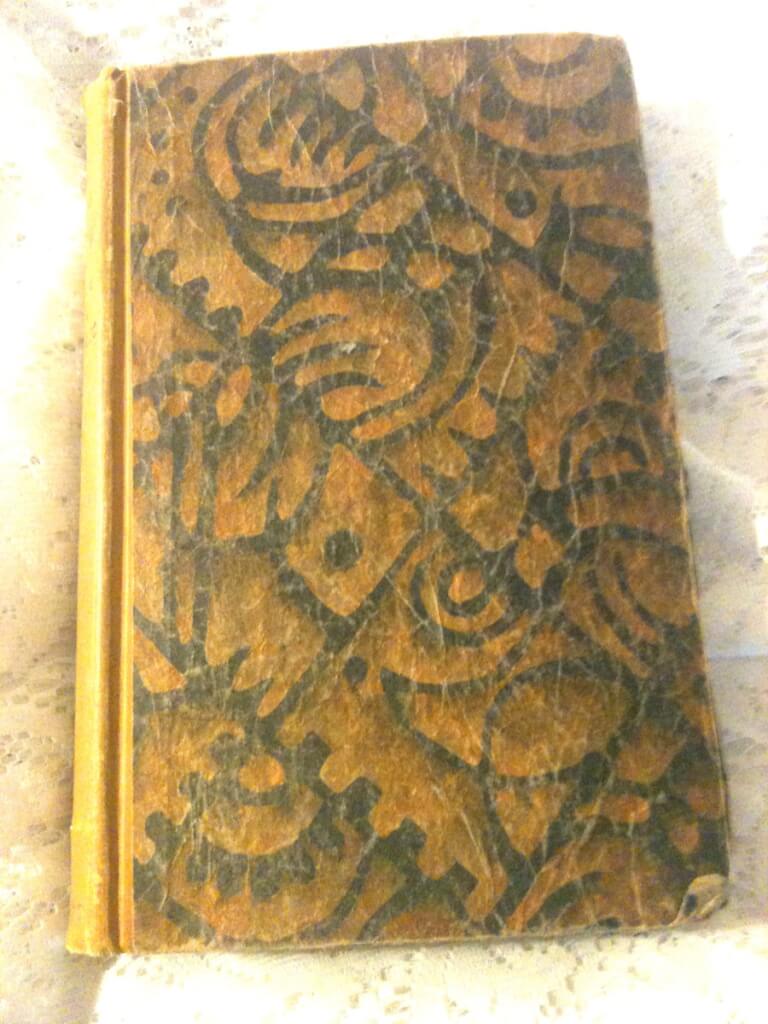 A Spahi’s Love-Story, Pierre Loti [pseud. Julien Viaud], illus. Robert Dean, illus. Gaston Trilleau (Charles Carrington, Paris, 1907, #17/1000) 9″ x 5.75″, xii+330pp, hardbound, yellow cloth and batik design paper over boards, tipped-in color frontispiece, hand-made paper, deckled edges, good+ condition Julien Viaud (1850-1923) was a French novelist and naval officer. This his third novel (originally titled “Le Roman d’un Spahi”), was originally published in 1881. It recounts the tragic story in the dark middle ages of a Turkish soldier, who fell in love with a woman from a far away culture with a very different background. Color frontispiece by Robert Dean tipped in and six etchings by Gaston Trilleau throughout the book.
A Spahi’s Love-Story, Pierre Loti [pseud. Julien Viaud], illus. Robert Dean, illus. Gaston Trilleau (Charles Carrington, Paris, 1907, #17/1000) 9″ x 5.75″, xii+330pp, hardbound, yellow cloth and batik design paper over boards, tipped-in color frontispiece, hand-made paper, deckled edges, good+ condition Julien Viaud (1850-1923) was a French novelist and naval officer. This his third novel (originally titled “Le Roman d’un Spahi”), was originally published in 1881. It recounts the tragic story in the dark middle ages of a Turkish soldier, who fell in love with a woman from a far away culture with a very different background. Color frontispiece by Robert Dean tipped in and six etchings by Gaston Trilleau throughout the book. -
 Venus in Furs, Leopold von Sacher-Masoch, trans. Fernanda Savage (Privately Printed For Subscirbers Only. 1921, [first english translation?] limited first edition thus, #1045/1225) Venus in Furs (German: Venus im Pelz) is a novella by Leopold Ritter von Sacher-Masoch (1836-1895), an Austrian writer and journalist. It is now his best known work and because of its themes the term masochism is derived from his name, coined by the Austrian psychiatrist, Krafft-Ebing. The novel was to be part of an epic series that Sacher-Masoch envisioned called Legacy of Cain. Venus in Furs was part of Love, the first volume of the series. It was published in 1870. The novel draws themes, like female dominance and sadomasochism, and character inspiration heavily from Sacher-Masoch's own life. Wanda von Dunajew, the novel's central female character, was modelled after his mistress Baroness Fanny Pistor. In December 1869 the two signed a contract making him her slave for a period of 6 months. In 1873, after the publication of Venus in Furs, Sacher-Masoch married Aurora von Rümelin who he pressured to continue the lifestyle he wrote about in his book. After 10 years they divorced. Rümelin, using the pseudonym of the books title character, "Wanda von Dunajew", wrote Meine Lebensbeichte (My Life Confession) published in 1906. It detailed Sacher-Masoch's private life and her relationship with him. During his lifetime, Sacher-Masoch was well known as a man of letters, a utopian thinker who espoused socialist and humanist ideals in his fiction and non-fiction. Most of his works remain untranslated into English. Until recently, his novel Venus in Furs was his only book commonly available in English.
Venus in Furs, Leopold von Sacher-Masoch, trans. Fernanda Savage (Privately Printed For Subscirbers Only. 1921, [first english translation?] limited first edition thus, #1045/1225) Venus in Furs (German: Venus im Pelz) is a novella by Leopold Ritter von Sacher-Masoch (1836-1895), an Austrian writer and journalist. It is now his best known work and because of its themes the term masochism is derived from his name, coined by the Austrian psychiatrist, Krafft-Ebing. The novel was to be part of an epic series that Sacher-Masoch envisioned called Legacy of Cain. Venus in Furs was part of Love, the first volume of the series. It was published in 1870. The novel draws themes, like female dominance and sadomasochism, and character inspiration heavily from Sacher-Masoch's own life. Wanda von Dunajew, the novel's central female character, was modelled after his mistress Baroness Fanny Pistor. In December 1869 the two signed a contract making him her slave for a period of 6 months. In 1873, after the publication of Venus in Furs, Sacher-Masoch married Aurora von Rümelin who he pressured to continue the lifestyle he wrote about in his book. After 10 years they divorced. Rümelin, using the pseudonym of the books title character, "Wanda von Dunajew", wrote Meine Lebensbeichte (My Life Confession) published in 1906. It detailed Sacher-Masoch's private life and her relationship with him. During his lifetime, Sacher-Masoch was well known as a man of letters, a utopian thinker who espoused socialist and humanist ideals in his fiction and non-fiction. Most of his works remain untranslated into English. Until recently, his novel Venus in Furs was his only book commonly available in English. -
 Petting as an Erotic Exercise: a study of the significance and techniques of pre-coital play, D. O. Cauldwell, M.D. (Haldeman-Julius Publications, Girard, Kansas, 1948) 5.5” x 8.5″, 32pp. pamphlet, slight sunning/soiling, very good for age, interior clean. This is one of many books written by David O. Cauldwell (1897-1959), and published by Haldeman-Julius Publications. Dr. Cauldwell was a self-described sexologist who is usually credited with being the first person to use the term 'transsexual' and 'transsexualism'. Although that claim has been widely disputed, he did write some of the first works examining transgender issues. In this pamphlet Dr. Cauldwell writes about foreplay in most all its forms and a call for the normalization of activities that were often described as perversions.
Petting as an Erotic Exercise: a study of the significance and techniques of pre-coital play, D. O. Cauldwell, M.D. (Haldeman-Julius Publications, Girard, Kansas, 1948) 5.5” x 8.5″, 32pp. pamphlet, slight sunning/soiling, very good for age, interior clean. This is one of many books written by David O. Cauldwell (1897-1959), and published by Haldeman-Julius Publications. Dr. Cauldwell was a self-described sexologist who is usually credited with being the first person to use the term 'transsexual' and 'transsexualism'. Although that claim has been widely disputed, he did write some of the first works examining transgender issues. In this pamphlet Dr. Cauldwell writes about foreplay in most all its forms and a call for the normalization of activities that were often described as perversions. -
 Petting as an Erotic Exercise: a study of the significance and techniques of pre-coital play, D. O. Cauldwell, M.D. (Haldeman-Julius Publications, Girard, Kansas, 1948) 5.5” x 8.5″, 32pp. pamphlet, slight sunning/soiling, very good for age, interior clean. This is one of many books written by David O. Cauldwell (1897-1959), and published by Haldeman-Julius Publications. Dr. Cauldwell was a self-described sexologist who is usually credited with being the first person to use the term 'transsexual' and 'transsexualism'. Although that claim has been widely disputed, he did write some of the first works examining transgender issues. In this pamphlet Dr. Cauldwell writes about foreplay in most all its forms and a call for the normalization of activities that were often described as perversions.
Petting as an Erotic Exercise: a study of the significance and techniques of pre-coital play, D. O. Cauldwell, M.D. (Haldeman-Julius Publications, Girard, Kansas, 1948) 5.5” x 8.5″, 32pp. pamphlet, slight sunning/soiling, very good for age, interior clean. This is one of many books written by David O. Cauldwell (1897-1959), and published by Haldeman-Julius Publications. Dr. Cauldwell was a self-described sexologist who is usually credited with being the first person to use the term 'transsexual' and 'transsexualism'. Although that claim has been widely disputed, he did write some of the first works examining transgender issues. In this pamphlet Dr. Cauldwell writes about foreplay in most all its forms and a call for the normalization of activities that were often described as perversions. -
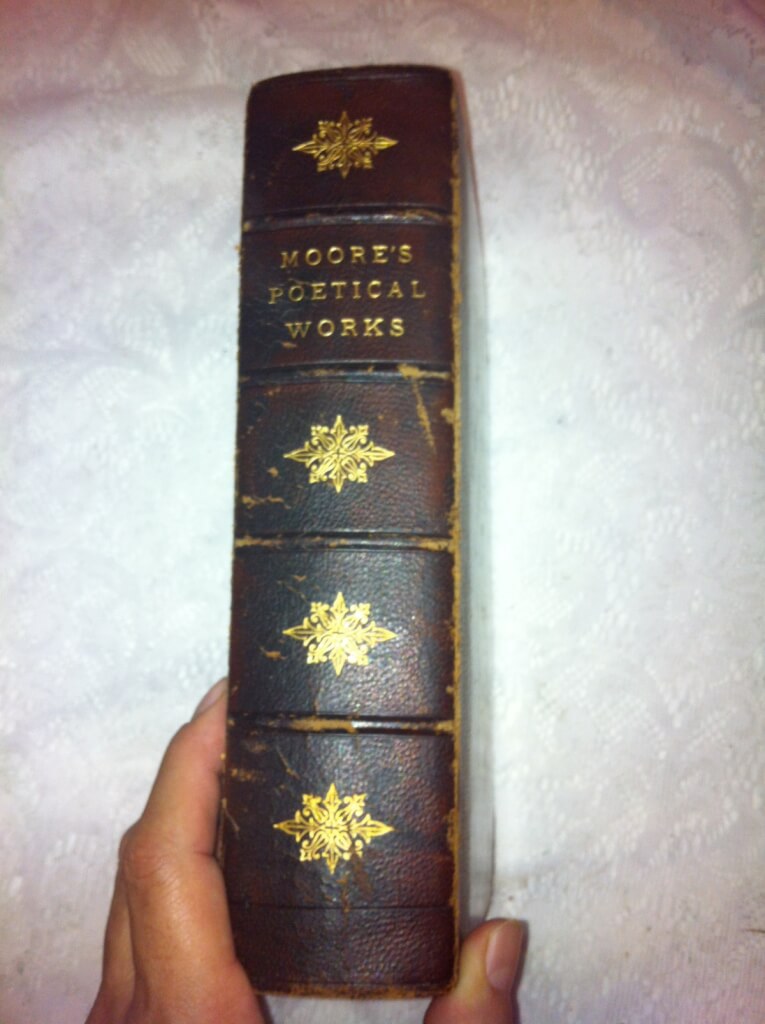
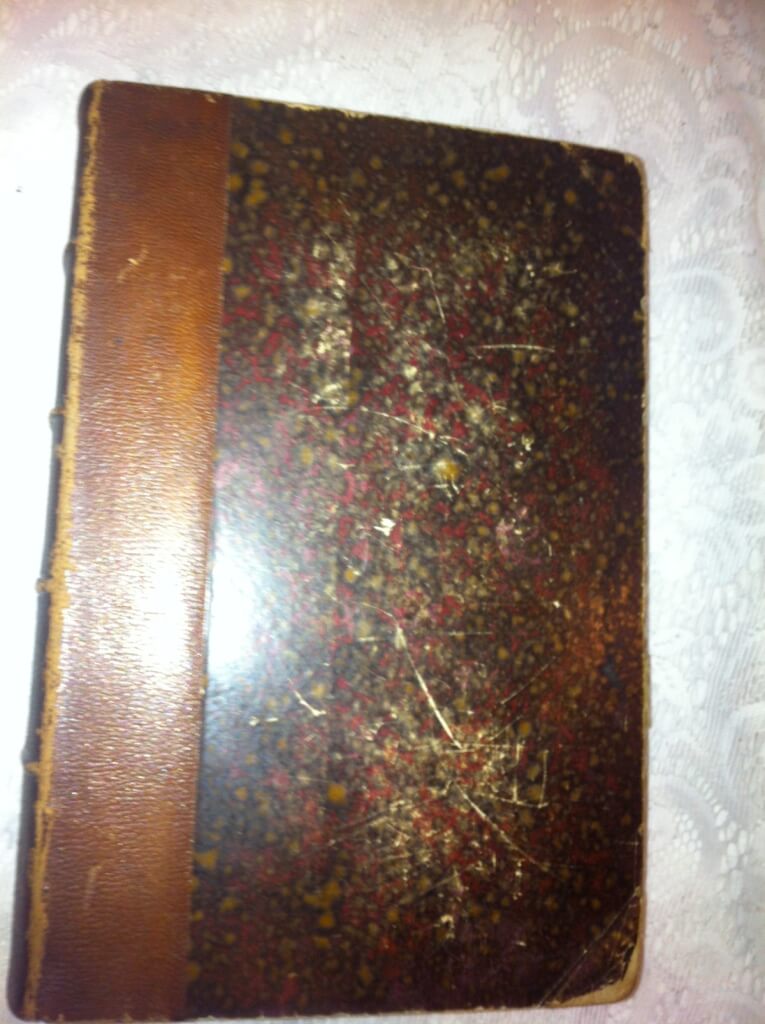 The Poetical Works of Thomas Moore, Thomas Moore (Oliver S. Felt, New York, nd. [c.1860]) 9.5" X 6.5", 776pp., half leather, 4 raised bands. 8 volumes in one. Beautiful steel engravings throughout. Fair condition, binding good, frontispiece missing. Thomas Moore (1779 - 1852) is considered Ireland's "National Bard". He was a poet, singer, songwriter, and entertainer. He was responsible, with John Murray, for burning Lord Byron's memoirs after his death.
The Poetical Works of Thomas Moore, Thomas Moore (Oliver S. Felt, New York, nd. [c.1860]) 9.5" X 6.5", 776pp., half leather, 4 raised bands. 8 volumes in one. Beautiful steel engravings throughout. Fair condition, binding good, frontispiece missing. Thomas Moore (1779 - 1852) is considered Ireland's "National Bard". He was a poet, singer, songwriter, and entertainer. He was responsible, with John Murray, for burning Lord Byron's memoirs after his death. -
 Flagellation & the Flagellants. A History of the Rod in All Countries from the earliest period to the present time, The Rev. Wm. M. Cooper, B.A. [James Glass Bertram] (William Reeves Bookseller Limited, London, nd [c. 1908]) 7 3/4" X 5 1/4", 544pp, hardbound no DJ, dark purple cloth boards with gilt stamp and blind stamp decorations to boards and spine, price is marked on spine in gilt "12/6" (12 shilling, 6 penny), gilting is faded, good condition, minor bumping and rubbing, binding good but leaning slightly, back board hinges worn but holding. Bertram was apprenticed to Tait's Edinburgh Magazine and became managing clerk, before joining a company of strolling players. He returned to Edinburgh and set up as a bookseller and newsagent. In 1855 he was appointed the editor of the North Briton and in 1872 of the Glasgow News, leaving to become a freelance journalist two years later. He published "flagellation" pornography under the names "Revd William Cooper" and "Margaret Anson". This edition was published by William Reeves sometime around 1908.
Flagellation & the Flagellants. A History of the Rod in All Countries from the earliest period to the present time, The Rev. Wm. M. Cooper, B.A. [James Glass Bertram] (William Reeves Bookseller Limited, London, nd [c. 1908]) 7 3/4" X 5 1/4", 544pp, hardbound no DJ, dark purple cloth boards with gilt stamp and blind stamp decorations to boards and spine, price is marked on spine in gilt "12/6" (12 shilling, 6 penny), gilting is faded, good condition, minor bumping and rubbing, binding good but leaning slightly, back board hinges worn but holding. Bertram was apprenticed to Tait's Edinburgh Magazine and became managing clerk, before joining a company of strolling players. He returned to Edinburgh and set up as a bookseller and newsagent. In 1855 he was appointed the editor of the North Briton and in 1872 of the Glasgow News, leaving to become a freelance journalist two years later. He published "flagellation" pornography under the names "Revd William Cooper" and "Margaret Anson". This edition was published by William Reeves sometime around 1908. -
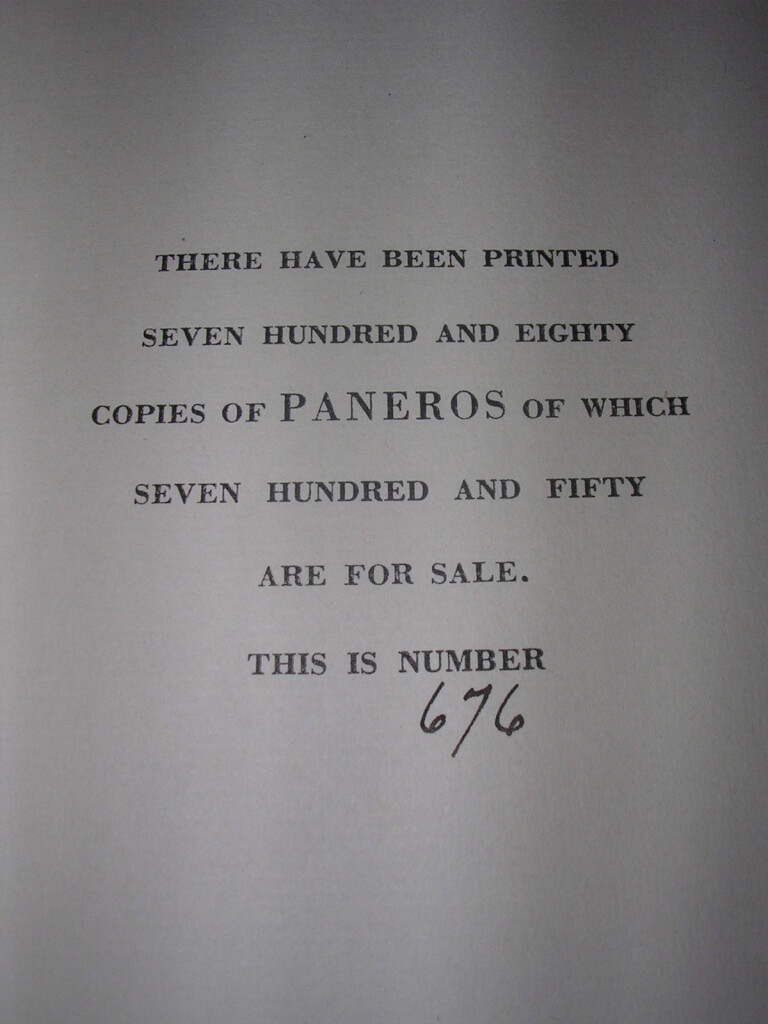
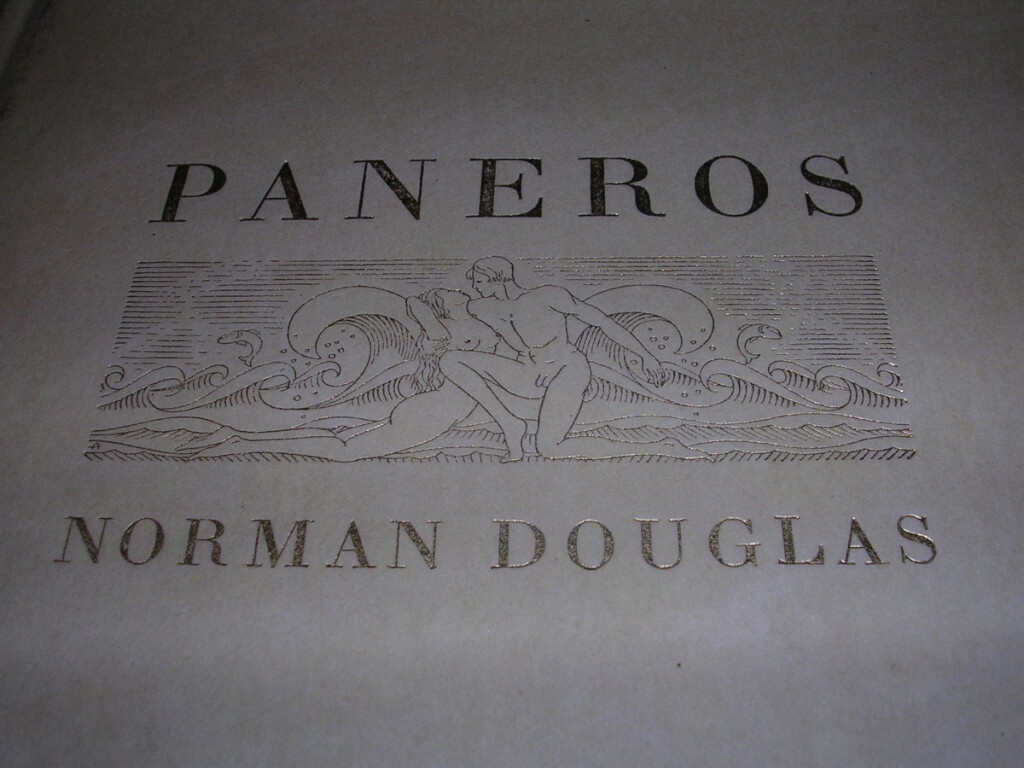 Paneros, some works on aphrodisiacs and the like, Normal Douglas, illus. Robert Rotter [limited, #676/780] (Robert M. McBride & Company, New York, 1932) 9.25" X 5.75", 120pp. Hardcover beige-tan vellum boards with gilt lettering and decorations, top edges gilt. Illustrations throughout. Book in excellent condition, light browning on the spine and edges, it appears to be unread as the binding is tight. #676/780 British author George Norman Douglas (1868 _ 1952) initially published this book in Italy. Doubtless, at the time, had this guide to the world of sexual stimulants been published in London, the author and publisher would have been prosecuted for obscenity. Soon thereafter this limited American version was printed. This edition features an erotic woodcut frontis, other illustrations by Robert Rotter and was limited to 780 copies. Hard to find book with an even harder to find slipcase. Interesting and beautifully illustrated.
Paneros, some works on aphrodisiacs and the like, Normal Douglas, illus. Robert Rotter [limited, #676/780] (Robert M. McBride & Company, New York, 1932) 9.25" X 5.75", 120pp. Hardcover beige-tan vellum boards with gilt lettering and decorations, top edges gilt. Illustrations throughout. Book in excellent condition, light browning on the spine and edges, it appears to be unread as the binding is tight. #676/780 British author George Norman Douglas (1868 _ 1952) initially published this book in Italy. Doubtless, at the time, had this guide to the world of sexual stimulants been published in London, the author and publisher would have been prosecuted for obscenity. Soon thereafter this limited American version was printed. This edition features an erotic woodcut frontis, other illustrations by Robert Rotter and was limited to 780 copies. Hard to find book with an even harder to find slipcase. Interesting and beautifully illustrated. -
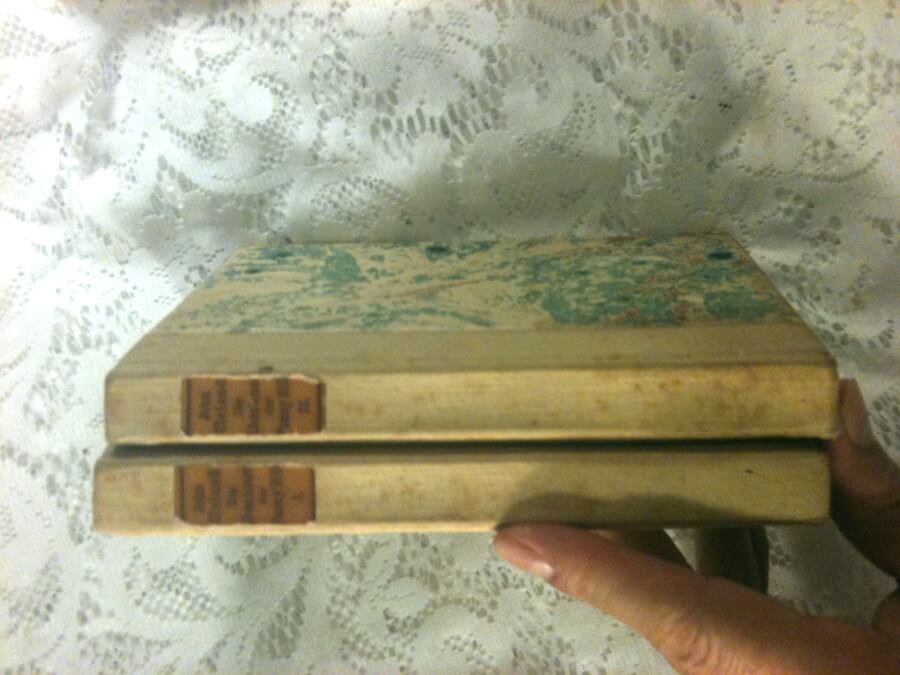
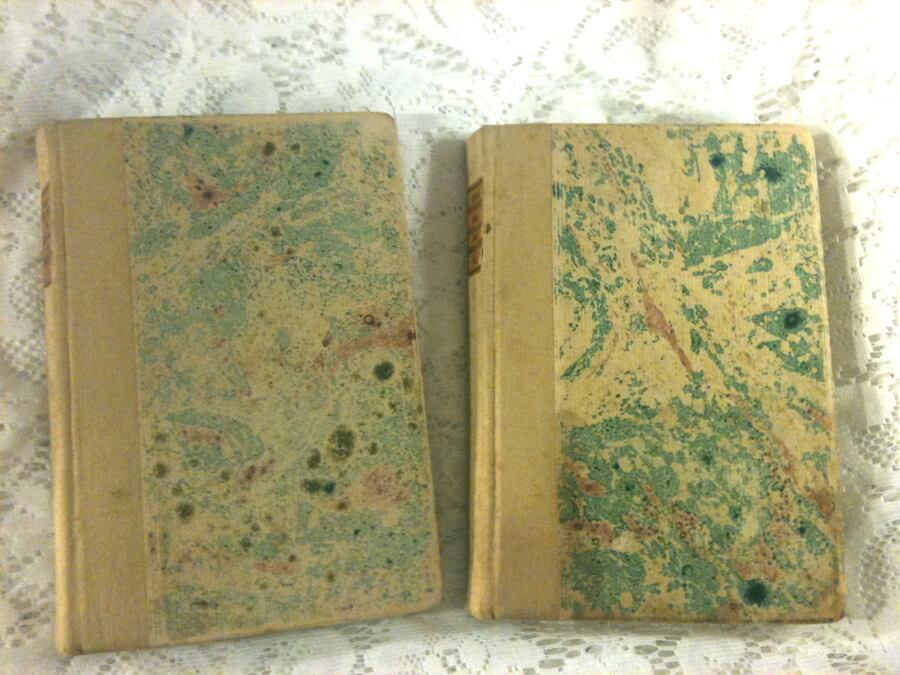 Die Abenteuer der Fanny Hill, John Cleland (np, München, 1919) 7.25" x 5", 2 vol., 178pp, 179-370pp, hardbound, marbled paper boards with cloth spine. Paper label on spine. Good condition for age, showing wear at hinges, both slightly cocked, pages yellowing. Boards worn at edges and corners Written while the author was in debtor's prison in London and first published in 1749, Fanny Hill is considered the first original English prose pornography, and the first pornography to use the form of the novel. One of the most prosecuted and banned books in history, it has become a synonym for obscenity. This German version of Fanny Hill is without mention of publisher. This was German "Bückware" or an item that was kept under the counter only for customers who asked for it. A nice 2 volume set in German.
Die Abenteuer der Fanny Hill, John Cleland (np, München, 1919) 7.25" x 5", 2 vol., 178pp, 179-370pp, hardbound, marbled paper boards with cloth spine. Paper label on spine. Good condition for age, showing wear at hinges, both slightly cocked, pages yellowing. Boards worn at edges and corners Written while the author was in debtor's prison in London and first published in 1749, Fanny Hill is considered the first original English prose pornography, and the first pornography to use the form of the novel. One of the most prosecuted and banned books in history, it has become a synonym for obscenity. This German version of Fanny Hill is without mention of publisher. This was German "Bückware" or an item that was kept under the counter only for customers who asked for it. A nice 2 volume set in German. -
Out of stock
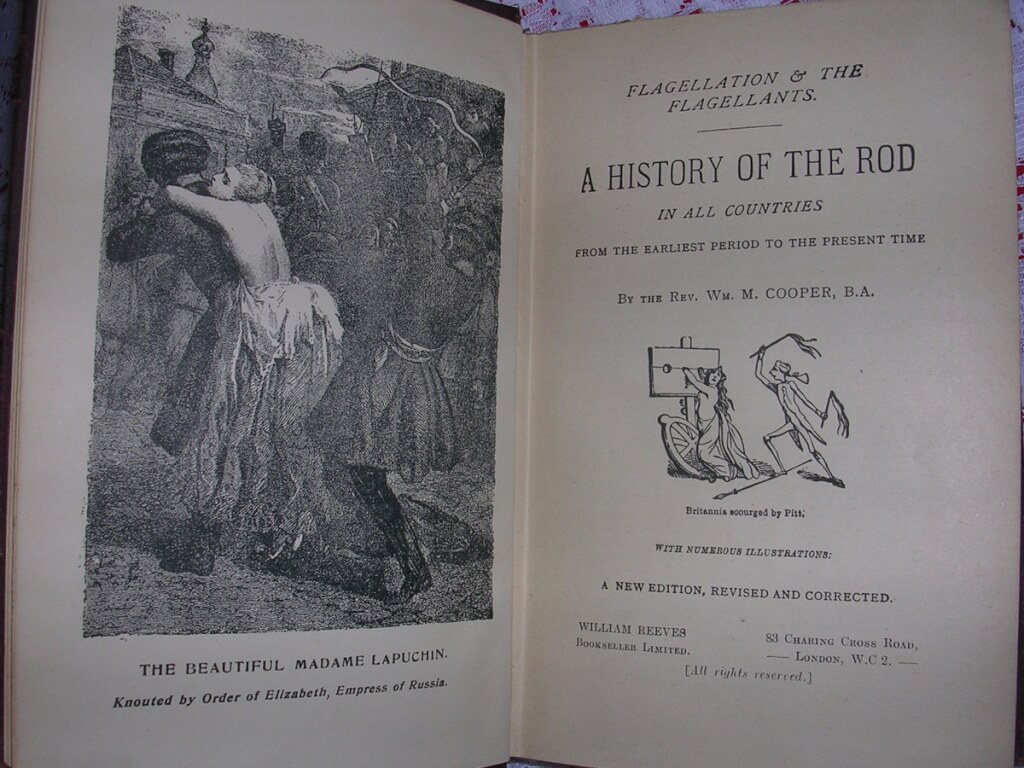
 Flagellation & the Flagellants. A History of the Rod in All Countries from the earliest period to the present time, The Rev. Wm. M. Cooper, B.A. [James Glass Bertram] (William Reeves Bookseller Limited, London, nd [c. 1908]) 7 3/4" X 5 1/4", 544pp, hardbound no DJ, dark purple cloth boards with gilt stamp and blind stamp decorations to boards and spine, good condition, minor bumping and rubbing, a few stains on lower fore-edge of boards. Bertram was apprenticed to Tait's Edinburgh Magazine and became managing clerk, before joining a company of strolling players. He returned to Edinburgh and set up as a bookseller and newsagent. In 1855 he was appointed the editor of the North Briton and in 1872 of the Glasgow News, leaving to become a freelance journalist two years later. He published "flagellation" pornography under the names "Revd William Cooper" and "Margaret Anson". This edition was published by William Reeves sometime around 1908.
Flagellation & the Flagellants. A History of the Rod in All Countries from the earliest period to the present time, The Rev. Wm. M. Cooper, B.A. [James Glass Bertram] (William Reeves Bookseller Limited, London, nd [c. 1908]) 7 3/4" X 5 1/4", 544pp, hardbound no DJ, dark purple cloth boards with gilt stamp and blind stamp decorations to boards and spine, good condition, minor bumping and rubbing, a few stains on lower fore-edge of boards. Bertram was apprenticed to Tait's Edinburgh Magazine and became managing clerk, before joining a company of strolling players. He returned to Edinburgh and set up as a bookseller and newsagent. In 1855 he was appointed the editor of the North Briton and in 1872 of the Glasgow News, leaving to become a freelance journalist two years later. He published "flagellation" pornography under the names "Revd William Cooper" and "Margaret Anson". This edition was published by William Reeves sometime around 1908. -
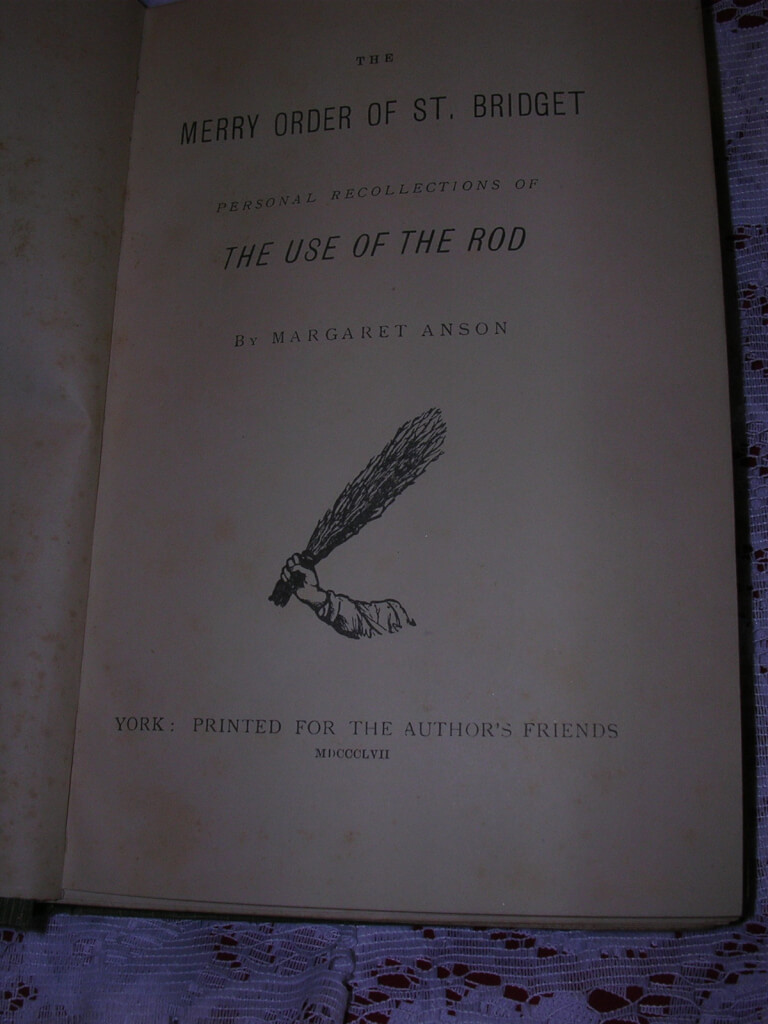
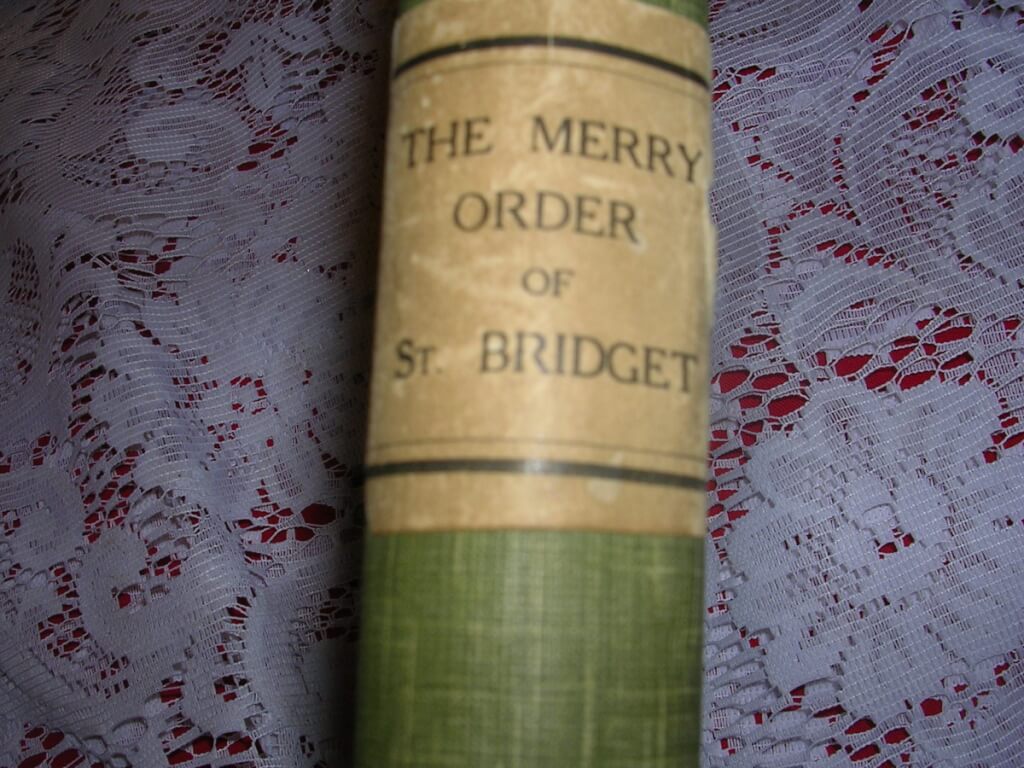 The Merry Order of St. Bridget, Margaret Anson (James Glass Bertram) (Printed for the Author's Friends, np, York, 1857 [fascimile copy of the 1868 edition c. 1930]) 7 7/8" X 5 1/4", 237pp, hardbound textured green cloth boards, paper lable on spine, deckle edges, corners and top/botton of spine bumped, binding loose but intact Bertram was apprenticed to Tait's Edinburgh Magazine and became managing clerk, before joining a company of strolling players. He returned to Edinburgh and set up as a bookseller and newsagent. In 1855 he was appointed the editor of the North Briton and in 1872 of the Glasgow News, leaving to become a freelance journalist two years later. He published "flagellation" pornography under the names "Revd William Cooper" and "Margaret Anson". In this graphic unveiling of 19th-century sexual adventures, Margaret Anson, a submissive handmaiden to the notorious Marquise St. Val_ry, describes the orgies at the Chateau de Floris, where the elite women of Paris submit to the subjugations and exotic indignities of the flesh that trigger ecstatic sensations. "Do you remember how we used to indulge in whipping on the sly, when Madame thought we were in bed? That was a very untutored way of proceeding. I have learned better since, and I can tell you that the passion for the rod is one which grows." 237 pp.
The Merry Order of St. Bridget, Margaret Anson (James Glass Bertram) (Printed for the Author's Friends, np, York, 1857 [fascimile copy of the 1868 edition c. 1930]) 7 7/8" X 5 1/4", 237pp, hardbound textured green cloth boards, paper lable on spine, deckle edges, corners and top/botton of spine bumped, binding loose but intact Bertram was apprenticed to Tait's Edinburgh Magazine and became managing clerk, before joining a company of strolling players. He returned to Edinburgh and set up as a bookseller and newsagent. In 1855 he was appointed the editor of the North Briton and in 1872 of the Glasgow News, leaving to become a freelance journalist two years later. He published "flagellation" pornography under the names "Revd William Cooper" and "Margaret Anson". In this graphic unveiling of 19th-century sexual adventures, Margaret Anson, a submissive handmaiden to the notorious Marquise St. Val_ry, describes the orgies at the Chateau de Floris, where the elite women of Paris submit to the subjugations and exotic indignities of the flesh that trigger ecstatic sensations. "Do you remember how we used to indulge in whipping on the sly, when Madame thought we were in bed? That was a very untutored way of proceeding. I have learned better since, and I can tell you that the passion for the rod is one which grows." 237 pp. -
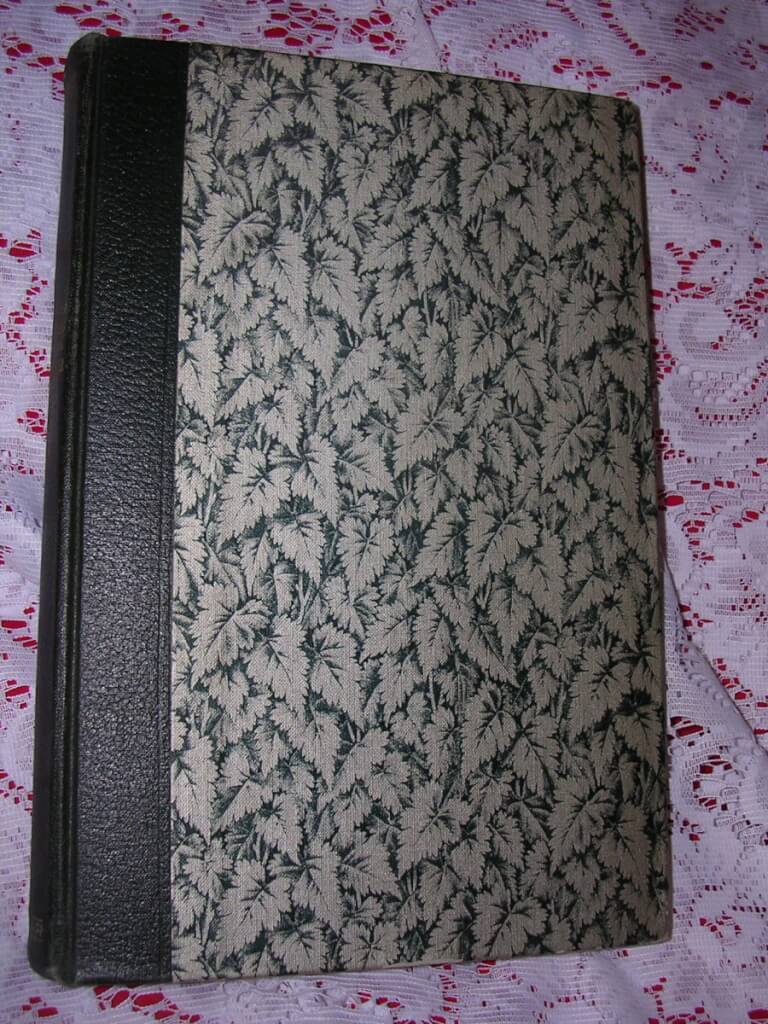
 Amatory Adventures of Sheik Mansour, A Master of the Art of Love, Hector France (Jul-Mar Press, 1932) 6 3/8 x 9 5/8", 249 pp, Stated, limited printing of 1000, but has no number. By Hector France, illustrated by Esaye Rabkin, this is a nice copy of this classic erotic novel. Book is a good used copy - cover is nice, has some rubbing to corners, overall age/use, as seen in the photo. Pages are all present and bound solid. Book has two 'Discarded' stamps, one at inside of the front cover, one at the title page. Has a damp stain along bottom margin of pages from front to page 19, small chip and tear at bottom of the title page. I see no other extraneous marks in this copy! Hector France (1837 - 1908) was a French author best known for his "orientalist" and flagellation tales. This is his risque tale of an Arab stud in action; a novel set around a Turkish harem. Translated by Alfred Allinson and reproduced from the Charles Carrington novel "The Chastisement of Mansour"
Amatory Adventures of Sheik Mansour, A Master of the Art of Love, Hector France (Jul-Mar Press, 1932) 6 3/8 x 9 5/8", 249 pp, Stated, limited printing of 1000, but has no number. By Hector France, illustrated by Esaye Rabkin, this is a nice copy of this classic erotic novel. Book is a good used copy - cover is nice, has some rubbing to corners, overall age/use, as seen in the photo. Pages are all present and bound solid. Book has two 'Discarded' stamps, one at inside of the front cover, one at the title page. Has a damp stain along bottom margin of pages from front to page 19, small chip and tear at bottom of the title page. I see no other extraneous marks in this copy! Hector France (1837 - 1908) was a French author best known for his "orientalist" and flagellation tales. This is his risque tale of an Arab stud in action; a novel set around a Turkish harem. Translated by Alfred Allinson and reproduced from the Charles Carrington novel "The Chastisement of Mansour" -
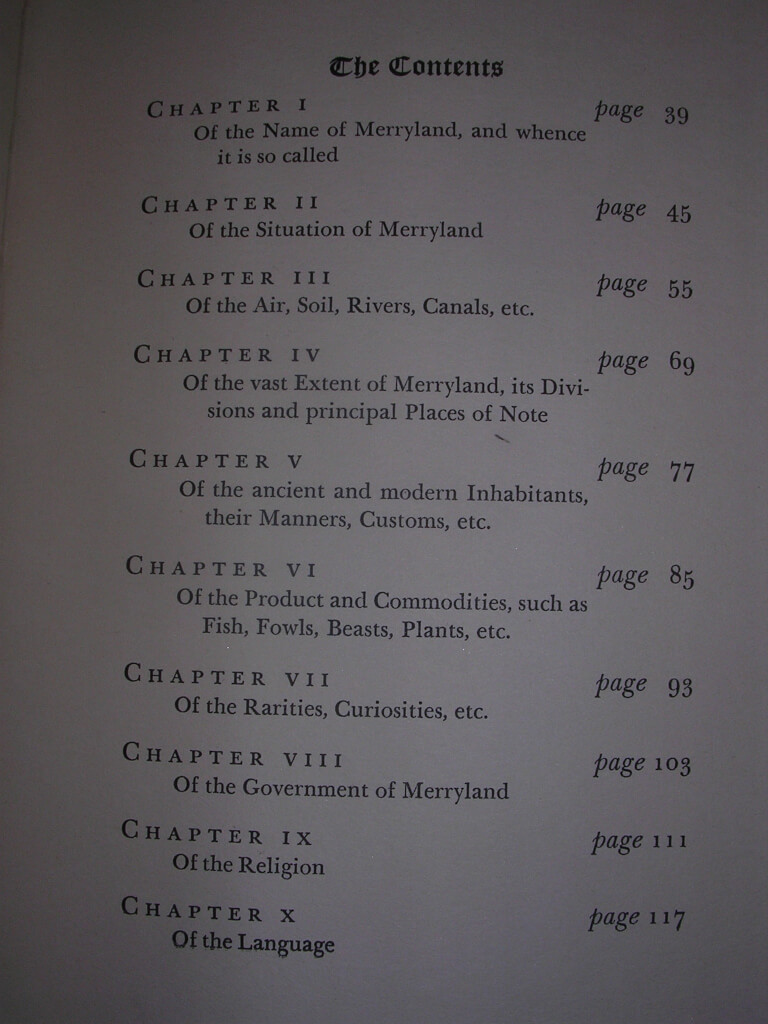
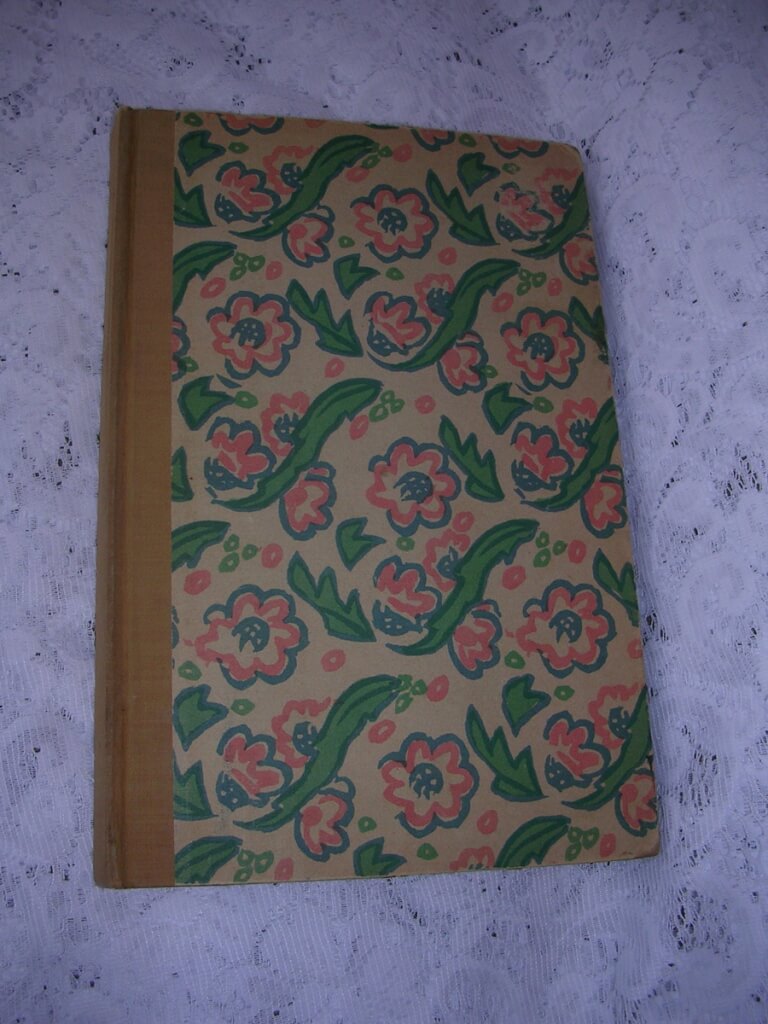 Merryland, Thomas Stretzer (Privately Issued, New York, Robin Hood House, 1932) 9 3/8" X 6 1/4", 136pp, hardbound no DJ, decorative paper boards with mylar protector, flower design, gilt lettering on spine, very good condition The Merryland books were a somewhat peculiar genre of English seventeenth and eighteenth century erotic fiction in which the female body was described in terms of a topographical metaphor derived from a pun on Maryland. Stretzer's book is typical of the genre in depicting the female body as a landscape that men explore, till, and plow. For example, he writes: "Her valleys are like Eden, her hills like Lebanon, she is a paradise of pleasure and a garden of delight."
Merryland, Thomas Stretzer (Privately Issued, New York, Robin Hood House, 1932) 9 3/8" X 6 1/4", 136pp, hardbound no DJ, decorative paper boards with mylar protector, flower design, gilt lettering on spine, very good condition The Merryland books were a somewhat peculiar genre of English seventeenth and eighteenth century erotic fiction in which the female body was described in terms of a topographical metaphor derived from a pun on Maryland. Stretzer's book is typical of the genre in depicting the female body as a landscape that men explore, till, and plow. For example, he writes: "Her valleys are like Eden, her hills like Lebanon, she is a paradise of pleasure and a garden of delight." -
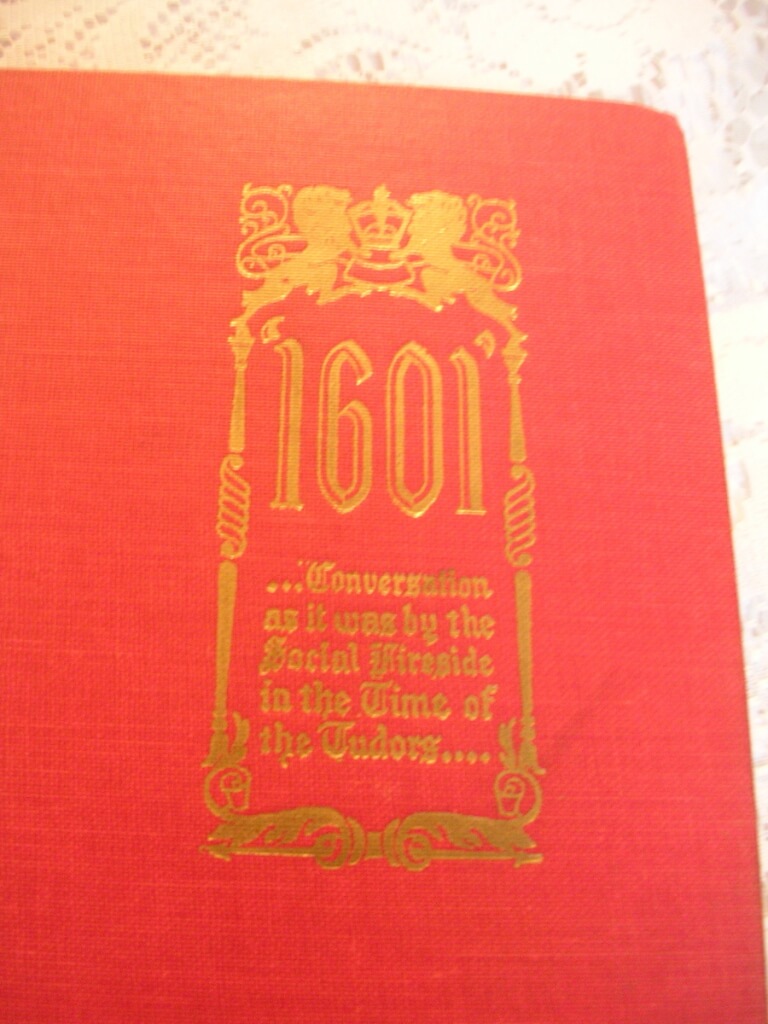
 Mark Twain's [Date, 1601.] Conversation As it was by the Social Fireside in the Time of the Tudors, Mark Twain, "With an Illuminating Introduction, Facetions Footnotes and a Bibliography by Franklin J. Meine" (Privately Printed for Lyle Stuart, New York, nd [c. 1939]) 9 1/2" X 6 1/4", 80pp, hardbound no DJ with slipcase, red cloth boards with gilt lettering and decoration, book very good condition, slight soiling on spine, slipcover good condition, faded spine and soiled but intact [Date: 1601.] Conversation, as it was the Social Fireside, in the Time of the Tudors is the title of a humorous work by Mark Twain, first published anonymously in 1880. Edward Wagenknecht once referred to it as "the most famous piece of pornography in American literature." Its content is irreverent and vulgar rather than obscene, and its purpose seems to be comedic shock rather than erotic arousal. It would thus qualify as ribaldry rather than pornography. Twain wrote 1601 during the summer of 1876 (between writing Tom Sawyer and Huckleberry Finn), for the amusement of his closest friend, Reverend Joseph Twichell, 1601 was later first published by another friend, John Hay, who later became Secretary of State. The work circulated among printers (due to it's often archaic type font) and many small batches were printed, however the authorship of the work remained unverified until Twain finally acknowledged he wrote it in 1906.
Mark Twain's [Date, 1601.] Conversation As it was by the Social Fireside in the Time of the Tudors, Mark Twain, "With an Illuminating Introduction, Facetions Footnotes and a Bibliography by Franklin J. Meine" (Privately Printed for Lyle Stuart, New York, nd [c. 1939]) 9 1/2" X 6 1/4", 80pp, hardbound no DJ with slipcase, red cloth boards with gilt lettering and decoration, book very good condition, slight soiling on spine, slipcover good condition, faded spine and soiled but intact [Date: 1601.] Conversation, as it was the Social Fireside, in the Time of the Tudors is the title of a humorous work by Mark Twain, first published anonymously in 1880. Edward Wagenknecht once referred to it as "the most famous piece of pornography in American literature." Its content is irreverent and vulgar rather than obscene, and its purpose seems to be comedic shock rather than erotic arousal. It would thus qualify as ribaldry rather than pornography. Twain wrote 1601 during the summer of 1876 (between writing Tom Sawyer and Huckleberry Finn), for the amusement of his closest friend, Reverend Joseph Twichell, 1601 was later first published by another friend, John Hay, who later became Secretary of State. The work circulated among printers (due to it's often archaic type font) and many small batches were printed, however the authorship of the work remained unverified until Twain finally acknowledged he wrote it in 1906. -
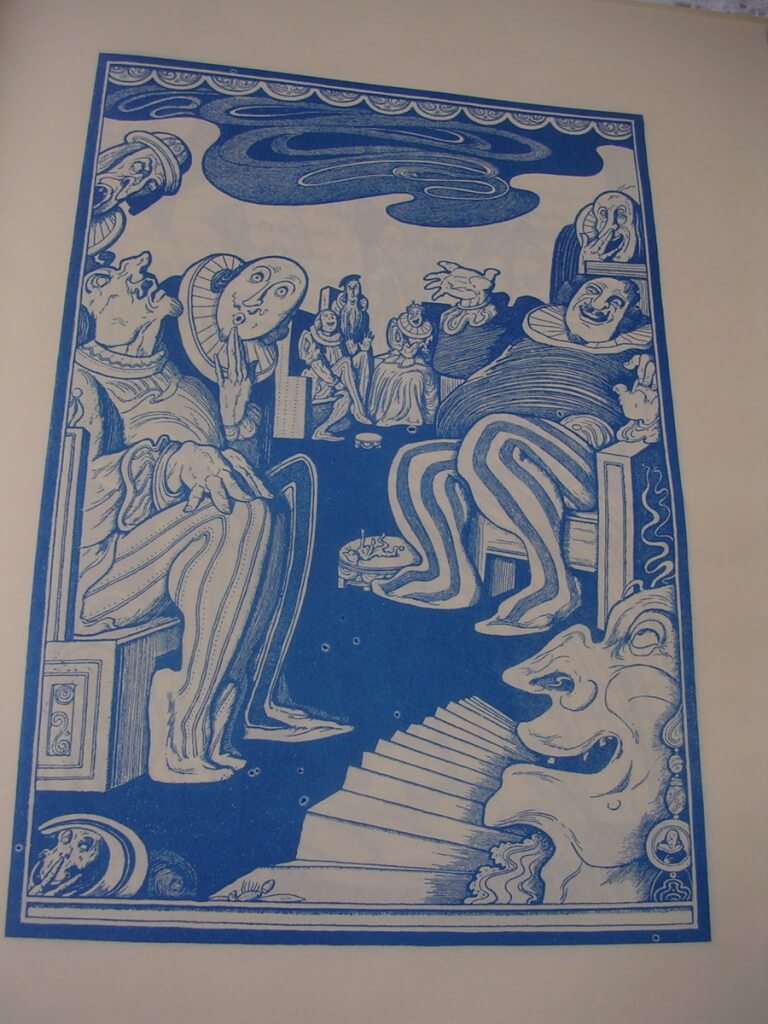
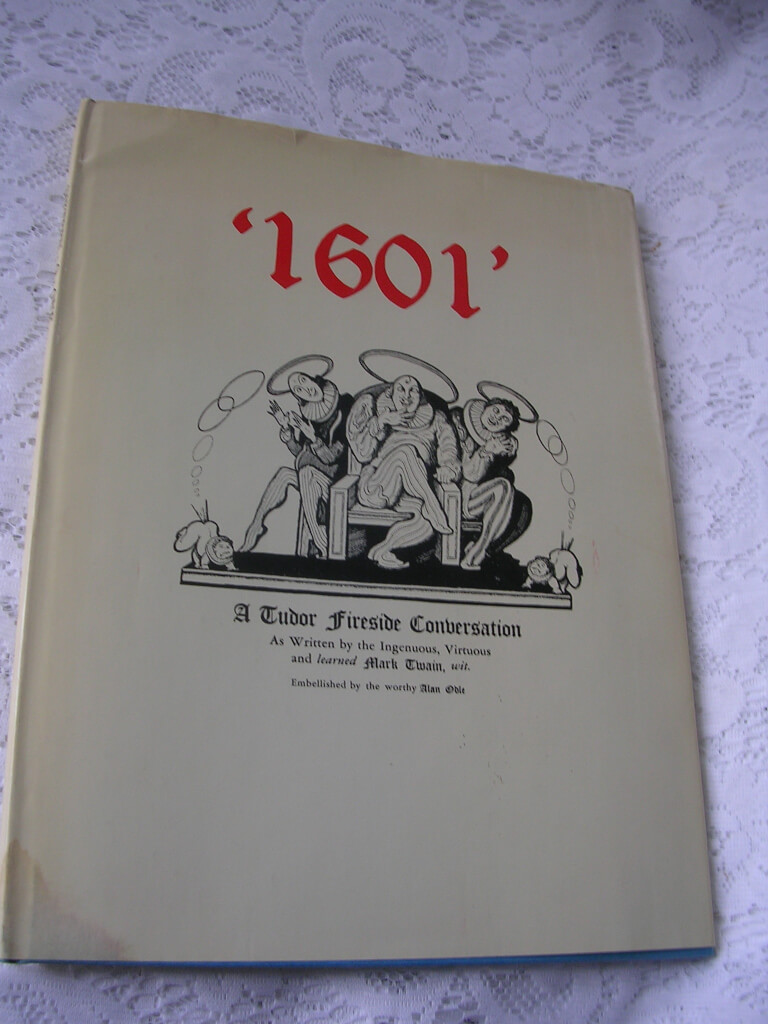 1601 A Tudor Fireside Conversation As Written by the Ingenuous, Virtuous and learned Mark Twain, wit., Embellished by the worthy Alan Odle, Mark Twain, illustrations Alan Odle (Land's End Press, USA, 1969, stated "At London, Printed for Subscribers Only and are to be sold at ye beare Back-Side in Maiden Lane") 12 1/2" X 9 1/2", 24pp (unpaginated), hardbound with dust jacket, blue boards with blue titles, pages, pages printed in such a way that the lower edge is uncut (six folded sheets of paper printed on one side, making up 4 pages) [Date: 1601.] Conversation, as it was the Social Fireside, in the Time of the Tudors is the title of a humorous work by Mark Twain, first published anonymously in 1880. Edward Wagenknecht once referred to it as "the most famous piece of pornography in American literature." Its content is irreverent and vulgar rather than obscene, and its purpose seems to be comedic shock rather than erotic arousal. It would thus qualify as ribaldry rather than pornography. Twain wrote 1601 during the summer of 1876 (between writing Tom Sawyer and Huckleberry Finn), for the amusement of his closest friend, Reverend Joseph Twichell, 1601 was later first published by another friend, John Hay, who later became Secretary of State. The work circulated among printers (due to it's often archaic type font) and many small batches were printed, however the authorship of the work remained unverified until Twain finally acknowledged he wrote it in 1906.
1601 A Tudor Fireside Conversation As Written by the Ingenuous, Virtuous and learned Mark Twain, wit., Embellished by the worthy Alan Odle, Mark Twain, illustrations Alan Odle (Land's End Press, USA, 1969, stated "At London, Printed for Subscribers Only and are to be sold at ye beare Back-Side in Maiden Lane") 12 1/2" X 9 1/2", 24pp (unpaginated), hardbound with dust jacket, blue boards with blue titles, pages, pages printed in such a way that the lower edge is uncut (six folded sheets of paper printed on one side, making up 4 pages) [Date: 1601.] Conversation, as it was the Social Fireside, in the Time of the Tudors is the title of a humorous work by Mark Twain, first published anonymously in 1880. Edward Wagenknecht once referred to it as "the most famous piece of pornography in American literature." Its content is irreverent and vulgar rather than obscene, and its purpose seems to be comedic shock rather than erotic arousal. It would thus qualify as ribaldry rather than pornography. Twain wrote 1601 during the summer of 1876 (between writing Tom Sawyer and Huckleberry Finn), for the amusement of his closest friend, Reverend Joseph Twichell, 1601 was later first published by another friend, John Hay, who later became Secretary of State. The work circulated among printers (due to it's often archaic type font) and many small batches were printed, however the authorship of the work remained unverified until Twain finally acknowledged he wrote it in 1906. -
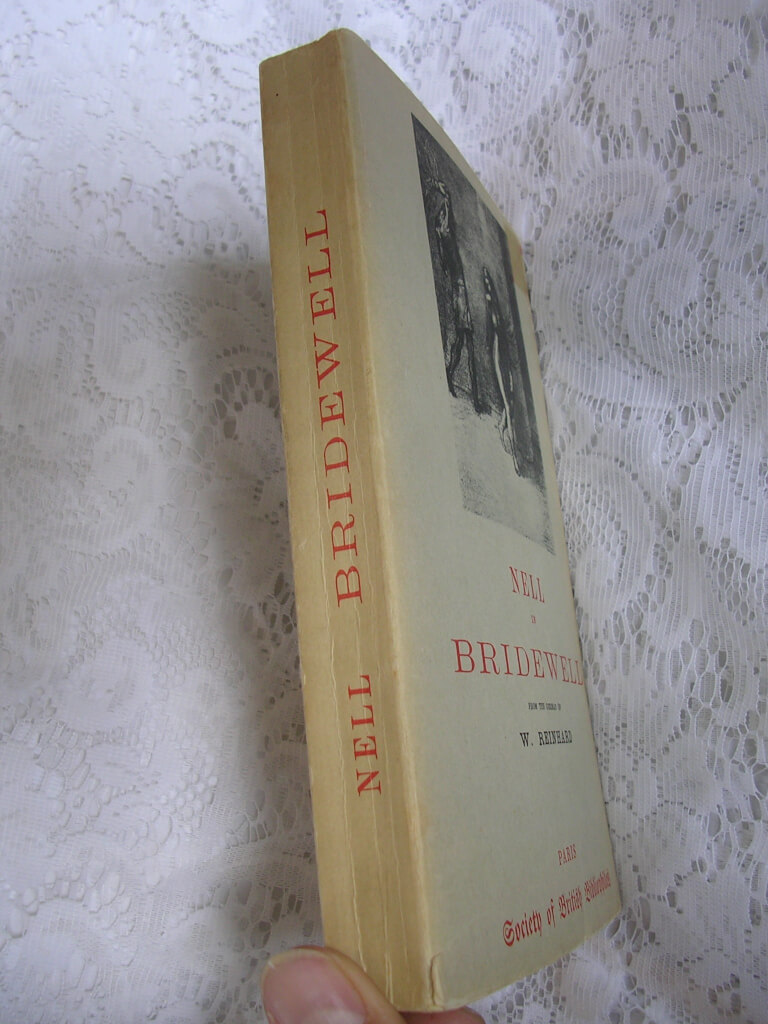
 Nell in Bridewell (Lenchen im Zuchthause), W. Reinhard, trans. W.C. Costello Ph. D. and A. R. Allinson M. A. (Society of British Bibliophiles, Paris, 1900) 8" X 5", 326pp, paperback, good condition, price tag mark on front cover, a tear and some bumping, spine is creased, binding is still good Subtitle: "Description of the System of Corporal Punishment (Flagellation) in the Female Prisons of South Germany up to the year 1848; a contribution to the history of manners." Although the title suggests that this is a "study", it goes beyond the facts and delves into the minds of those who are doing the punishing and those who are being humiliated and punished. Publishers of these "flagellation novels" would often lesson their liability by representing their books as academic studies. Often they would go unnoticed by the larger community unaware of the erotic nature of such a book to a certain segment of the public. In this book, Nell describes in graphic terms the merciless floggings she witnessed of girls and young women, as well as of boys and men and confesses to disturbingly confusing emotions that such sights occasioned in her. She recalls the lustful expressions on the faces of the onlookers, records the fervent words of gratitude to the skillful flogger from the lips of grand ladies who "were only too delighted to see such girls whipped", and tells of the evidently sensual appetites such cruelties incited in the torturers.
Nell in Bridewell (Lenchen im Zuchthause), W. Reinhard, trans. W.C. Costello Ph. D. and A. R. Allinson M. A. (Society of British Bibliophiles, Paris, 1900) 8" X 5", 326pp, paperback, good condition, price tag mark on front cover, a tear and some bumping, spine is creased, binding is still good Subtitle: "Description of the System of Corporal Punishment (Flagellation) in the Female Prisons of South Germany up to the year 1848; a contribution to the history of manners." Although the title suggests that this is a "study", it goes beyond the facts and delves into the minds of those who are doing the punishing and those who are being humiliated and punished. Publishers of these "flagellation novels" would often lesson their liability by representing their books as academic studies. Often they would go unnoticed by the larger community unaware of the erotic nature of such a book to a certain segment of the public. In this book, Nell describes in graphic terms the merciless floggings she witnessed of girls and young women, as well as of boys and men and confesses to disturbingly confusing emotions that such sights occasioned in her. She recalls the lustful expressions on the faces of the onlookers, records the fervent words of gratitude to the skillful flogger from the lips of grand ladies who "were only too delighted to see such girls whipped", and tells of the evidently sensual appetites such cruelties incited in the torturers. -
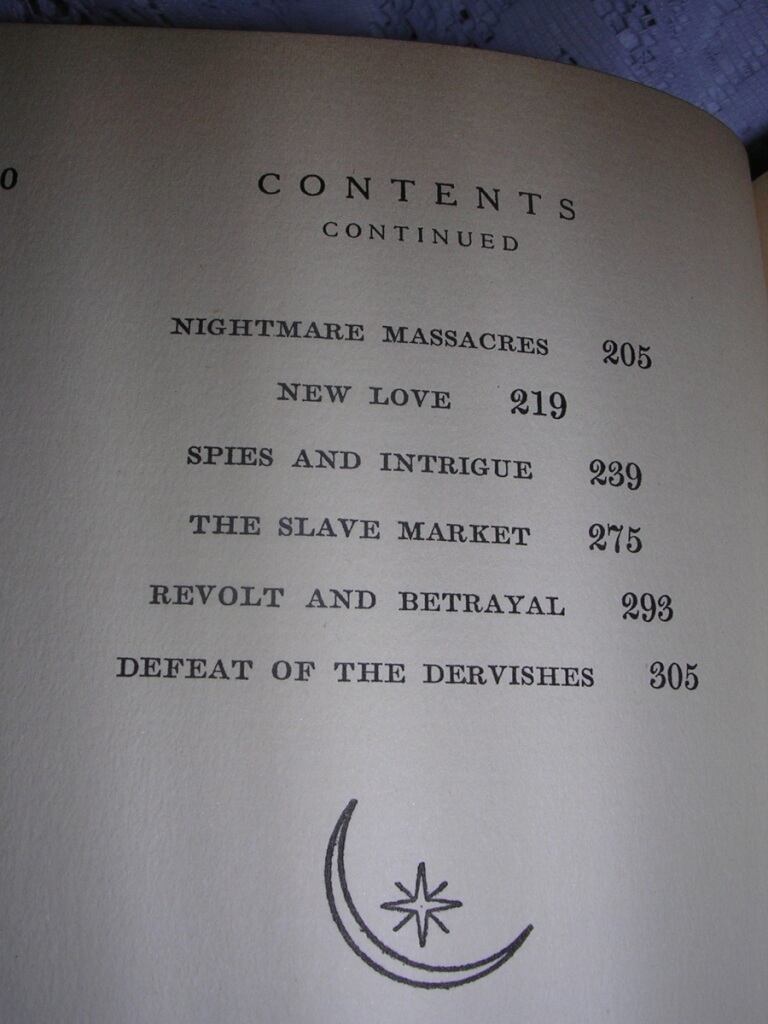
 Black Lust, Jean de Villiot [George Grassal (Hugues Rebell)] (Privately printed by The Panurge Press, Inc., New York, 1931, #365/2000) 8 5/8" X 6", 312pp, hardbound no DJ, cream cloth boards with black stamped decorations, top edge dyed blue, other edges deckle, good condition, slight soiling to boards, binding tight Jean de Villiot was a pseudonym used by several authors and compilers working for the publisher Charles Carrington writing novels and "studies" concerning flagellation, including Hugues Rebell (Georges Grassal), Hector France, Stéphane Arnoulin and Charles Carrington, himself. This novel is attributed to George Grassal (Hugues Rebell) originally written in French, in 1902, as "La Femme et son maître" (The Woman and her Master). In 1904 "Woman and her Master" was published in English by Charles Carrington. Panurge Press published this work as "Black Lust" in 1931. This book is a numbered limited edition copy of the Panurge Press edition.
Black Lust, Jean de Villiot [George Grassal (Hugues Rebell)] (Privately printed by The Panurge Press, Inc., New York, 1931, #365/2000) 8 5/8" X 6", 312pp, hardbound no DJ, cream cloth boards with black stamped decorations, top edge dyed blue, other edges deckle, good condition, slight soiling to boards, binding tight Jean de Villiot was a pseudonym used by several authors and compilers working for the publisher Charles Carrington writing novels and "studies" concerning flagellation, including Hugues Rebell (Georges Grassal), Hector France, Stéphane Arnoulin and Charles Carrington, himself. This novel is attributed to George Grassal (Hugues Rebell) originally written in French, in 1902, as "La Femme et son maître" (The Woman and her Master). In 1904 "Woman and her Master" was published in English by Charles Carrington. Panurge Press published this work as "Black Lust" in 1931. This book is a numbered limited edition copy of the Panurge Press edition. -
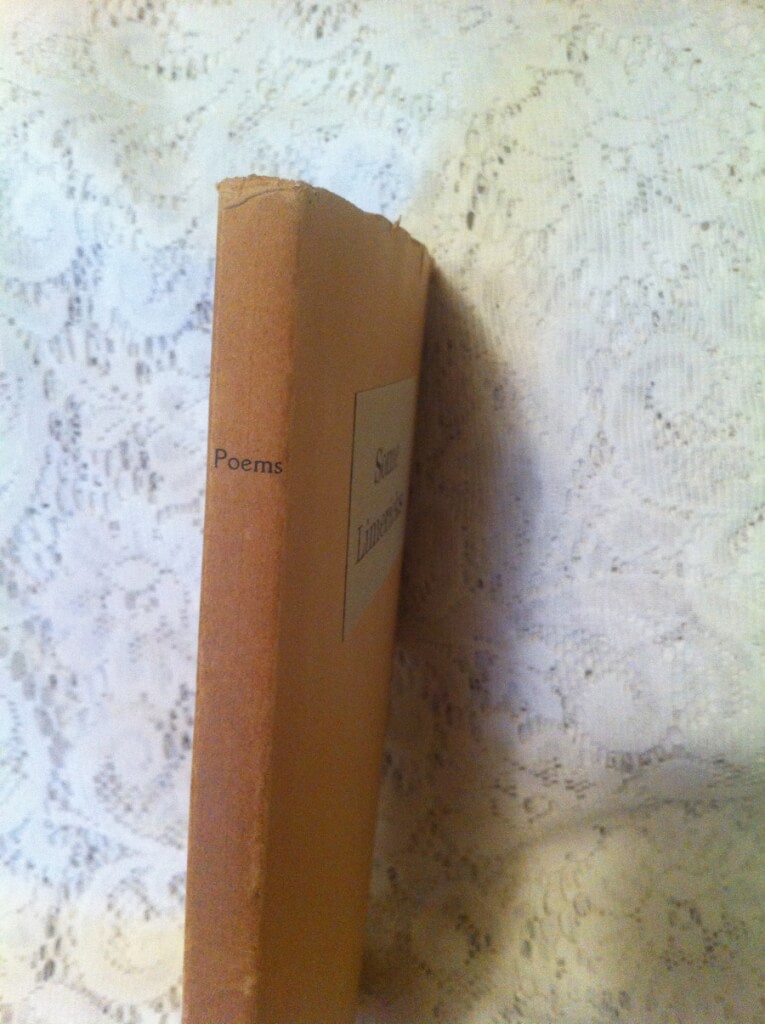
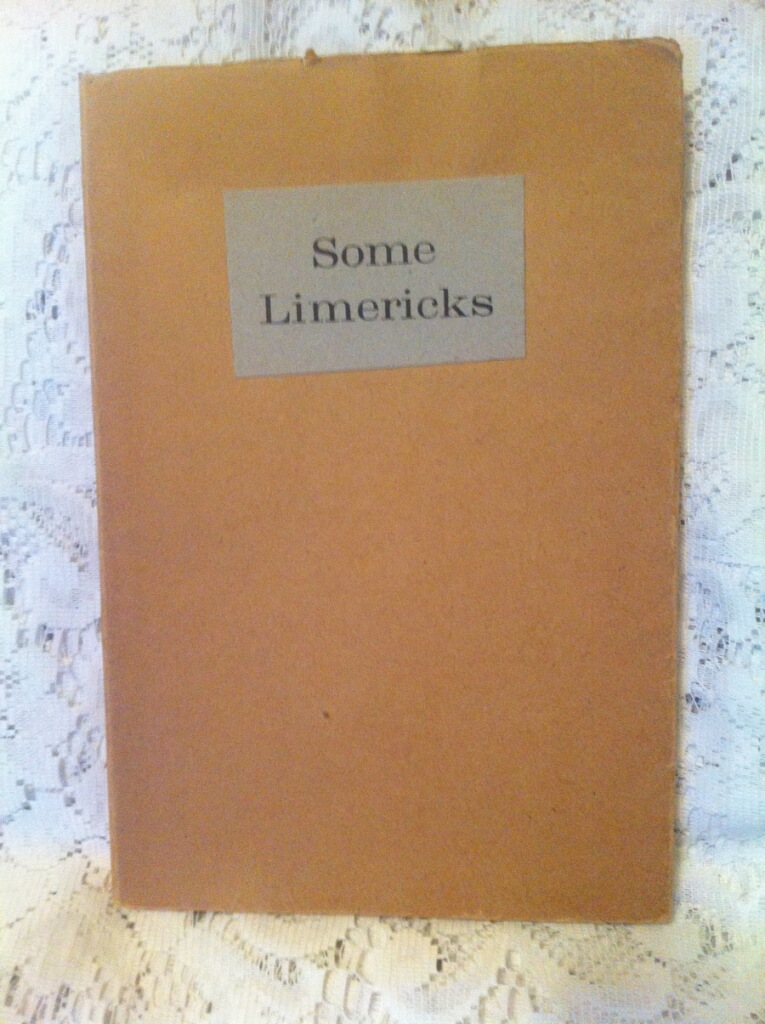 Some Limericks: Collected for the use of Students, & ensplendour’d with Introduction, Geographical Index, and with Notes Explanatory and Critical, by Norman Douglas (Nicholson and Whitney, Boston, 1942 [most likely published in Paris by Maurice Girodias of Olympia Press, early 1950's, a reprint of the Obelisk Press edition of 1939], stated 616/1000 "printed by The Brownbent Press, Boston, Mass.") 5.5" x 8.25", 117pp, near fine condition, unlabeled soft covers, dust jacket slightly warn at top with paper label "Some Limericks", spine of dust jacket simply reads "poems". Norman Douglas is an English author best known for his 1917 novel, South Wind. However, this particular book of his is one of the most pirated books of it's kind. Unable to find a publisher willing to take it on, Douglas published it himself in 1928. It was published by Oblisk Press in 1939 (said to be the last book secured for the company before Jack Kahane's lifetime). This particular edition was published by Mr. Kahane's son, Maurice Girodias, who inherited his father's press, but changed the name to Olympia Press. It is said that this book has everything, blasphemy, incest, paedophilia, bestiality. Accompanying each limericks are entertaining (if not scholarly) notes explaining the supposed origin and/or circumstances by which the rhymes were procured. So obscene and offensive, even Olympia Press, known for it's erotic literature, chose to publish under a false imprint.
Some Limericks: Collected for the use of Students, & ensplendour’d with Introduction, Geographical Index, and with Notes Explanatory and Critical, by Norman Douglas (Nicholson and Whitney, Boston, 1942 [most likely published in Paris by Maurice Girodias of Olympia Press, early 1950's, a reprint of the Obelisk Press edition of 1939], stated 616/1000 "printed by The Brownbent Press, Boston, Mass.") 5.5" x 8.25", 117pp, near fine condition, unlabeled soft covers, dust jacket slightly warn at top with paper label "Some Limericks", spine of dust jacket simply reads "poems". Norman Douglas is an English author best known for his 1917 novel, South Wind. However, this particular book of his is one of the most pirated books of it's kind. Unable to find a publisher willing to take it on, Douglas published it himself in 1928. It was published by Oblisk Press in 1939 (said to be the last book secured for the company before Jack Kahane's lifetime). This particular edition was published by Mr. Kahane's son, Maurice Girodias, who inherited his father's press, but changed the name to Olympia Press. It is said that this book has everything, blasphemy, incest, paedophilia, bestiality. Accompanying each limericks are entertaining (if not scholarly) notes explaining the supposed origin and/or circumstances by which the rhymes were procured. So obscene and offensive, even Olympia Press, known for it's erotic literature, chose to publish under a false imprint. -
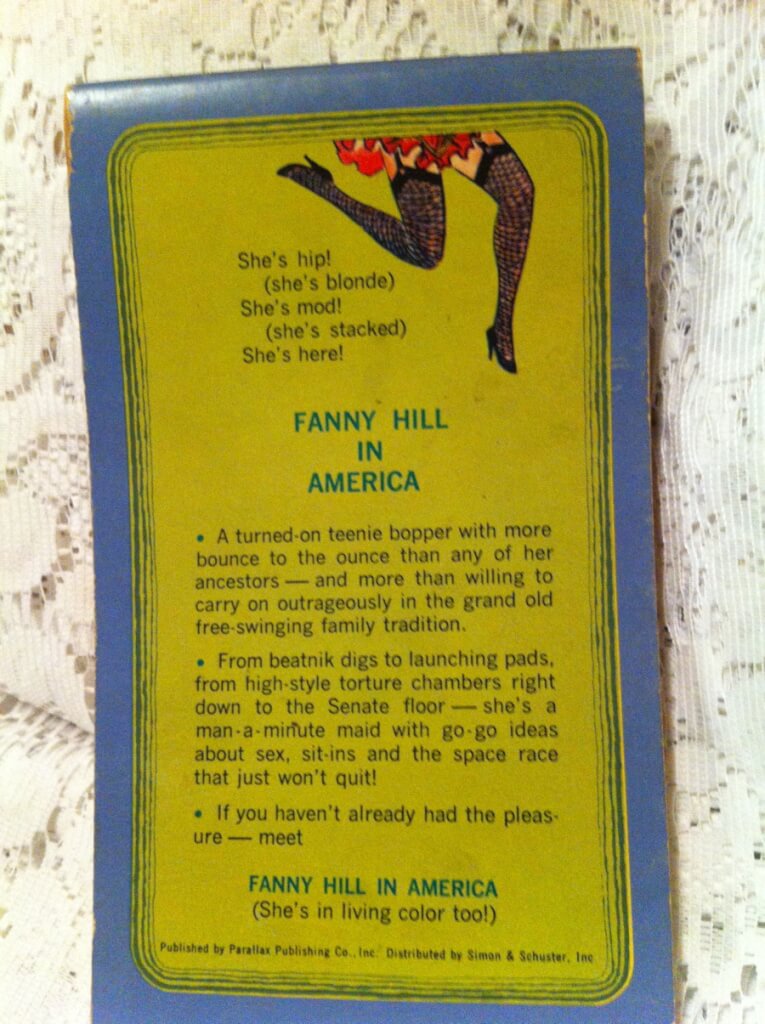
 Fanny Hill in America, by Frank Fosdick and David Sierra, cover by Jerry Schiano (Parallax Publishing Company, Inc, New York, Distributed by Simon & Schuster, Inc.) 7" x 4.25", soft cover comic book, cover scuffed and slightly soiled Stated "The first Go-Go Comic Novel in Full Color". As far as I can find it is the ONLY "Go-Go" Comic Novel. The Man from M.O.T.H.E.R. was also published in similar form saying "A Super-Cool Comic Novel in Full Color". Parallax is also hard to track down. I've only found mention of a few other comic books. all published in 1966 (The Great Society Comic Book[a parody of LBJ's social policies], it's companion comic, Bobman and Teddy [parodying Robert and Ted Kennedy], and the VERY rare Kosher Comics [featuring The Lone Arranger, Supermax, Tishman of the Apes, & Dick Shamus]). I can't find this publication listed at all. Other Parallax publications are similarly very rare.
Fanny Hill in America, by Frank Fosdick and David Sierra, cover by Jerry Schiano (Parallax Publishing Company, Inc, New York, Distributed by Simon & Schuster, Inc.) 7" x 4.25", soft cover comic book, cover scuffed and slightly soiled Stated "The first Go-Go Comic Novel in Full Color". As far as I can find it is the ONLY "Go-Go" Comic Novel. The Man from M.O.T.H.E.R. was also published in similar form saying "A Super-Cool Comic Novel in Full Color". Parallax is also hard to track down. I've only found mention of a few other comic books. all published in 1966 (The Great Society Comic Book[a parody of LBJ's social policies], it's companion comic, Bobman and Teddy [parodying Robert and Ted Kennedy], and the VERY rare Kosher Comics [featuring The Lone Arranger, Supermax, Tishman of the Apes, & Dick Shamus]). I can't find this publication listed at all. Other Parallax publications are similarly very rare. -
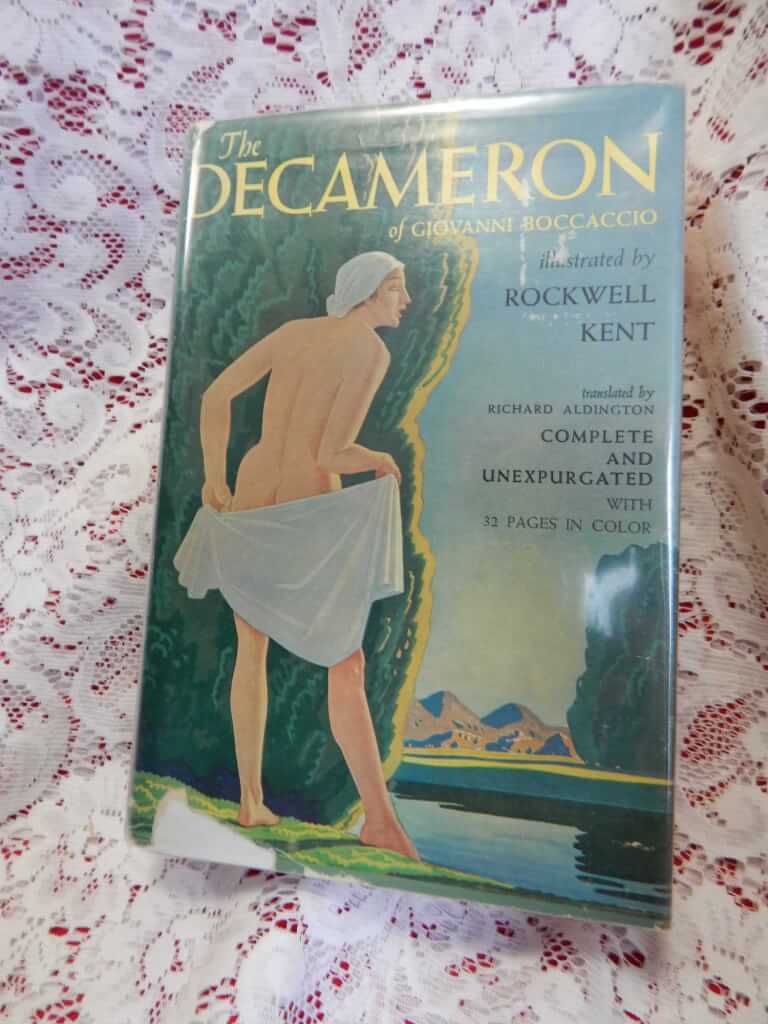
 The Decameron of Giovanni Boccaccio, Giovanni Boccaccio, trans. Richard Aldington, illustrated by Rockwell Kent (Garden City Books, Garden City, NY, 1949 [date of illustrations]) 9 1/2" X 6 3/8", 562pp, hardbound with DJ (with some rips) protected by mylar, green boards with cream spine, great condition. This is the popular (at the time) Garden City edition. Superb art deco color illustrations throughout by Rockwell Kent (famous illustrator of Moby Dick and others). The Decameron, (subtitled Prencipe Galeotto or Prince Galehaut), is a collection of novellas by the 14th-century Italian author Giovanni Boccaccio (1313–1375). The book is structured as a frame story containing 100 tales told by a group of seven young women and three young men sheltering in a secluded villa just outside Florence to escape the Black Death, which was afflicting the city. To make their exile more pleasant each of the ten tells the others one story every day. The Decameron records the narratives of ten days -- 100 stories. Boccaccio probably conceived of The Decameron after the epidemic of 1348, and completed it by 1353. These tales run the entire range of human emotion: grief, love, humor, anger, revenge. Many are based on oral folklore. Boccaccio's ten narrators thus retell already familiar stories about errant priests, rascally husbands, and mischievous wives. Variants of these stories are known in many cultures, but no one formulates them more cleverly or relates them more eloquently than does Boccaccio. In addition to its literary value and widespread influence, it provides a document of life at the time. Written in the vernacular of the Florentine language, it is considered a masterpiece of classical early Italian prose.
The Decameron of Giovanni Boccaccio, Giovanni Boccaccio, trans. Richard Aldington, illustrated by Rockwell Kent (Garden City Books, Garden City, NY, 1949 [date of illustrations]) 9 1/2" X 6 3/8", 562pp, hardbound with DJ (with some rips) protected by mylar, green boards with cream spine, great condition. This is the popular (at the time) Garden City edition. Superb art deco color illustrations throughout by Rockwell Kent (famous illustrator of Moby Dick and others). The Decameron, (subtitled Prencipe Galeotto or Prince Galehaut), is a collection of novellas by the 14th-century Italian author Giovanni Boccaccio (1313–1375). The book is structured as a frame story containing 100 tales told by a group of seven young women and three young men sheltering in a secluded villa just outside Florence to escape the Black Death, which was afflicting the city. To make their exile more pleasant each of the ten tells the others one story every day. The Decameron records the narratives of ten days -- 100 stories. Boccaccio probably conceived of The Decameron after the epidemic of 1348, and completed it by 1353. These tales run the entire range of human emotion: grief, love, humor, anger, revenge. Many are based on oral folklore. Boccaccio's ten narrators thus retell already familiar stories about errant priests, rascally husbands, and mischievous wives. Variants of these stories are known in many cultures, but no one formulates them more cleverly or relates them more eloquently than does Boccaccio. In addition to its literary value and widespread influence, it provides a document of life at the time. Written in the vernacular of the Florentine language, it is considered a masterpiece of classical early Italian prose. -
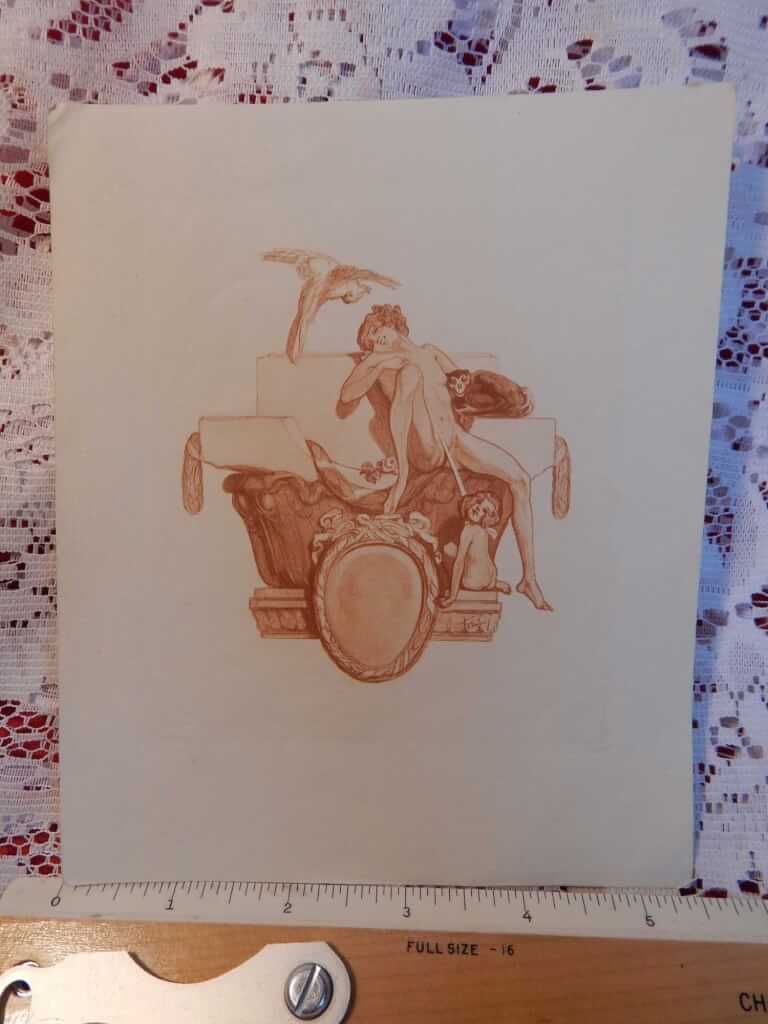 bookplate, by Franz von Bayros paper size 5.5 x 6.5", print size 4 x 4.5", on hand laid paper naked girl, animals, and child Franz von Bayros (1866 – 1924) was an Austrian commercial artist, illustrator, and painter, now he is best known for his erotic work. He belonged to the Decadent movement in art, often utilizing erotic themes and phantasmagoric imagery. At the age 17, Bayros passed the entrance exam for the Vienna Academy with Eduard von Engerth. Bayros mixed in elegant society and soon belonged to the circle of friends of Johann Straub, whose step daughter Alice he married on 1896. The next year, Bayros moved to Munich. In 1904, Bayros gave his first exhibition in Munich, which was a great success. From 1904 until 1908, Bayros traveled to Paris and Italy for his studies. Typically, for an artist dealing with such imagery, von Bayros produced work under several pseudonyms, most notably Choisy Le Conin, and was hounded by authorities for much of his life for his “indecent” art often very imaginative, and including such taboo subjects as sadomasochism and bestiality. He became equally well-known for his masterly drawn figures of elegant modestly nude and non-nude women.
bookplate, by Franz von Bayros paper size 5.5 x 6.5", print size 4 x 4.5", on hand laid paper naked girl, animals, and child Franz von Bayros (1866 – 1924) was an Austrian commercial artist, illustrator, and painter, now he is best known for his erotic work. He belonged to the Decadent movement in art, often utilizing erotic themes and phantasmagoric imagery. At the age 17, Bayros passed the entrance exam for the Vienna Academy with Eduard von Engerth. Bayros mixed in elegant society and soon belonged to the circle of friends of Johann Straub, whose step daughter Alice he married on 1896. The next year, Bayros moved to Munich. In 1904, Bayros gave his first exhibition in Munich, which was a great success. From 1904 until 1908, Bayros traveled to Paris and Italy for his studies. Typically, for an artist dealing with such imagery, von Bayros produced work under several pseudonyms, most notably Choisy Le Conin, and was hounded by authorities for much of his life for his “indecent” art often very imaginative, and including such taboo subjects as sadomasochism and bestiality. He became equally well-known for his masterly drawn figures of elegant modestly nude and non-nude women. -

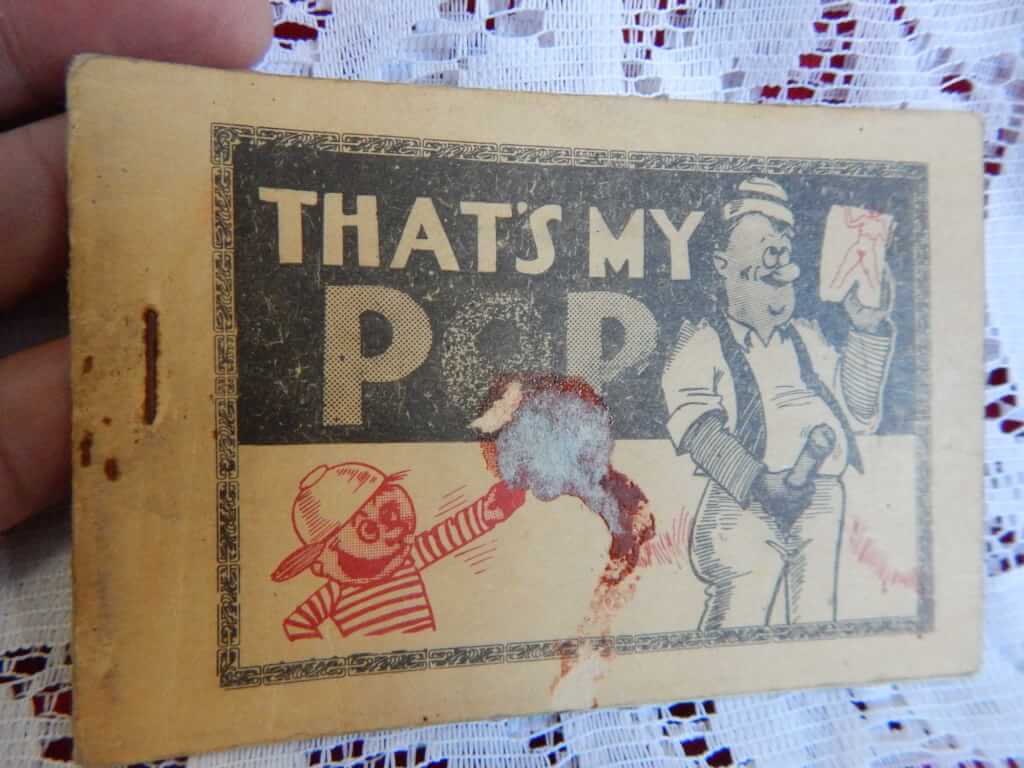 That's My Pop, (np. nd.) 4.5" x 3", 8pp.+2 pages describing sexual positions, pamphlet, stapled Tijuana bibles (also known as eight-pagers, bluesies, gray-backs, Jiggs-and-Maggie books, jo-jo books, Tillie-and-Mac books, and two-by-fours) were little pornographic comic books produced in the United States from the 1920s to the early 1960s.
That's My Pop, (np. nd.) 4.5" x 3", 8pp.+2 pages describing sexual positions, pamphlet, stapled Tijuana bibles (also known as eight-pagers, bluesies, gray-backs, Jiggs-and-Maggie books, jo-jo books, Tillie-and-Mac books, and two-by-fours) were little pornographic comic books produced in the United States from the 1920s to the early 1960s. -
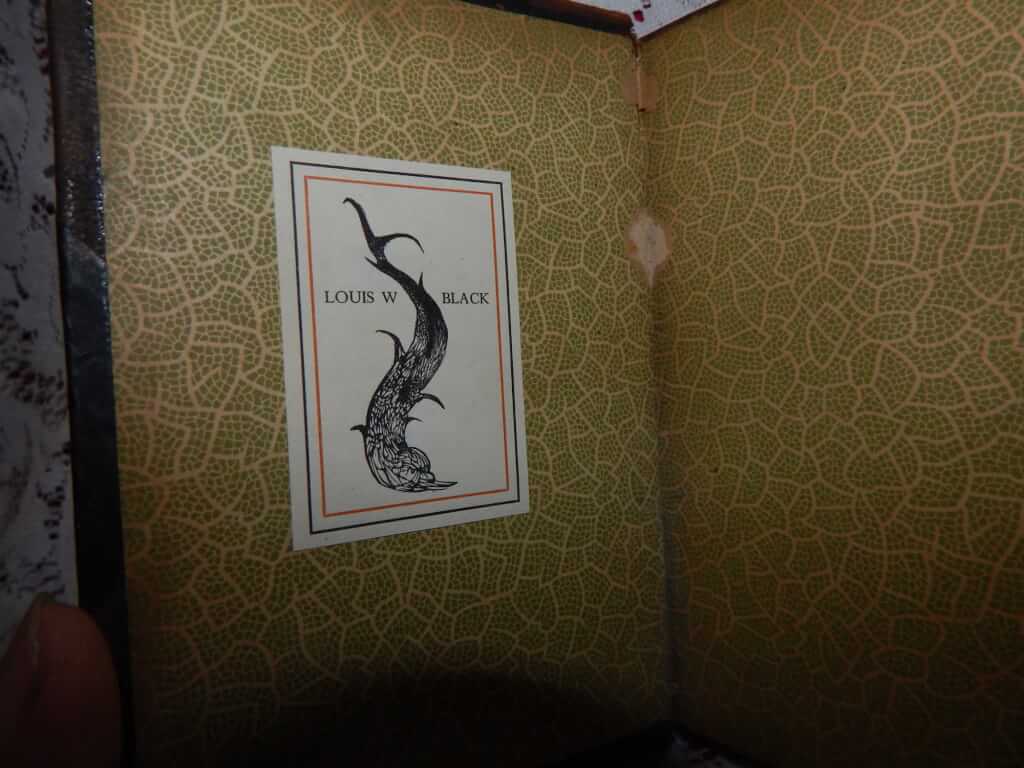
 Gamiani, ou deux nuits d'excés par Alcide, Baron de M***, anonymous [believed to have been written by Alfred de Musset] (G. Lebaucher, Libraire-Éditeur, Montreal, Canada [likely Gaucher, Malakoff, France] nd.) 4.5"x6", 144pp, half morocco over marbled boards, title in gilt on spine, 4 raised bands, boards cracked but holding, just good condition Gamiani, or Two Nights of Excess is a French erotic novel first published in 1833. Its authorship is anonymous, but it is believed to have been written by Alfred de Musset and the lesbian eponymous heroine a portrait of his lover, George Sand. It became a bestseller among nineteenth century erotic literature. Modeled after George Sand, this work gives us a young man named Alcide observing the Countess Gamiani and a young girl named Fanny, engaged in their lesbian bed. Having watched them and provoked by their abandonment, he reveals himself, joins them, and they spend the night alternately sharing their intimate histories and their bodies. The stories they tell include the rape of one in a monastery and the nearly fatal debauchment of another in a convent, as well as encounters with a number of animals, including an ape and a donkey. Elias Gaucher (publisher from 1898 until 1925(?)) was a Clandestine editor who mainly used the pseudonym G. Lebaucher, Libraire-Éditeur, Montreal (Canada), but also Maison Mystère, Imprimerie Galante, etc. This publisher published many erotic underground works in English from 1898 to about 1904 with the mentions "Printed for the Erotica Biblion Society of London and New York", he also published erotic texts in French from 1899. His printing press was actually located at 11 rue Danicourt in Malakoff, France. Gaucher left his works in deposit with booksellers-distributors [...] Most editions of Gaucher are counterfeit editions of Brancart or Hirsch, and Gaucher often republished his own works.
Gamiani, ou deux nuits d'excés par Alcide, Baron de M***, anonymous [believed to have been written by Alfred de Musset] (G. Lebaucher, Libraire-Éditeur, Montreal, Canada [likely Gaucher, Malakoff, France] nd.) 4.5"x6", 144pp, half morocco over marbled boards, title in gilt on spine, 4 raised bands, boards cracked but holding, just good condition Gamiani, or Two Nights of Excess is a French erotic novel first published in 1833. Its authorship is anonymous, but it is believed to have been written by Alfred de Musset and the lesbian eponymous heroine a portrait of his lover, George Sand. It became a bestseller among nineteenth century erotic literature. Modeled after George Sand, this work gives us a young man named Alcide observing the Countess Gamiani and a young girl named Fanny, engaged in their lesbian bed. Having watched them and provoked by their abandonment, he reveals himself, joins them, and they spend the night alternately sharing their intimate histories and their bodies. The stories they tell include the rape of one in a monastery and the nearly fatal debauchment of another in a convent, as well as encounters with a number of animals, including an ape and a donkey. Elias Gaucher (publisher from 1898 until 1925(?)) was a Clandestine editor who mainly used the pseudonym G. Lebaucher, Libraire-Éditeur, Montreal (Canada), but also Maison Mystère, Imprimerie Galante, etc. This publisher published many erotic underground works in English from 1898 to about 1904 with the mentions "Printed for the Erotica Biblion Society of London and New York", he also published erotic texts in French from 1899. His printing press was actually located at 11 rue Danicourt in Malakoff, France. Gaucher left his works in deposit with booksellers-distributors [...] Most editions of Gaucher are counterfeit editions of Brancart or Hirsch, and Gaucher often republished his own works. -
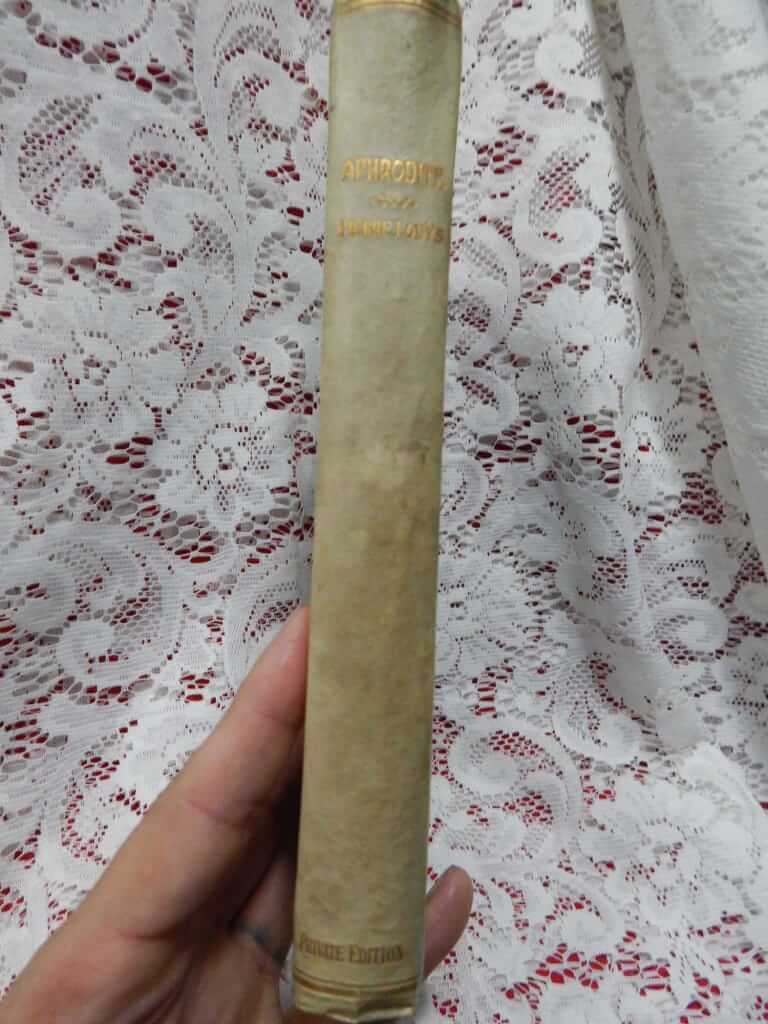
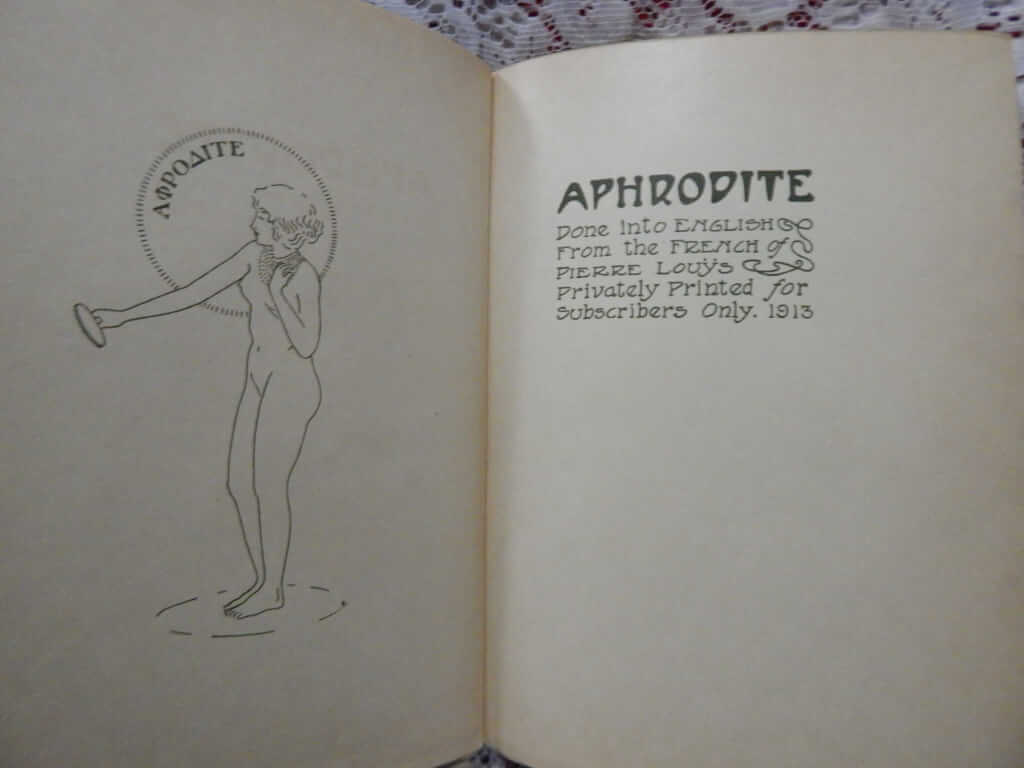 Aphrodite, done into English from the French of Pierre Louys, by Pierre Louÿs, illus. unknown, (Privately Printed for Subscribers Only[Mitchell S. Buck], 1913, #66/550) 6.5"x8.75", xi+258pp+Notes+Index, cream vellum spine over green boards, gilt titles on spine, good condition, some bumping and rubbing Buck's translation is easier to read than Carrington's translation a few years earlier. This was his first book, most likely, self-published and printed by Nicholas L. Brown. Pierre Louys (1870 - 1925) was a French poet and writer, most renowned for lesbian and classical themes in some of his writings. He is known as a writer who "expressed pagan sensuality with stylistic perfection." "Aphrodite: mæurs antiques" (Ancient Manners) is a "libertine" story set in ancient Alexandria. Highlights include the loves of Chrysis, an orgy banquet ending in the crucifixion of a slave, the love of two young musician girls and the festivals of Aphrodite." Mitchell Starrett Buck (February 10, 1887 – May 12, 1959) was an American poet, translator and classical scholar. His volumes of verse and prose poetry were deeply influenced by 1890s aestheticism as well as classical Greek and Roman Literature. Buck’s writing was secondary to his work as a heating engineer, and the money he made professionally allowed him to become a noted book-collector, specializing in first editions, English literature, Greek and Latin classics. Buck’s first book was a translation of Aphrodite by the French decadent Pierre Louÿs (1870-1925). It appeared in 1913, and was “privately printed”, probably at Buck’s expense. It may have been arranged through the Philadelphia bookseller Nicholas L. Brown, who officially became a publisher in 1916, and thereafter issued most of Buck’s output. Between 1916 and 1932, Brown published small editions of poetry, belles lettres, translations, sometimes without his imprint but stating that the title has been “issued privately for subscribers” (in order to evade prosecution for dealing in obscene materials). Such classical erotica is very tame by modern standards, but in the teens and twenties such material was policed by self-appointed authorities such as John S. Sumner of the New York Society for the Suppression of Vice.
Aphrodite, done into English from the French of Pierre Louys, by Pierre Louÿs, illus. unknown, (Privately Printed for Subscribers Only[Mitchell S. Buck], 1913, #66/550) 6.5"x8.75", xi+258pp+Notes+Index, cream vellum spine over green boards, gilt titles on spine, good condition, some bumping and rubbing Buck's translation is easier to read than Carrington's translation a few years earlier. This was his first book, most likely, self-published and printed by Nicholas L. Brown. Pierre Louys (1870 - 1925) was a French poet and writer, most renowned for lesbian and classical themes in some of his writings. He is known as a writer who "expressed pagan sensuality with stylistic perfection." "Aphrodite: mæurs antiques" (Ancient Manners) is a "libertine" story set in ancient Alexandria. Highlights include the loves of Chrysis, an orgy banquet ending in the crucifixion of a slave, the love of two young musician girls and the festivals of Aphrodite." Mitchell Starrett Buck (February 10, 1887 – May 12, 1959) was an American poet, translator and classical scholar. His volumes of verse and prose poetry were deeply influenced by 1890s aestheticism as well as classical Greek and Roman Literature. Buck’s writing was secondary to his work as a heating engineer, and the money he made professionally allowed him to become a noted book-collector, specializing in first editions, English literature, Greek and Latin classics. Buck’s first book was a translation of Aphrodite by the French decadent Pierre Louÿs (1870-1925). It appeared in 1913, and was “privately printed”, probably at Buck’s expense. It may have been arranged through the Philadelphia bookseller Nicholas L. Brown, who officially became a publisher in 1916, and thereafter issued most of Buck’s output. Between 1916 and 1932, Brown published small editions of poetry, belles lettres, translations, sometimes without his imprint but stating that the title has been “issued privately for subscribers” (in order to evade prosecution for dealing in obscene materials). Such classical erotica is very tame by modern standards, but in the teens and twenties such material was policed by self-appointed authorities such as John S. Sumner of the New York Society for the Suppression of Vice. -
 Venus in Furs, Leopold von Sacher-Masoch, trans. Fernanda Savage (Privately Printed For Subscirbers Only. 1921, [first english translation?] limited first edition thus, #400/1225) Venus in Furs (German: Venus im Pelz) is a novella by Leopold Ritter von Sacher-Masoch (1836-1895), an Austrian writer and journalist. It is now his best known work and because of its themes the term masochism is derived from his name, coined by the Austrian psychiatrist, Krafft-Ebing. The novel was to be part of an epic series that Sacher-Masoch envisioned called Legacy of Cain. Venus in Furs was part of Love, the first volume of the series. It was published in 1870. The novel draws themes, like female dominance and sadomasochism, and character inspiration heavily from Sacher-Masoch's own life. Wanda von Dunajew, the novel's central female character, was modelled after his mistress Baroness Fanny Pistor. In December 1869 the two signed a contract making him her slave for a period of 6 months. In 1873, after the publication of Venus in Furs, Sacher-Masoch married Aurora von Rümelin who he pressured to continue the lifestyle he wrote about in his book. After 10 years they divorced. Rümelin, using the pseudonym of the books title character, "Wanda von Dunajew", wrote Meine Lebensbeichte (My Life Confession) published in 1906. It detailed Sacher-Masoch's private life and her relationship with him. During his lifetime, Sacher-Masoch was well known as a man of letters, a utopian thinker who espoused socialist and humanist ideals in his fiction and non-fiction. Most of his works remain untranslated into English. Until recently, his novel Venus in Furs was his only book commonly available in English.
Venus in Furs, Leopold von Sacher-Masoch, trans. Fernanda Savage (Privately Printed For Subscirbers Only. 1921, [first english translation?] limited first edition thus, #400/1225) Venus in Furs (German: Venus im Pelz) is a novella by Leopold Ritter von Sacher-Masoch (1836-1895), an Austrian writer and journalist. It is now his best known work and because of its themes the term masochism is derived from his name, coined by the Austrian psychiatrist, Krafft-Ebing. The novel was to be part of an epic series that Sacher-Masoch envisioned called Legacy of Cain. Venus in Furs was part of Love, the first volume of the series. It was published in 1870. The novel draws themes, like female dominance and sadomasochism, and character inspiration heavily from Sacher-Masoch's own life. Wanda von Dunajew, the novel's central female character, was modelled after his mistress Baroness Fanny Pistor. In December 1869 the two signed a contract making him her slave for a period of 6 months. In 1873, after the publication of Venus in Furs, Sacher-Masoch married Aurora von Rümelin who he pressured to continue the lifestyle he wrote about in his book. After 10 years they divorced. Rümelin, using the pseudonym of the books title character, "Wanda von Dunajew", wrote Meine Lebensbeichte (My Life Confession) published in 1906. It detailed Sacher-Masoch's private life and her relationship with him. During his lifetime, Sacher-Masoch was well known as a man of letters, a utopian thinker who espoused socialist and humanist ideals in his fiction and non-fiction. Most of his works remain untranslated into English. Until recently, his novel Venus in Furs was his only book commonly available in English. -
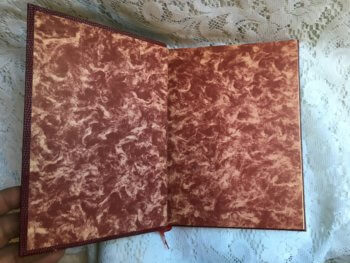
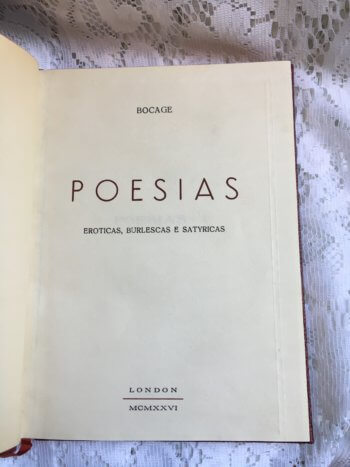 Poesias: eroticas, burlescas e satyricas, Bocage (Manuel Maria Barbosa du Bocage) (np, London, 1926, #443/1000 machine numbered) 6" X 8", 220pp, in Portuguese, hardcover, quarter bound red leather over red pebbled boards, gilt titles and decorations on spine, four raised bands, laid paper, top-edge inked, marbled end papers, ribbon present, a handsome quarter-leather bound copy of a clandestinely published edition of Bocage's unpublishable works. (most copies of this edition are softbound). Manuel Maria Barbosa du Bocage (1765-1805) was a Portuguese Neoclassic poet, writing at the beginning of his career under the pen name Elmano Sadino. He aspired to be a second Camões. He was born, the son of a lawyer, in Setúbal, Portugal. He is said to to have made verses in infancy, and being somewhat of a prodigy grew up to be flattered, self-conscious and unstable. He left home at age 14 to join the army then transfered to the navy at age 16. While in the military he devoted most of his energies to love affairs, poetry, and bohemianism. Eventually, like his hero Camões, he was sent to India and became disillusioned by the Orient. He deserted to Macau, returning to Lisbon in 1790. He then joined the New Arcadia, a literary society with vaguely egalitarian and libertarian sympathies, but his satires on his fellow members resulted in his expulsion. In 1797 he was accused of propagating republicanism and atheism and was imprisoned. During his imprisonment he undertook translations of Virgil and Ovid. Translations provided him with a livelihood during the few years that he lived after his release. Despite the Neoclassical framework of his poetry, his intensely personal accent, frequent violence of expression, and self-dramatizing obsession with fate and death anticipate Romanticism. The subversiveness of his poems has meant that for much of the last 200 years they have not been (officially) available in Portugal.
Poesias: eroticas, burlescas e satyricas, Bocage (Manuel Maria Barbosa du Bocage) (np, London, 1926, #443/1000 machine numbered) 6" X 8", 220pp, in Portuguese, hardcover, quarter bound red leather over red pebbled boards, gilt titles and decorations on spine, four raised bands, laid paper, top-edge inked, marbled end papers, ribbon present, a handsome quarter-leather bound copy of a clandestinely published edition of Bocage's unpublishable works. (most copies of this edition are softbound). Manuel Maria Barbosa du Bocage (1765-1805) was a Portuguese Neoclassic poet, writing at the beginning of his career under the pen name Elmano Sadino. He aspired to be a second Camões. He was born, the son of a lawyer, in Setúbal, Portugal. He is said to to have made verses in infancy, and being somewhat of a prodigy grew up to be flattered, self-conscious and unstable. He left home at age 14 to join the army then transfered to the navy at age 16. While in the military he devoted most of his energies to love affairs, poetry, and bohemianism. Eventually, like his hero Camões, he was sent to India and became disillusioned by the Orient. He deserted to Macau, returning to Lisbon in 1790. He then joined the New Arcadia, a literary society with vaguely egalitarian and libertarian sympathies, but his satires on his fellow members resulted in his expulsion. In 1797 he was accused of propagating republicanism and atheism and was imprisoned. During his imprisonment he undertook translations of Virgil and Ovid. Translations provided him with a livelihood during the few years that he lived after his release. Despite the Neoclassical framework of his poetry, his intensely personal accent, frequent violence of expression, and self-dramatizing obsession with fate and death anticipate Romanticism. The subversiveness of his poems has meant that for much of the last 200 years they have not been (officially) available in Portugal. -
Out of stock
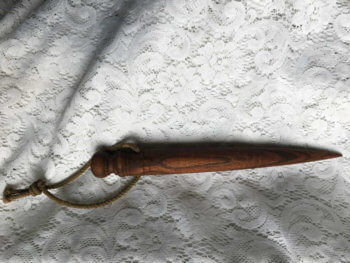
 Fid from India 13.5" long, 1.5" at widest part, unknown wood, with original rope A fid is a conical tool made of wood or bone. It is used to work with rope and canvas in seamanship. A fid is used to hold open knots and holes in canvas or to open the "lays", or strands of rope, for splicing.
Fid from India 13.5" long, 1.5" at widest part, unknown wood, with original rope A fid is a conical tool made of wood or bone. It is used to work with rope and canvas in seamanship. A fid is used to hold open knots and holes in canvas or to open the "lays", or strands of rope, for splicing. -
 The Love Books of Ovid, A Completely Unexpurgated and Newly Translated Edition by Charles D. Young | Together with the Elegie, Translated by Christopher Marlowe | Illustrated by Alexander King "This book, designed by T. Spencer Hutson, was printed at the Alexander Hamilton Press, in March 1930. Illustrations are reproduced by the Knudson process. This edition consists of Two Thousand numbered copies printed on Strathmore MELDON deckle edge laid paper. This copy is No. 361" (Privately Published for Subscribers, Art Studio Books, Inc., 1930, #361/2000) 6.25"x9.5", iii+302pp, 3/4 black cloth over marbled boards, gilt text and decorations on spine, gilt borders on covers, marbled pastdowns, top edge gilt, other edges deckled, frontispiece and 16 full-page illustrations with descriptive tissue guards, other illustrations and titles in orange within text, near fine copy, slight rubbing at top and bottom of spine. This is a beautiful edition of 5 of his works, Ars Amatoria ("The Art of Love"), Remedia Amoris ("The Cure for Love"), Amores ("The Loves"), Medicamina Faciei ("dye on the face"), and his Elegies Publius Ovidius Naso (43 BC – AD 17/18), known as Ovid in the English-speaking world, was a Roman poet who lived during the reign of Augustus. He was a contemporary of the older Virgil and Horace, with whom he is often ranked as one of the three canonical poets of Latin literature. The Imperial scholar Quintilian considered him the last of the Latin love elegists. He enjoyed enormous popularity, but, in one of the mysteries of literary history, was sent by Augustus into exile in a remote province on the Black Sea, where he remained until his death. Ovid himself attributes his exile to carmen et error, "a poem and a mistake", but his discretion in discussing the causes has resulted in much speculation among scholars. The first major Roman poet to begin his career during the reign of Augustus, Ovid is today best known for the Metamorphoses, a 15-book continuous mythological narrative written in the meter of epic, and for works in elegiac couplets such as Ars Amatoria ("The Art of Love") and Fasti. His poetry was much imitated during Late Antiquity and the Middle Ages, and greatly influenced Western art and literature. The Metamorphoses remains one of the most important sources of classical mythology. Alexander King (1899–1965), born Alexander Koenig in Vienna, was a bestselling humorist, memoirist and media personality of the early television era, based in the United States. In his late fifties, after becoming a frequent guest on the a Tonight Show hosted by Jack Paar, King emerged as an incongruous presence in the realm of national celebrity: an aging, irascible raconteur, with elegant mannerisms and trademark bow-tie, who spoke frankly and disarmingly about his bohemian lifestyle, multiple marriages, and years-long struggle with drug addiction. His checkered past led TIME magazine to describe him as "an ex-illustrator, ex-cartoonist, ex-adman, ex-editor, ex-playwright, ex-dope addict. For a quarter-century he was an ex-painter, and by his own bizarre account qualifies as an ex-midwife. He is also an ex-husband to three wives and an ex-Viennese of sufficient age (60) to remember muttonchopped Emperor Franz Joseph. When doctors told him a few years ago that he might soon be an ex-patient (two strokes, serious kidney disease, peptic ulcer, high blood pressure), he sat down to tell gay stories of the life of all these earlier Kings."
The Love Books of Ovid, A Completely Unexpurgated and Newly Translated Edition by Charles D. Young | Together with the Elegie, Translated by Christopher Marlowe | Illustrated by Alexander King "This book, designed by T. Spencer Hutson, was printed at the Alexander Hamilton Press, in March 1930. Illustrations are reproduced by the Knudson process. This edition consists of Two Thousand numbered copies printed on Strathmore MELDON deckle edge laid paper. This copy is No. 361" (Privately Published for Subscribers, Art Studio Books, Inc., 1930, #361/2000) 6.25"x9.5", iii+302pp, 3/4 black cloth over marbled boards, gilt text and decorations on spine, gilt borders on covers, marbled pastdowns, top edge gilt, other edges deckled, frontispiece and 16 full-page illustrations with descriptive tissue guards, other illustrations and titles in orange within text, near fine copy, slight rubbing at top and bottom of spine. This is a beautiful edition of 5 of his works, Ars Amatoria ("The Art of Love"), Remedia Amoris ("The Cure for Love"), Amores ("The Loves"), Medicamina Faciei ("dye on the face"), and his Elegies Publius Ovidius Naso (43 BC – AD 17/18), known as Ovid in the English-speaking world, was a Roman poet who lived during the reign of Augustus. He was a contemporary of the older Virgil and Horace, with whom he is often ranked as one of the three canonical poets of Latin literature. The Imperial scholar Quintilian considered him the last of the Latin love elegists. He enjoyed enormous popularity, but, in one of the mysteries of literary history, was sent by Augustus into exile in a remote province on the Black Sea, where he remained until his death. Ovid himself attributes his exile to carmen et error, "a poem and a mistake", but his discretion in discussing the causes has resulted in much speculation among scholars. The first major Roman poet to begin his career during the reign of Augustus, Ovid is today best known for the Metamorphoses, a 15-book continuous mythological narrative written in the meter of epic, and for works in elegiac couplets such as Ars Amatoria ("The Art of Love") and Fasti. His poetry was much imitated during Late Antiquity and the Middle Ages, and greatly influenced Western art and literature. The Metamorphoses remains one of the most important sources of classical mythology. Alexander King (1899–1965), born Alexander Koenig in Vienna, was a bestselling humorist, memoirist and media personality of the early television era, based in the United States. In his late fifties, after becoming a frequent guest on the a Tonight Show hosted by Jack Paar, King emerged as an incongruous presence in the realm of national celebrity: an aging, irascible raconteur, with elegant mannerisms and trademark bow-tie, who spoke frankly and disarmingly about his bohemian lifestyle, multiple marriages, and years-long struggle with drug addiction. His checkered past led TIME magazine to describe him as "an ex-illustrator, ex-cartoonist, ex-adman, ex-editor, ex-playwright, ex-dope addict. For a quarter-century he was an ex-painter, and by his own bizarre account qualifies as an ex-midwife. He is also an ex-husband to three wives and an ex-Viennese of sufficient age (60) to remember muttonchopped Emperor Franz Joseph. When doctors told him a few years ago that he might soon be an ex-patient (two strokes, serious kidney disease, peptic ulcer, high blood pressure), he sat down to tell gay stories of the life of all these earlier Kings." -
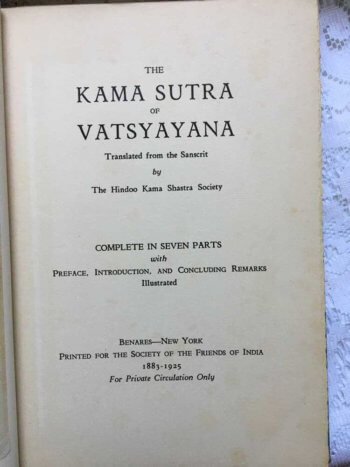
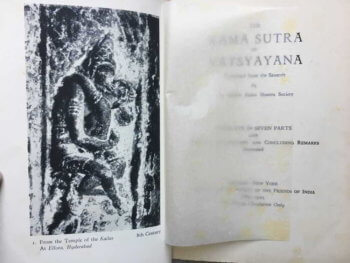 <strong>The Kama Sutra of Vatsyayana | Translated from the Sanscrit by The Hindoo Kama Shastra Society | Complete in seven parts with Preface, Introduction, and Concluding Remarks | Illustrated</strong>, by Vatsyayana (Printed for the Society of the Friends of India 1883-1925, Benares-New York, one of 800, unnumbered) <em>6"x9", xxi+175pp, hardbound, blue boards, hand laid paper, top-edge gilt, others deckled, 8 B/W half-tone reproductions of erotic Hindu stone-sculptures with tissue guards, soiling on boards, inner pages are clean, binding is good.</em> Attributed to ancient Indian philosopher Vatsyayana, the Kama Sutra is generally believed to have been composed between 400 and 200 B.C.E. Although a portion of the work consists of practical advice on sexual intercourse, the work is primarily prose consisting of 1250 verses distributed over 36 chapters structured into seven parts. This book lists those parts as: Part I. Index, and General Consideration of the Subject Part II. Of Sexual Union Part III. About the Acquisition of a Wife Part IV. About a Wife Part V. About the Wives of Other People Part VI. About Courtezans Part VII. On the Means of Attracting Others to Oneself
<strong>The Kama Sutra of Vatsyayana | Translated from the Sanscrit by The Hindoo Kama Shastra Society | Complete in seven parts with Preface, Introduction, and Concluding Remarks | Illustrated</strong>, by Vatsyayana (Printed for the Society of the Friends of India 1883-1925, Benares-New York, one of 800, unnumbered) <em>6"x9", xxi+175pp, hardbound, blue boards, hand laid paper, top-edge gilt, others deckled, 8 B/W half-tone reproductions of erotic Hindu stone-sculptures with tissue guards, soiling on boards, inner pages are clean, binding is good.</em> Attributed to ancient Indian philosopher Vatsyayana, the Kama Sutra is generally believed to have been composed between 400 and 200 B.C.E. Although a portion of the work consists of practical advice on sexual intercourse, the work is primarily prose consisting of 1250 verses distributed over 36 chapters structured into seven parts. This book lists those parts as: Part I. Index, and General Consideration of the Subject Part II. Of Sexual Union Part III. About the Acquisition of a Wife Part IV. About a Wife Part V. About the Wives of Other People Part VI. About Courtezans Part VII. On the Means of Attracting Others to Oneself












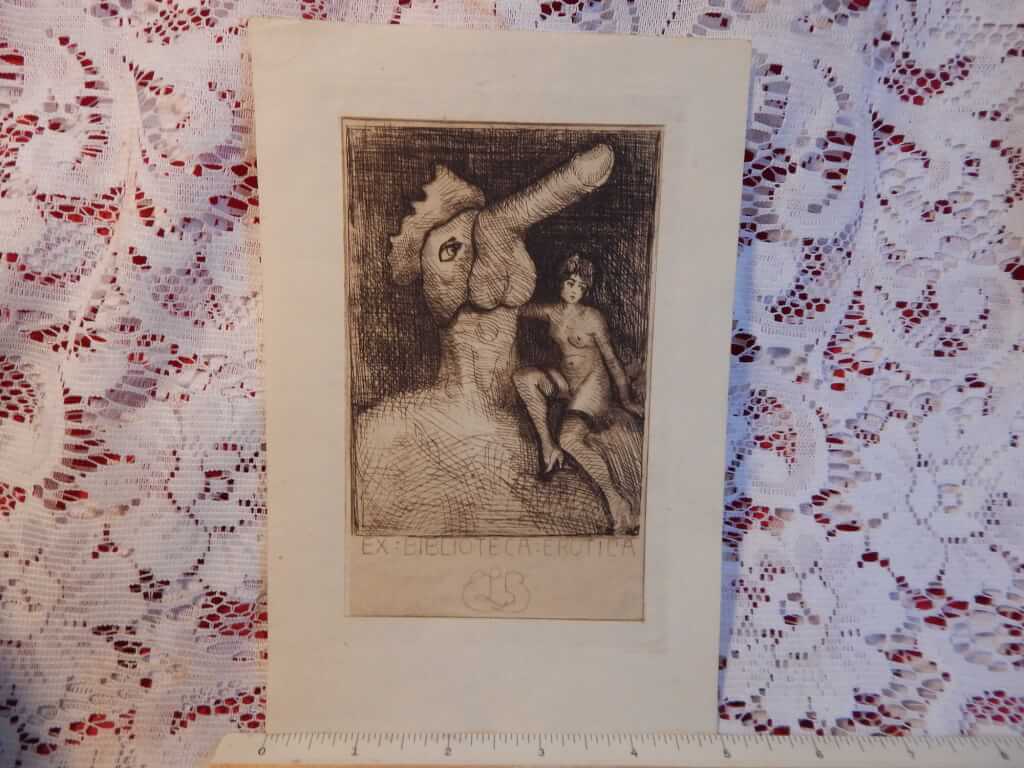



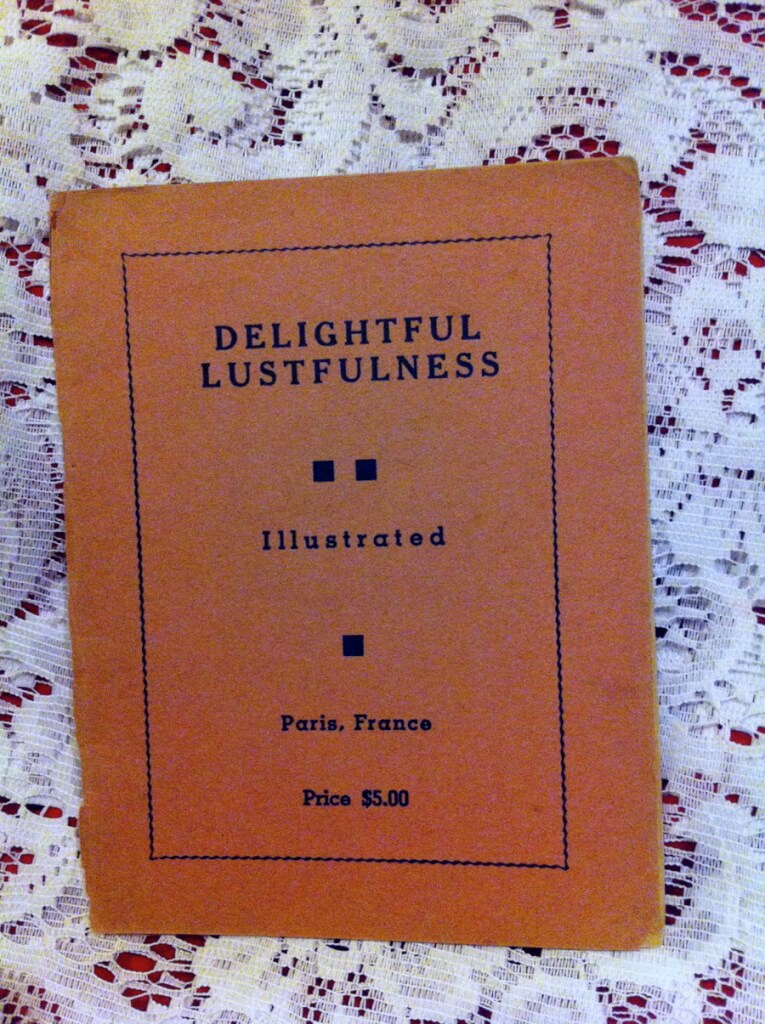
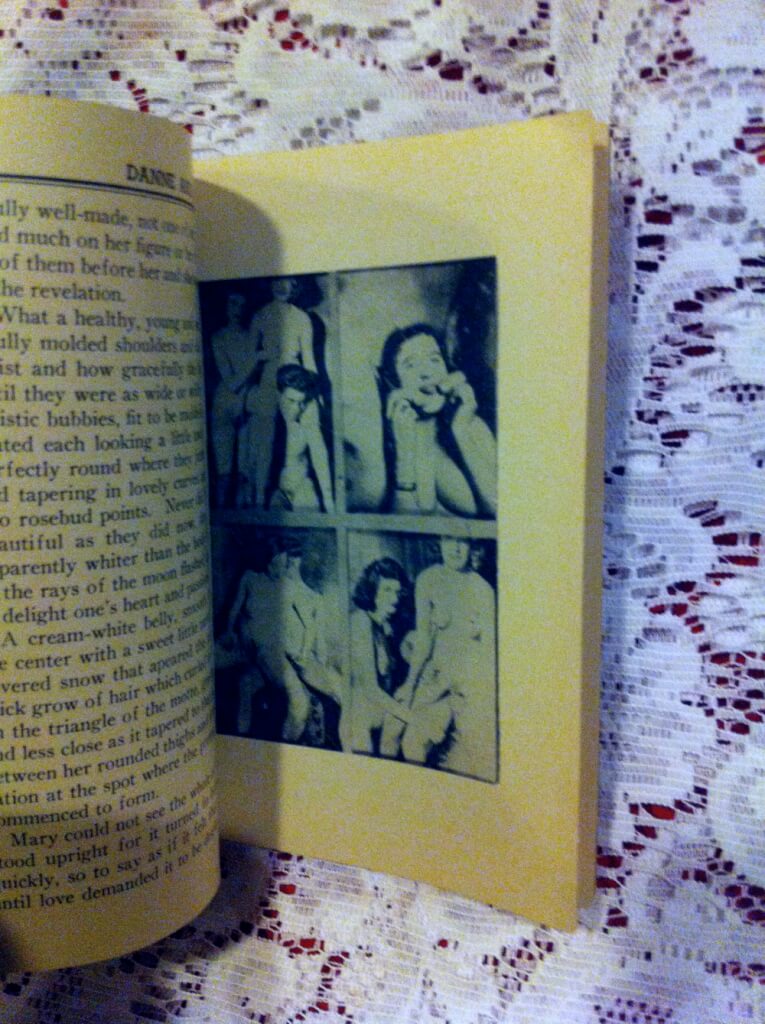
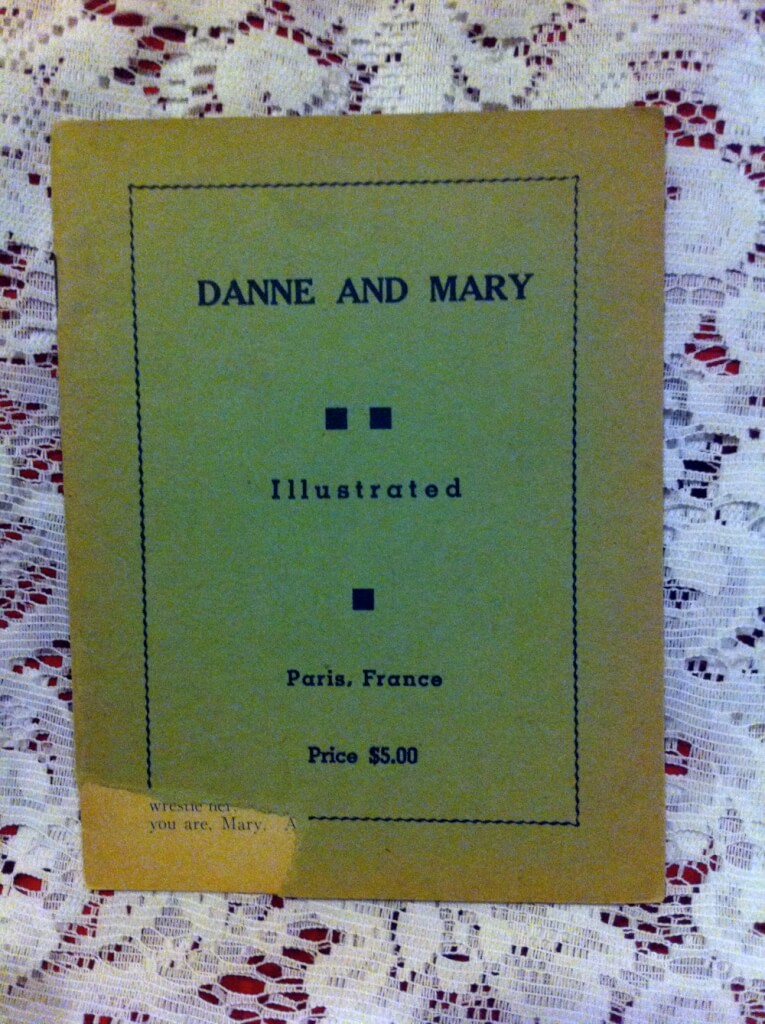
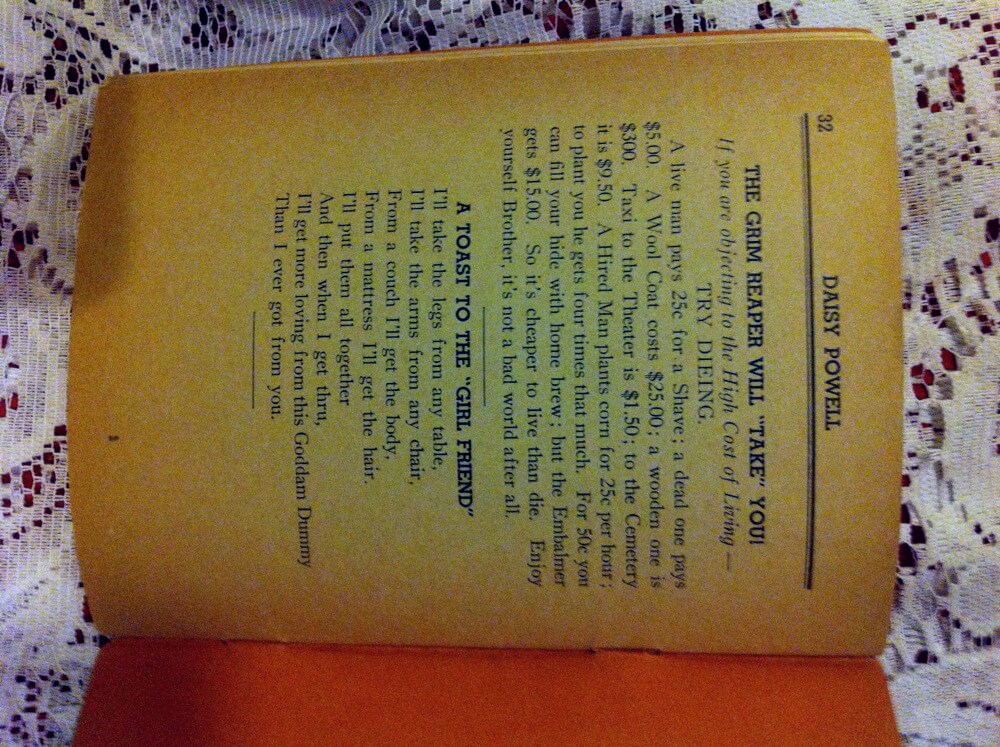
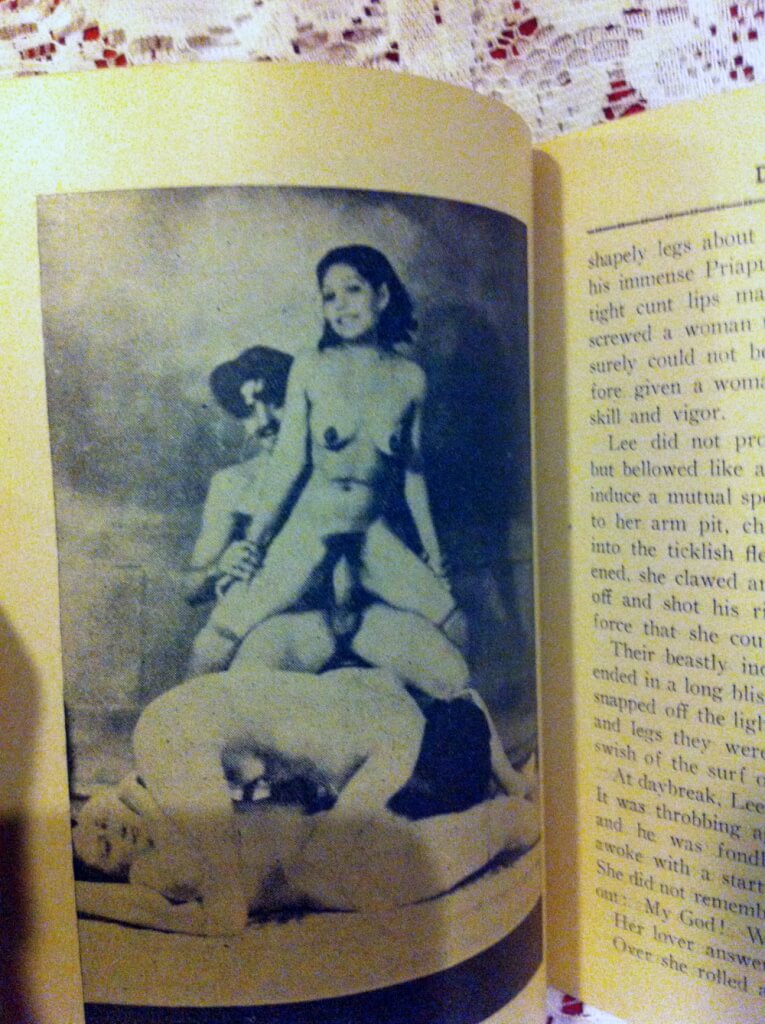
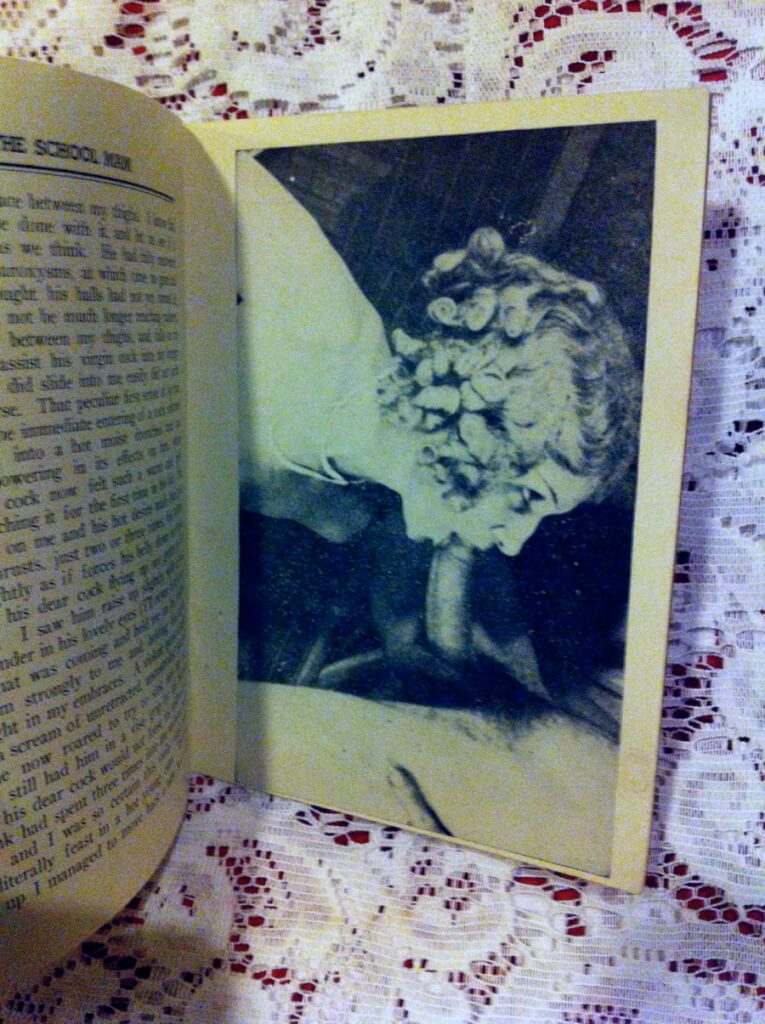
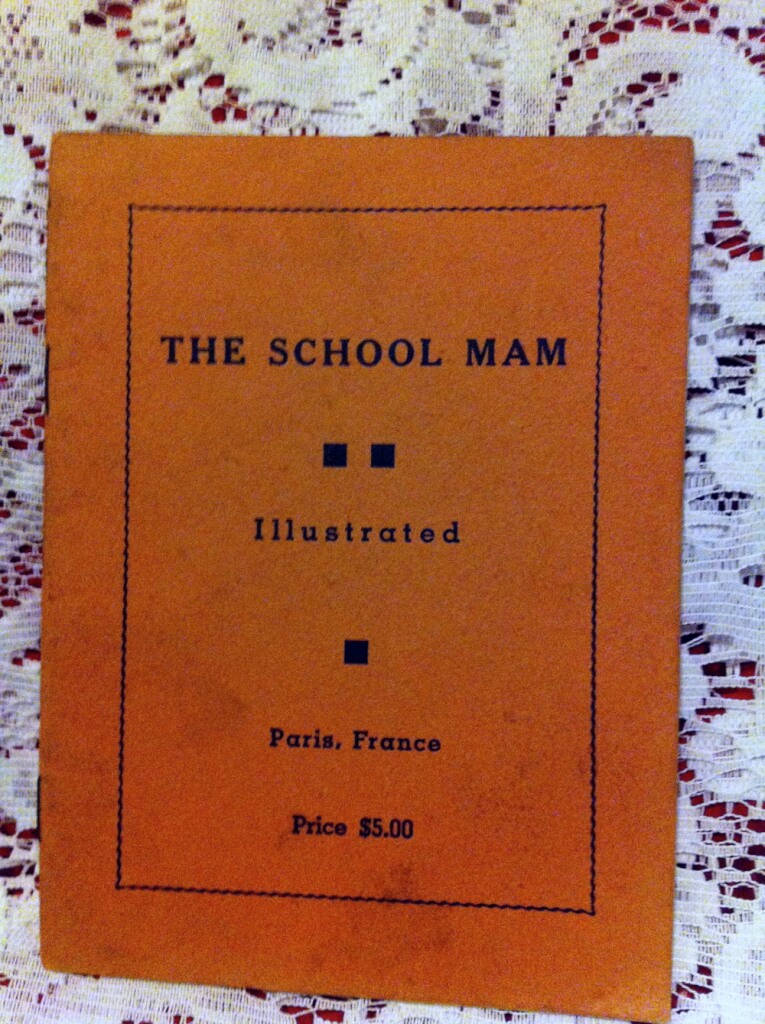
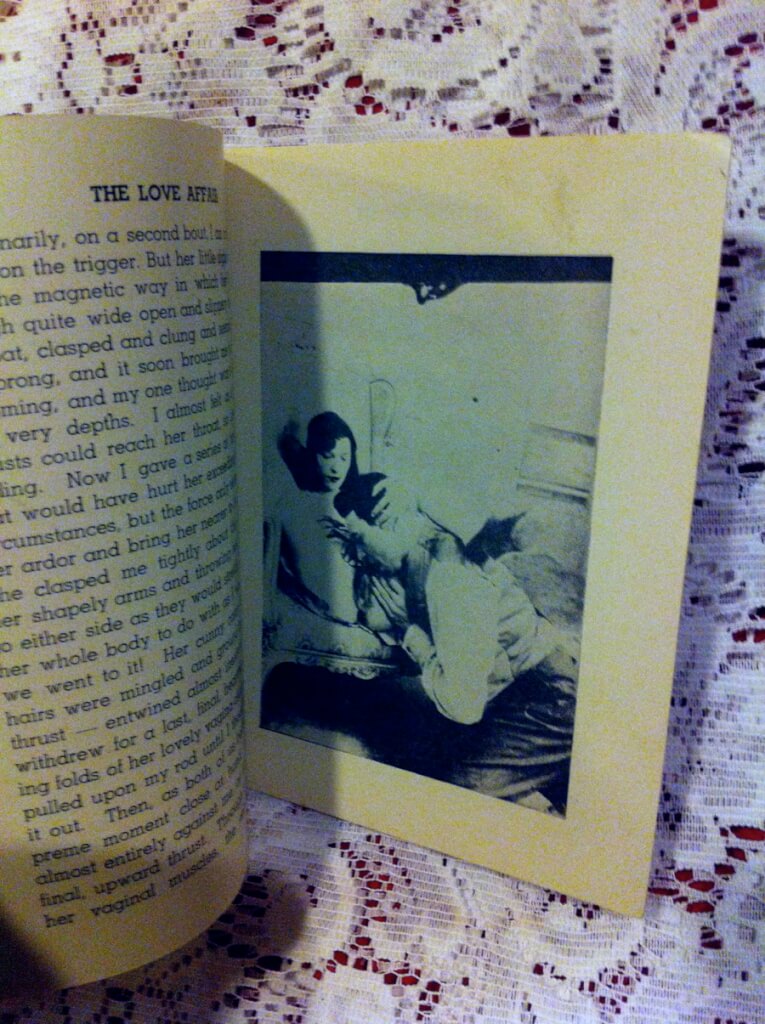
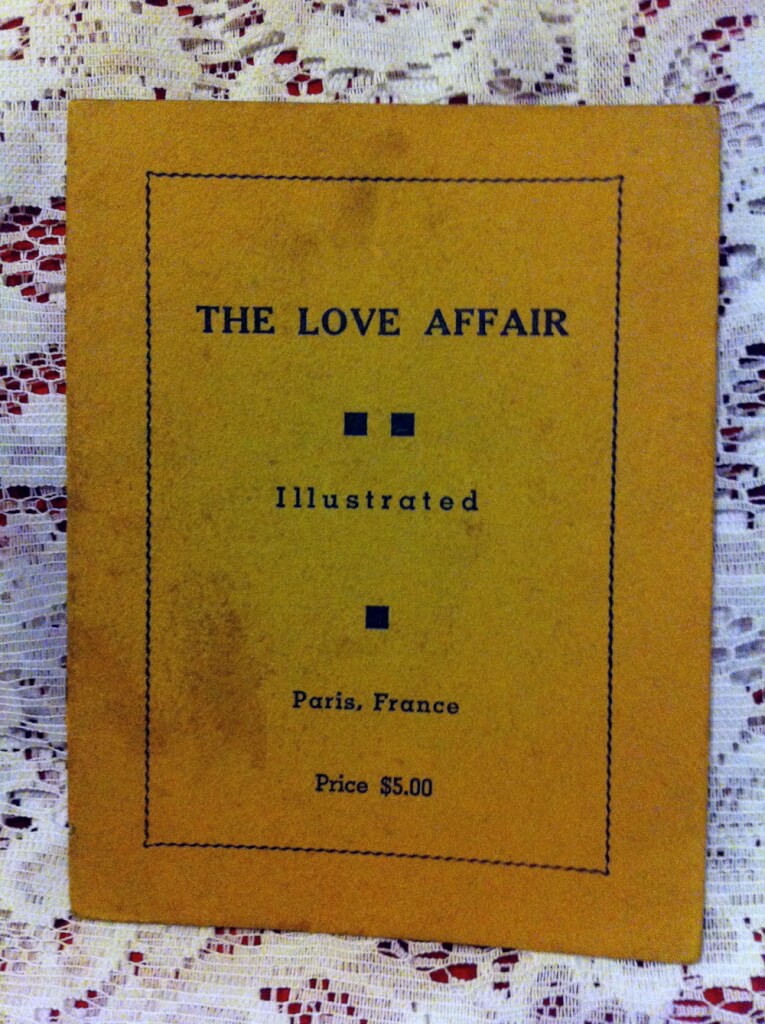
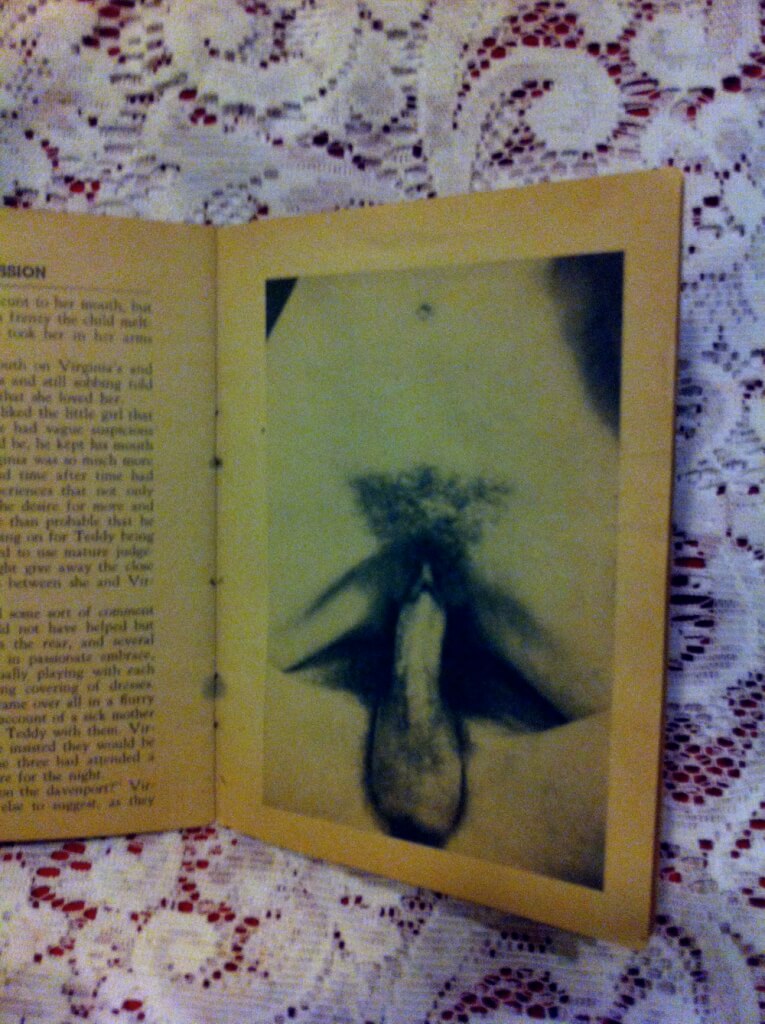
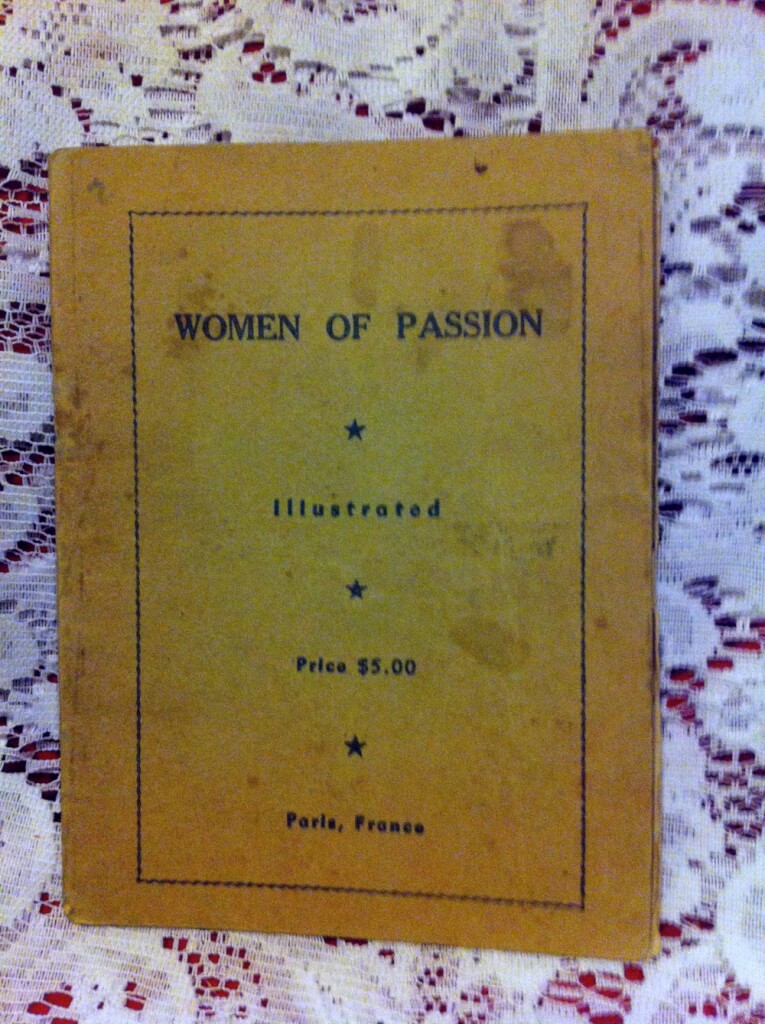
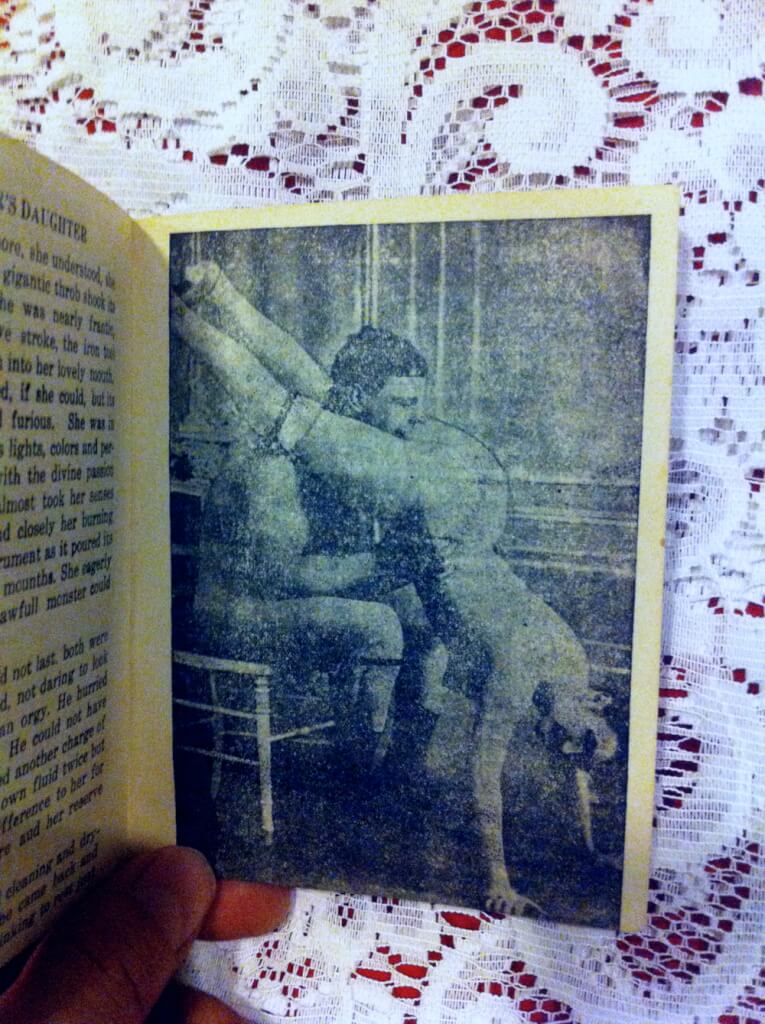
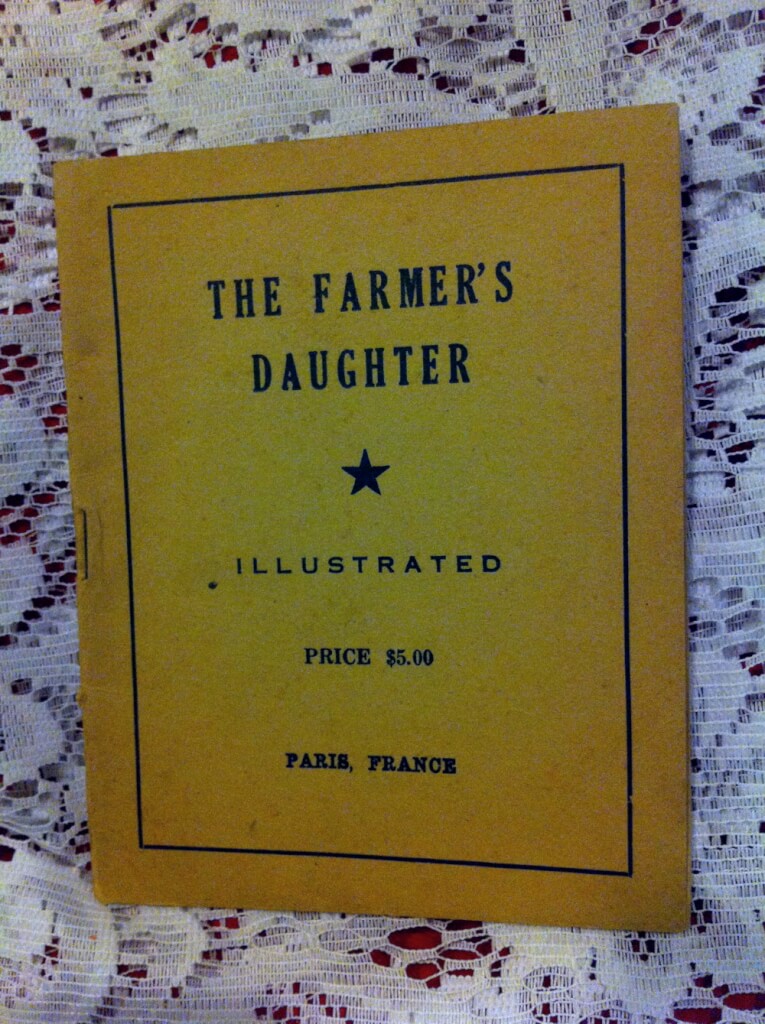

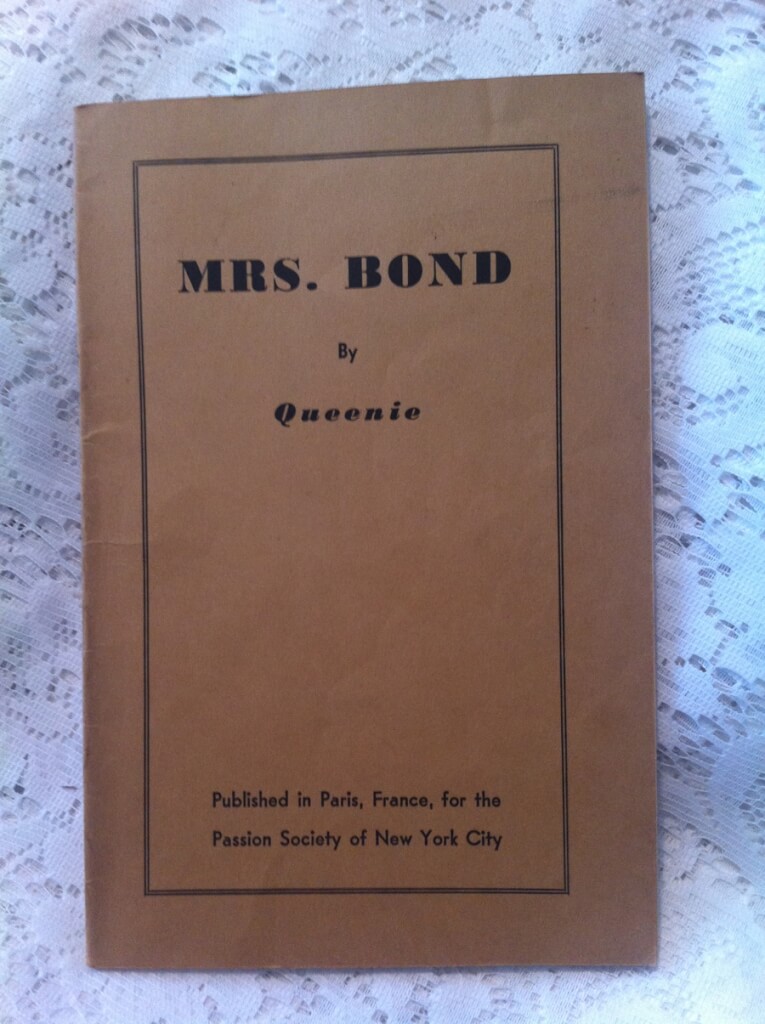
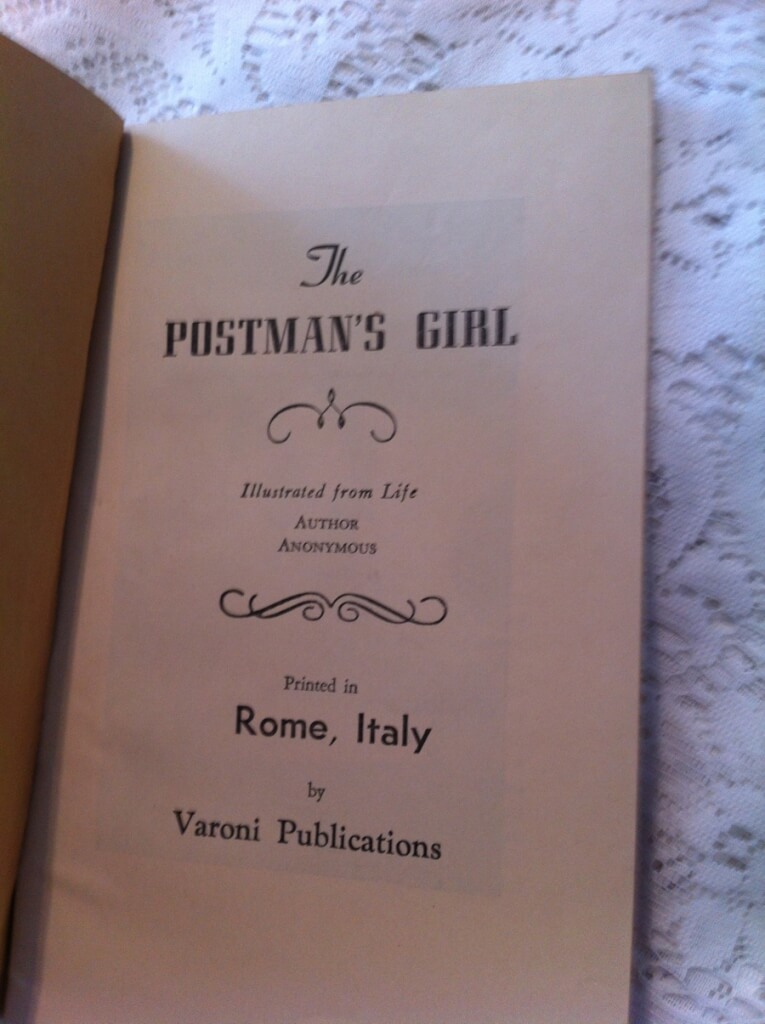
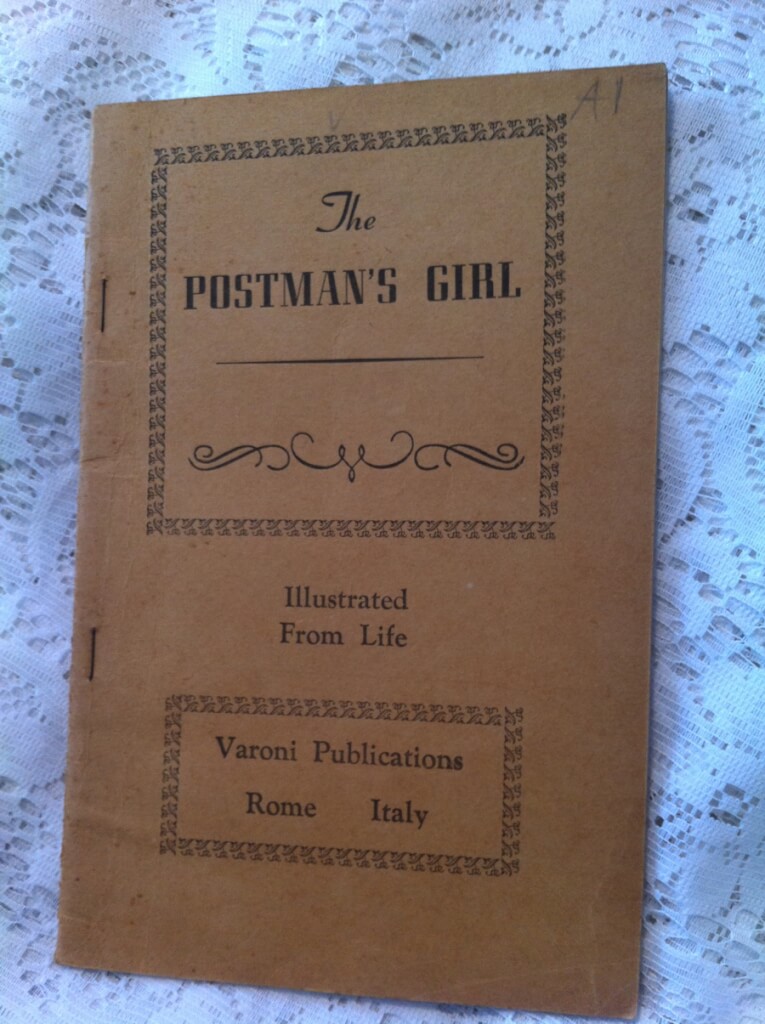
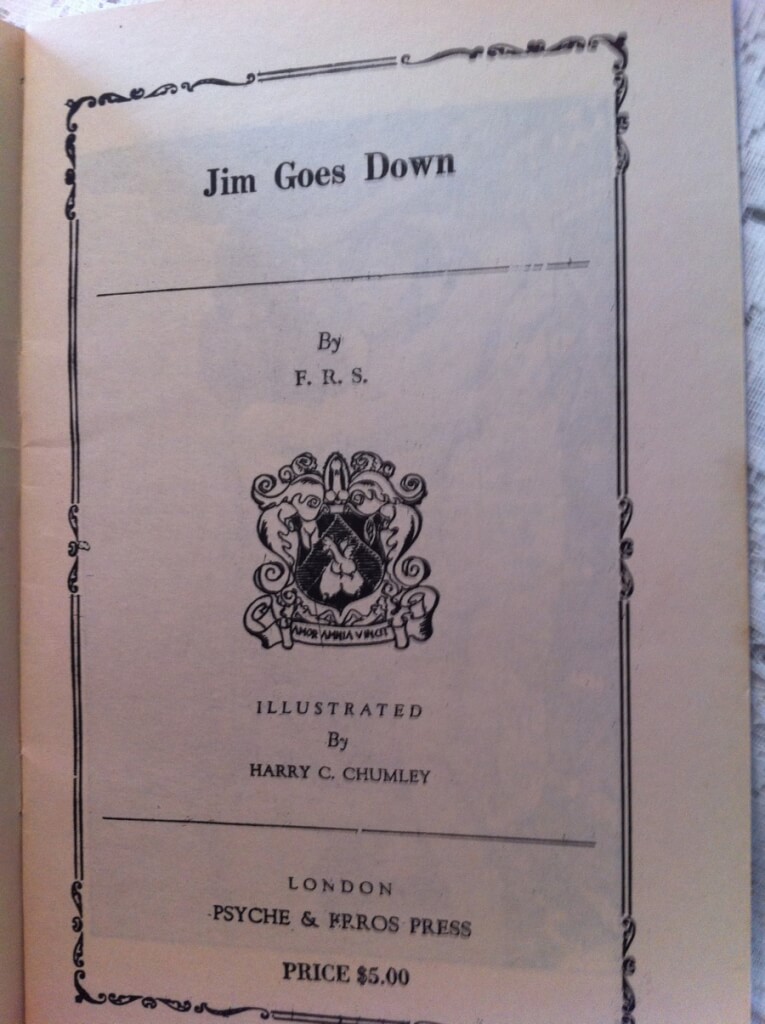

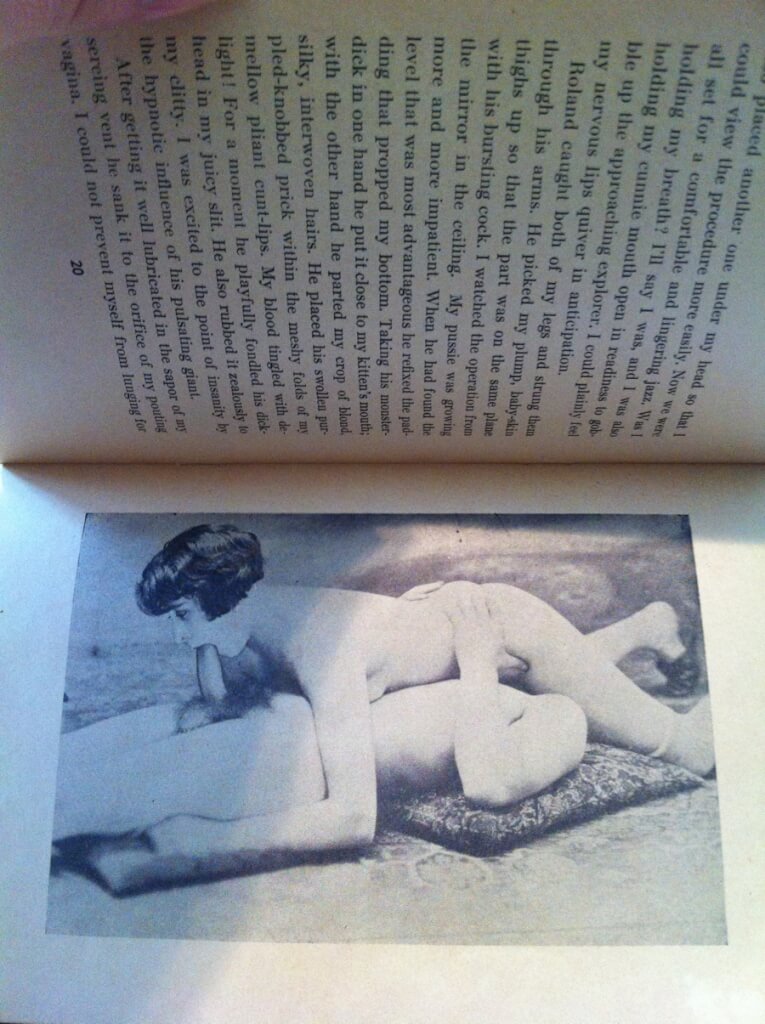
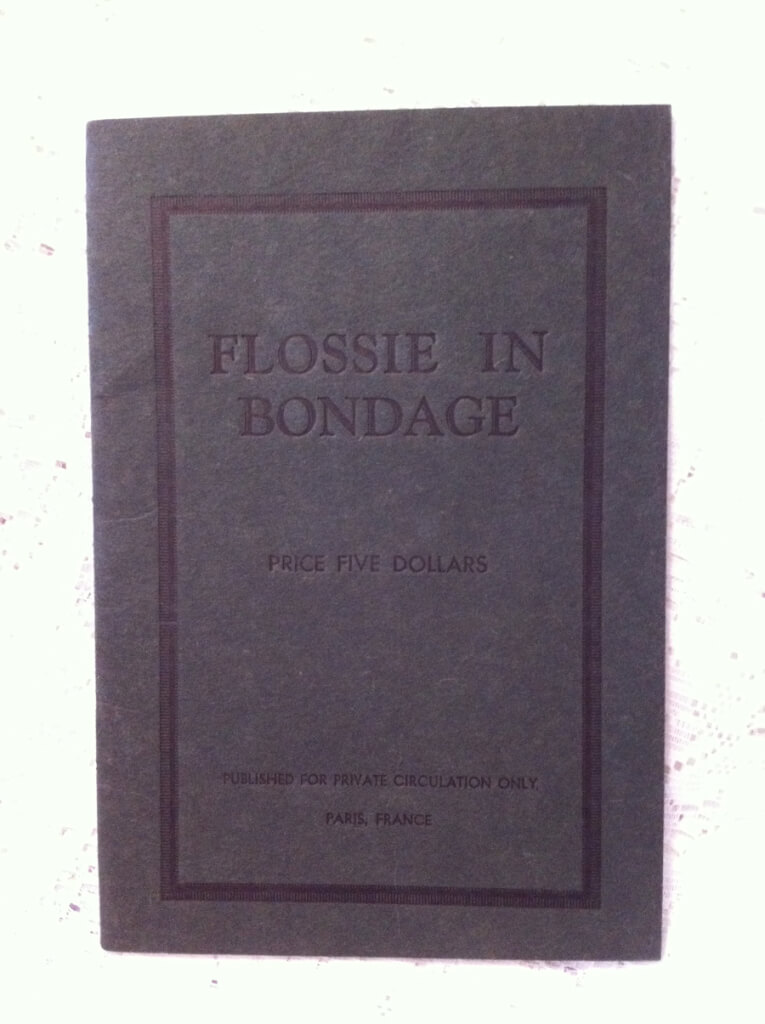
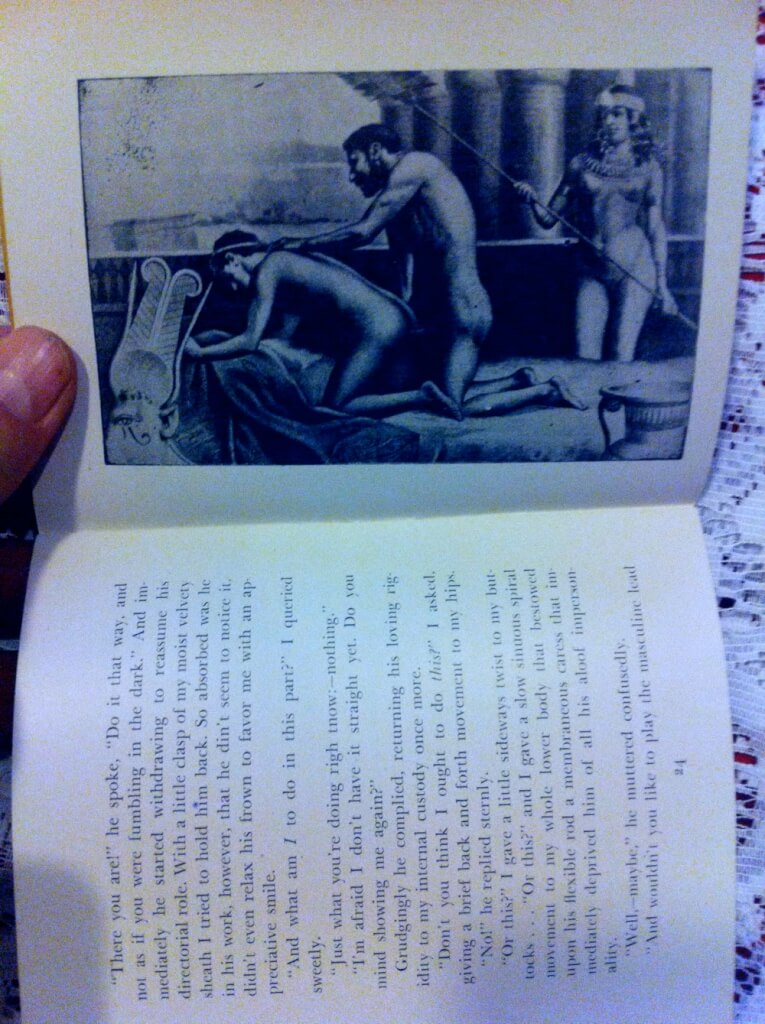
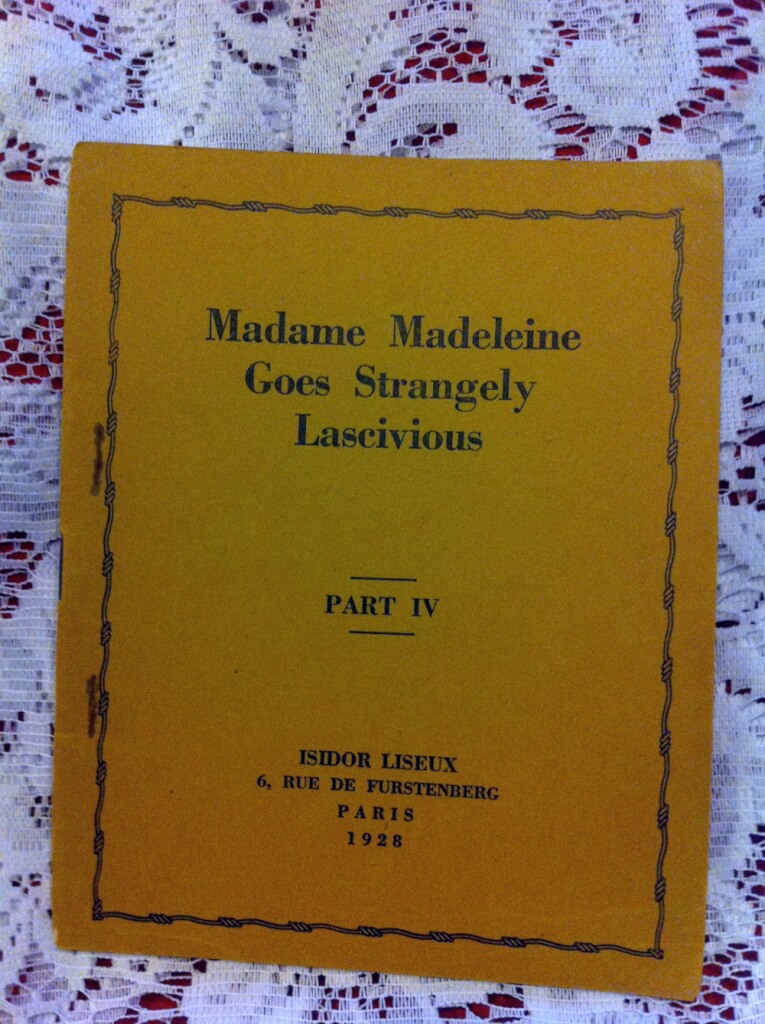

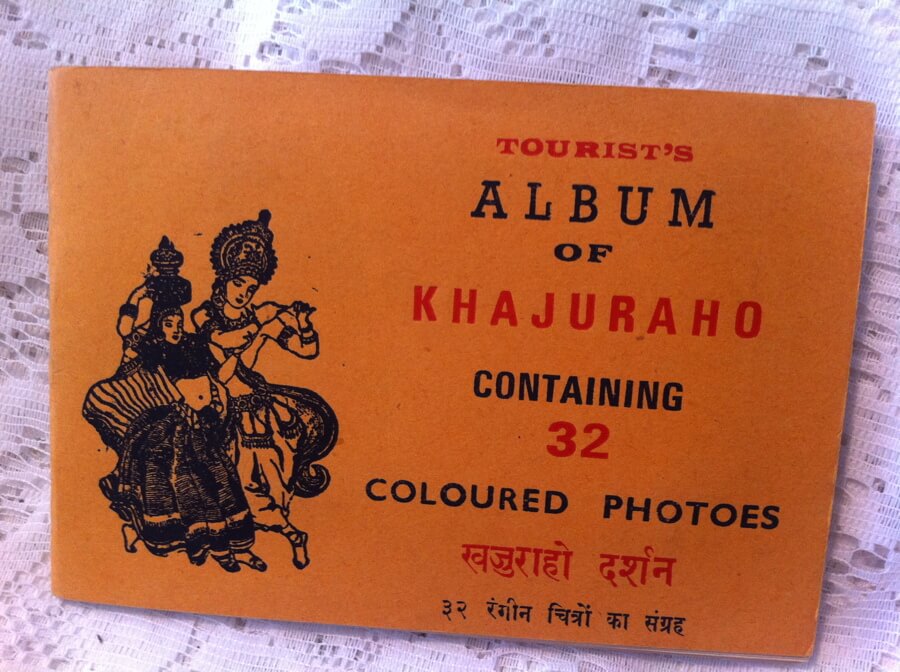


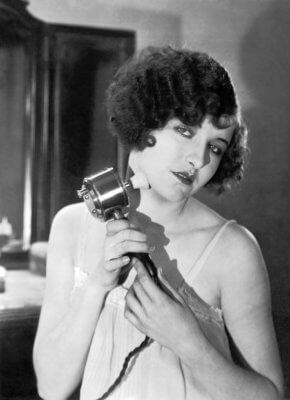 c. 1927 Actress Colleen Moore using a Star-Rite electric massage vibrator in Hollywood.
c. 1927 Actress Colleen Moore using a Star-Rite electric massage vibrator in Hollywood. 


